

Adani Foundation’s Sathwaro is serving as a bridge between the past, the present to preserve India's cultural legacy for the future.
The Artistic Riches of India
editor’s note
Issue 8 | November 2023

“Celebrating the colourful essence of November.”
As we bid adieu to the radiant festivities of Diwali and Durga puja, the air is still filled with the lingering warmth of shared moments and the promise of a prosperous future. Welcome to the eighth edition of a-connect, where we encapsulate the spirit of this sweet November and reflect on the diverse hues that painted our days.
Our cover story unfolds the enchanting tale of Sathwaro, a dedicated initiative by the Adani Foundation. It was a mesmerising event that beckoned the festive season, taking every Adanian on a journey where the heartbeats of India’s diverse states resonates through the craftsmanship of its artisans.
In a historic feat, this edition proudly shares the milestone of Adani powering 3 million households and establishments, comprising over 12 million Mumbaikars, entirely through ‘clean’ renewable energy sources this Diwali. This achievement underscores our commitment to sustainable development and responsible environmental practices.
As we revel in the success of the festive season, this edition also sheds light on the potential impact of celebratory indulgences on health, celebrating the festival together as one big family and striking a perfect equilibrium in work-life. It is a gentle reminder of the need for mindful celebrations and a balanced approach to our well-being.
Furthermore, we bring you the robust Q2 FY24 results of the Adani portfolio, showcasing resilience and growth in the face of challenges. The pages of this edition also unfold the intriguing journey of Vizhinjam Port, transitioning from an ancient trade hub to a modern maritime marvel, navigating the waves of history and progress.
As you flip through these pages, join us in celebrating the colourful essence of November. Embrace the cultural richness, applaud the triumphs and eagerly anticipate the promise of a harmonious and sustainable future.
Here’s to a November that wraps you in warmth, showers you with success and dances with joy in every step.
Cheers to a month as vibrant as our cover story!
contents
Adani Electrifies Mumbai With 100% Renewable Energy
Adani Electricity achieves a historic milestone by powering Mumbai with 100% clean energy on Diwali.
impact
Kandarp Patel
Diwali, the festival of lights, holds a special place in our hearts as it symbolises the triumph of good over evil. It is a time of unity and celebration, a time to come together and embrace the values that have guided us through generations. At Adani Electricity, we hold these timeless values close to our core, and they drive our unwavering commitment to sustainability and environmental stewardship.
For the very first time in India's history, 3 million households and establishments, comprising over 12 million Mumbaikars, were powered entirely by 'clean' renewable energy sources. This monumental achievement underscores our dedication to sustainable development and responsible environmental practices. It is a testament to the dedication of our team, the support of our consumers, and the promise of a brighter future.
From 10 am to 2 pm, we met the electricity needs of the entire city of Mumbai by relying on renewable sources, including solar, wind, and hydropower. During this uninterrupted four-hour period, the city was powered by clean energy, a moment that filled our hearts with pride and hope for a better tomorrow.
In 2023, we have successfully met up to 38% of our consumers' electricity requirements from renewable sources, and our commitment remains unwavering to reach our target of 60% by 2027. By harnessing renewables, we take a giant leap toward reducing the carbon footprint of our beloved city, making it a cleaner and more sustainable place for our future generations.
I am pleased to share this ground-breaking news with all of India, especially with the people of Mumbai, who have been a close part of this historic journey. This achievement has been made possible by Mumbaikars' support, trust, and dedication to a sustainable future. Together, we are illuminating not only homes but also hearts with the promise of a cleaner and brighter future.
The writer is MD of Adani Electricity.
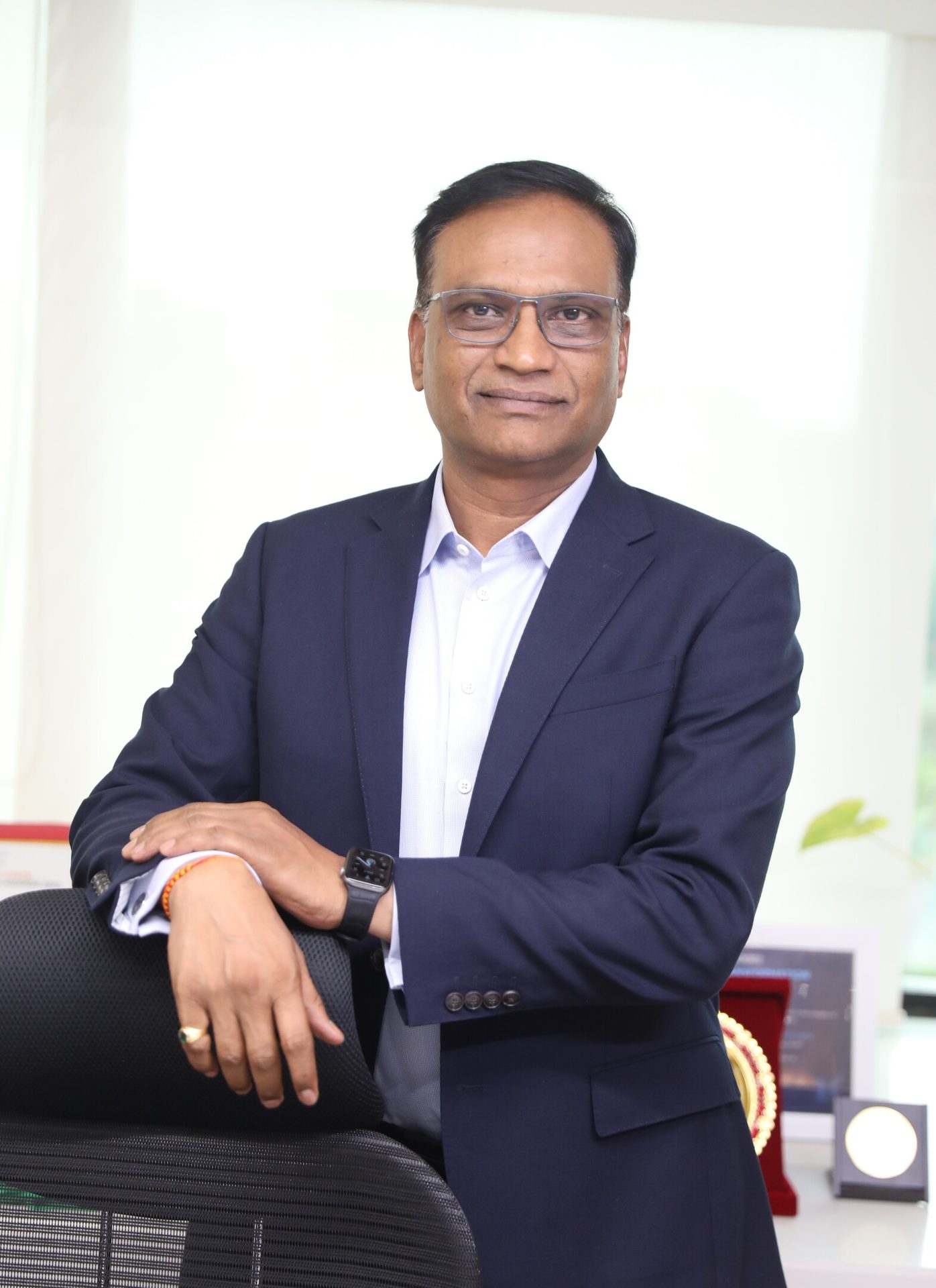
For the very first time in India's history, 3 million households and establishments, comprising over 12 million Mumbaikars, were powered entirely by 'clean' renewable energy sources.”
Building Strong Foundations
The Adani Cement vertical closes the largest financing in Asia, with USD 3.5 Bn raised from a clutch of international banks.
INSIGHTS
Anupam Misra
The Adani Cement vertical has executed the definitive agreements for one of the largest Asia syndicated loans, and the largest in Q3 CY2023 in Asia – USD 3.5 Bn – which will refinance the existing acquisition bridge. The transaction marks the strength of the deep relationship Adani enjoys with international banks, the robust capital management planning and the stupendous underlying performance of the Adani Cement vertical.
This transaction marks the continued confidence and depth of the relationship between the banks and the Adani portfolio companies. This also cements what has been a very successful acquisition for India Inc. Adani’s acquisition of Holcim’s cement businesses in India, including Ambuja and ACC in September 2022, positioned them at the forefront of a highly competitive race against both domestic and international cement players. Adani’s victory in this fierce competition can be primarily attributed to the groundbreaking financing package it assembled, in partnership with three close relationship banks: Deutsche Bank, Barclays and Standard Chartered Bank. This USD 5.25 Bn financing package marked the largest-ever Indian leveraged finance transaction and subsequently expanded to involve 14 international banks before the transaction’s closure in September 2022.
This financial triumph was further recognised with accolades, including the prestigious IFR Asia Loan of the Year award in Asia. The refinancing, completed on 30 October 2023, signifies the next step in the Cement Vertical’s capital management journey. It involves transitioning from an 18-month bridge financing structure to a three-year financing structure, with a more permanent capital framework coming into effect. As part of its future plans, the cement vertical is gearing up for its capital market journey, using this transaction as a template for upcoming international M&A activities within the Adani portfolio.
Presently, Ambuja Cements and ACC boast a combined installed production capacity of 67 MTPA, poised to advance towards 100 MTPA by 2025, following the acquisition of Sanghi Cement. ACC & Ambuja are among the strongest brands in India with immense depth of manufacturing and supply chain infrastructure. These strengths, combined with synergies from the integrated Adani infrastructure platform, particularly in the areas of raw materials, renewable power, and logistics, have led to a remarkable improvement in EBITDA per ton, soaring from INR 340 per ton in the quarter ending September 2022 (immediately post-acquisition) to INR 1,253 per ton in the quarter ending June 2023, indicating a significant reduction in leverage through enhanced coverage positioning.
The writer is Group Head, Corporate Finance.
- EBITDA per ton has increased from ~ INR 300 per ton in September 2022 quarter to INR 1,230 per ton in June 2023 quarter ending. This has resulted in deleveraging by way of reduction of the Net Debt / EBITDA.
- A total of 10 banks participated in the debt raising process with 4 banks acting as Underwriter and Mandated Lead Arranger and Bookrunner (MLAB) including DBS Bank, First Abu Dhabi Bank (FAB), Mizuho and MUFG. Six other banks acted as MLABs, including Barclays, BNP Paribas, Deutsche Bank, ING, Standard Chartered Bank and SMBC Group.
- Enabled cost savings of USD 300 Mn and tenor out by 3 years.
- Currently, Ambuja Cements and ACC have a combined installed production capacity of 67 MTPA to conclusively rise to 100 MTPA by 2025 with the acquisition of Sanghi Cement. ACC and Ambuja’s robust brand reputation and extensive manufacturing and supply chain infrastructure are poised to benefit from synergies with the integrated Adani infrastructure platform.
- This showcases Adani’s robust access to the global financial market and strong liquidity position. This achievement reflects our commitment to financial stability and growth.
Key Highlights
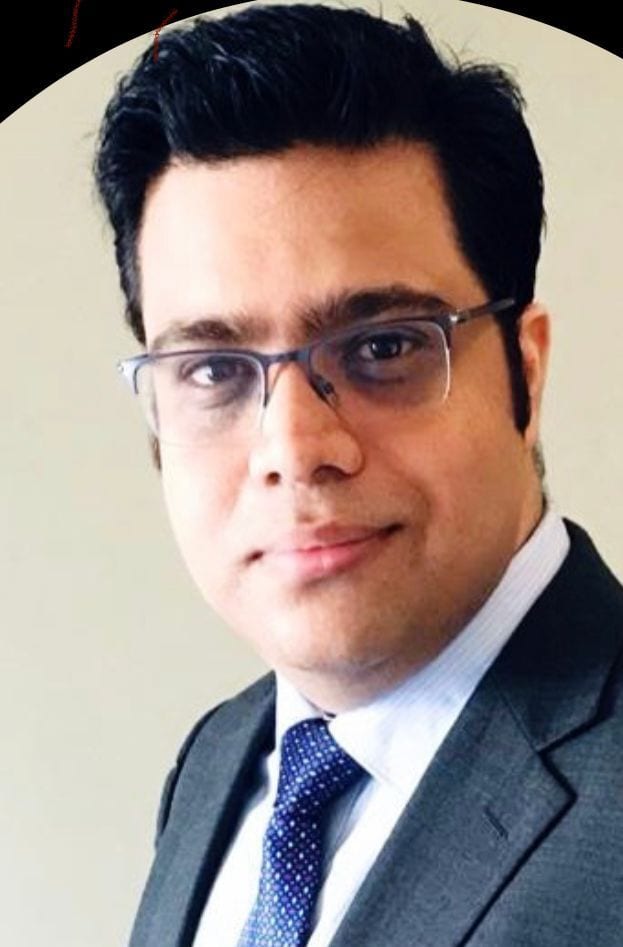
Adani’s victory in this fierce competition can be primarily attributed to the groundbreaking financing package it assembled, in partnership with three close relationship banks: Deutsche Bank, Barclays and Standard Chartered Bank.”
REFLECTIONS
Transitioning from an ancient trade hub to a modern maritime marvel, the Vizhinjam Seaport unfolds its captivating story.
Navigating the Waves of History and Progress
Rajesh Jha
The maritime history of Vizhinjam dates back to the 8th century when it flourished under the Aay, Chera and Chola dynasties. Fast forward to 15 Oct 2023, a momentous day when the maiden vessel carrying one RMQC (Rail Mounted Quay Crane) and two CRMGs (Cantilever Rail Mounted Gantries) docked, symbolising the revival of Kerala’s glorious past thanks to the collaborative efforts of the Adani Group and the Government of Kerala.
Over the past eight years, starting from August 2015 when the Concession Agreement was signed, Vizhinjam Seaport has successfully overcome numerous challenges to reach this historic milestone, marked by the Hon'ble Kerala Chief Minister’s formal reception of the first ship, causing a wave of jubilation across the state.
Why Vizhinjam?
Located just 16 kilometres south of Thiruvananthapuram, the capital city of Kerala, Vizhinjam was identified by the Government of Kerala as the ideal site for the development of a transshipment port. Vizhinjam Port boasts several advantages that position it to become a world-class transshipment hub for Indian sub-continent cargo servicing the entire country:
- Vizhinjam is strategically located in close proximity to international shipping routes connecting Europe, the Persian Gulf, and the Far East, making it a pivotal point on the east-west shipping axis, within 10 nautical miles.
- The site is endowed with a natural depth of 18-20 metres, facilitating efficient handling of mother vessels.
- With minimal littoral drift, the need for maintenance dredging during years of operation is limited, resulting in lower operation and maintenance costs.
- Vizhinjam is an all-weather port, capable of berthing new generation vessels with capacities ranging from 18,000 to 24,000 TEU.
The Challenge of Transshipment
The majority of containers destined to and originating from Indian ports are transshipped through large intermediate transshipment ports due to the low draught available in Indian ports, which cannot accommodate large mother vessels. The growth of containerised cargo has led shipping lines to rely on large mother vessels for cost-efficiency. Transshipment at foreign ports increases the logistics cost for Indian imports and exports and results in significant foreign exchange outflow. Establishing a transshipment port in Vizhinjam offers a compelling business case and holds strategic significance in terms of market share.
In accordance with the Maritime India Vision 2030 document released by the Prime Minister of India in 2020, Vizhinjam is identified as an 'Immediate Priority'. In 2019, Indian ports handled 16.1 million TEUs of container cargo, with approximately 75% being gateway cargo (12 million TEUs) and 25% transshipped en route to the final destination (4.1 million TEUs). Unfortunately, almost 75% of India’s transshipped cargo is handled at ports outside the country, with Colombo, Singapore and Klang accounting for more than 85% of this volume, with Colombo alone managing around 2.5 million TEUs.

The Development Story
The history of development efforts for realising Vizhinjam seaport in modern times dates to 1991. The strategic advantage of Vizhinjam Port and its possible economic and development impact on the country and the state were never disputed since then. Under various models, attempts were made by the Kerala Government in 1995, 2004-05, 2007-08 and 2010-11 to develop the port. The current development model and its pursuant selection of the Adani Group as a Concessionaire evolved after those unsuccessful attempts in the past. Under the current model, the port is developed in PPP mode on design, build, finance, operate and transfer (DBFOT) basis.
The Concession Agreement for the project was signed on 17 Aug 2015, between the state government and Adani Vizhinjam Port Private Ltd (AVPPL), the special purpose vehicle company. Subsequently, construction commenced on 5 Dec 2015. The project faced numerous challenges related to engineering, technical, and force majeure conditions. A key engineering feat was the construction of a three-kilometre-long rubble mound breakwater, necessary to create a tranquil basin for the safe berthing of ships. This endeavour required a staggering 77 lakh tons of stone. Ranging from 0.5 kg to 6 tons, stones were procured with great difficulty from Thiruvananthapuram and neighbouring districts in Tamil Nadu and Kerala. Owing to climatic conditions, the effective working season for construction of breakwater was restricted to between the months of October and April. The project overcame the hurdles posed by two major cyclones—Cyclone Ockhi and Cyclone Tauktae—during the period besides numerous other adverse weather conditions like super flood, high wave conditions and the Covid-19 pandemic.
The indomitable will of the Adani Group, in the face of insurmountable challenges, triumphed, reaffirming our commitment to the nation’s development.
The writer is MD and CEO of AVPPL.
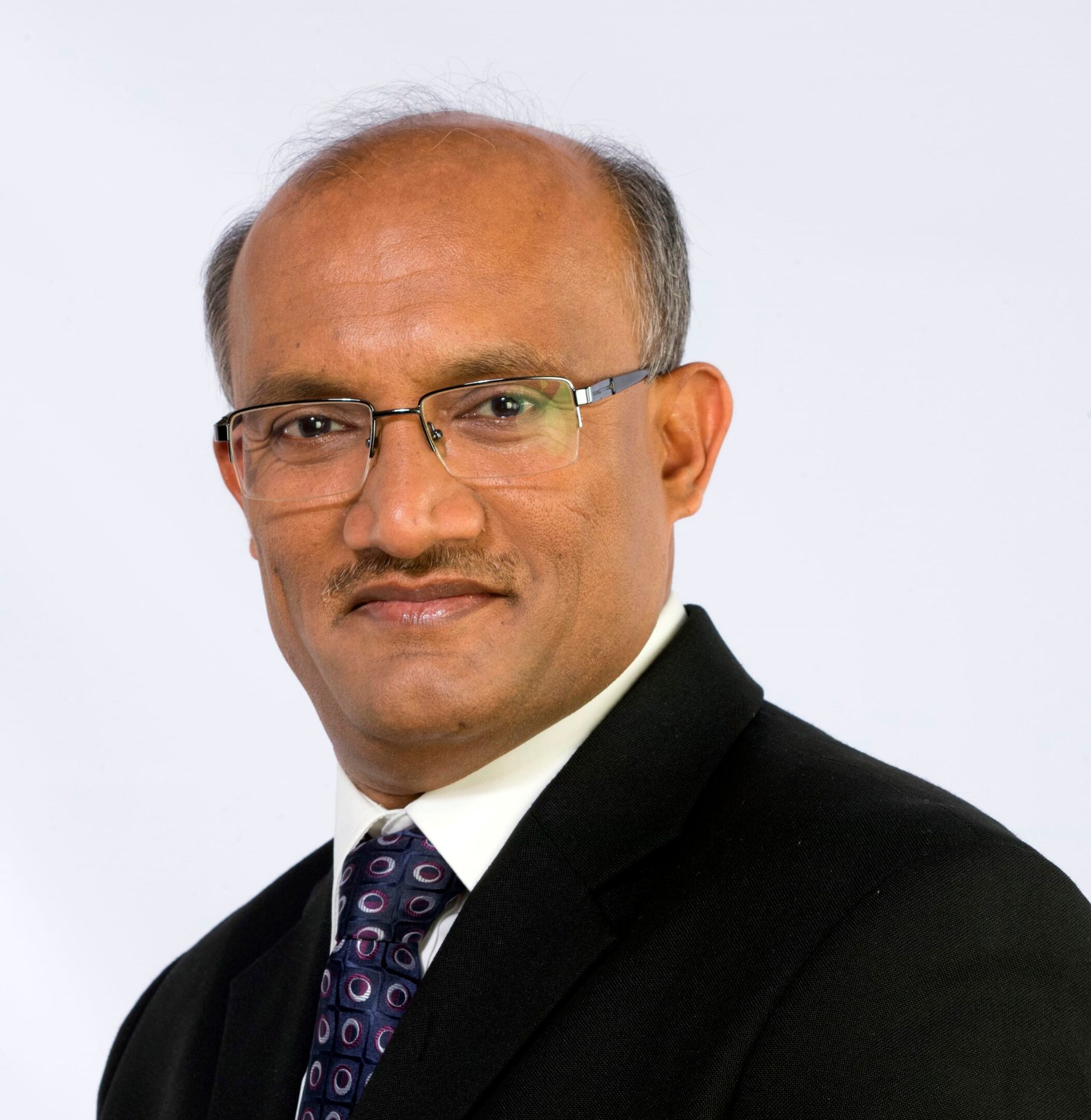
Over the past eight years, starting from August 2015 when the Concession Agreement was signed, Vizhinjam Seaport has successfully overcome numerous challenges to reach this historic milestone, marked by the Hon'ble Kerala Chief Minister’s formal reception of the first ship, causing a wave of jubilation across the state."
Steering Safely With
Ballast Water
Balancing ship stability and environmental responsibility in maritime operations
Newsmakers
Adani Shipping
Mayuri Vivek Patil
Ballast water management, a practice as old as steel-hulled ships, plays a crucial role in managing a vessel’s weight, stability and maneuverability during loading and unloading operations, especially in rough seas. However, ballast water has a dual nature, serving as both a boon and a bane to the marine environment.
As ships take on ballast water in one port and discharge it in another, they unwittingly transport non-native species, including invasive plants and animals. These alien organisms can threaten native habitats and cause ecological damage, making ballast water management a pressing concern. The discharge of ballast water has been identified as a primary mechanism for the introduction of invasive species into new ecosystems. These invasives can outcompete and displace native species, leading to significant ecological and economic repercussions.
In response to the ecological threat posed by ballast water discharge, the International Maritime Organization (IMO) has developed stringent regulations for its treatment. The Ballast Water Management Convention requires ships to install ballast water treatment systems and adhere to strict discharge standards. These regulations are enforced by port state authorities in many countries.
Ballast water treatment systems employ various methods to remove or kill organisms, including physical separation, chemical treatment and biological treatment. The choice of treatment system depends on factors such as effectiveness, environmental impact, crew safety, cost-effectiveness, ease of installation and available space on board.
Choosing the right ballast water treatment system is critical, considering factors such as the vessel’s size and type, cargo and regulatory requirements. Collaboration with a qualified marine engineering firm ensures compliance with regulations and selection of an effective, eco-friendly, and cost-efficient system.
ASIPL’s Commitment to Environmental Responsibility
Adani Shipping India Pvt Ltd (ASIPL) has been at the forefront of environmental stewardship, actively working to conserve and enhance efficiency while prioritising ecological well-being. ASIPL’s fleet fully complies with IMO regulations, with their vessels retrofitted with the SUNRUI BalClor Ballast Water Management System (BWMS).
The SUNRUI BalClor BWMS comprises three main components: Filtration, Seawater Electro-chlorination for disinfection and Neutralisation. This system ensures that ASIPL’s vessels meet the strictest disinfection standards and contribute to the protection of native habitats and ecosystems. ASIPL demonstrated its commitment to environmental responsibility by installing BWTS that comply with USCG standards in 2019, five years ahead of its mandated compliance date.
Ballast water may be a vital aspect of maritime operations, but its ecological consequences cannot be ignored. ASIPL’s proactive approach to adopting eco-friendly solutions and adhering to international regulations sets a promising example for the maritime industry, aligning with the broader goal of safeguarding native habitats and minimising ecological damage.
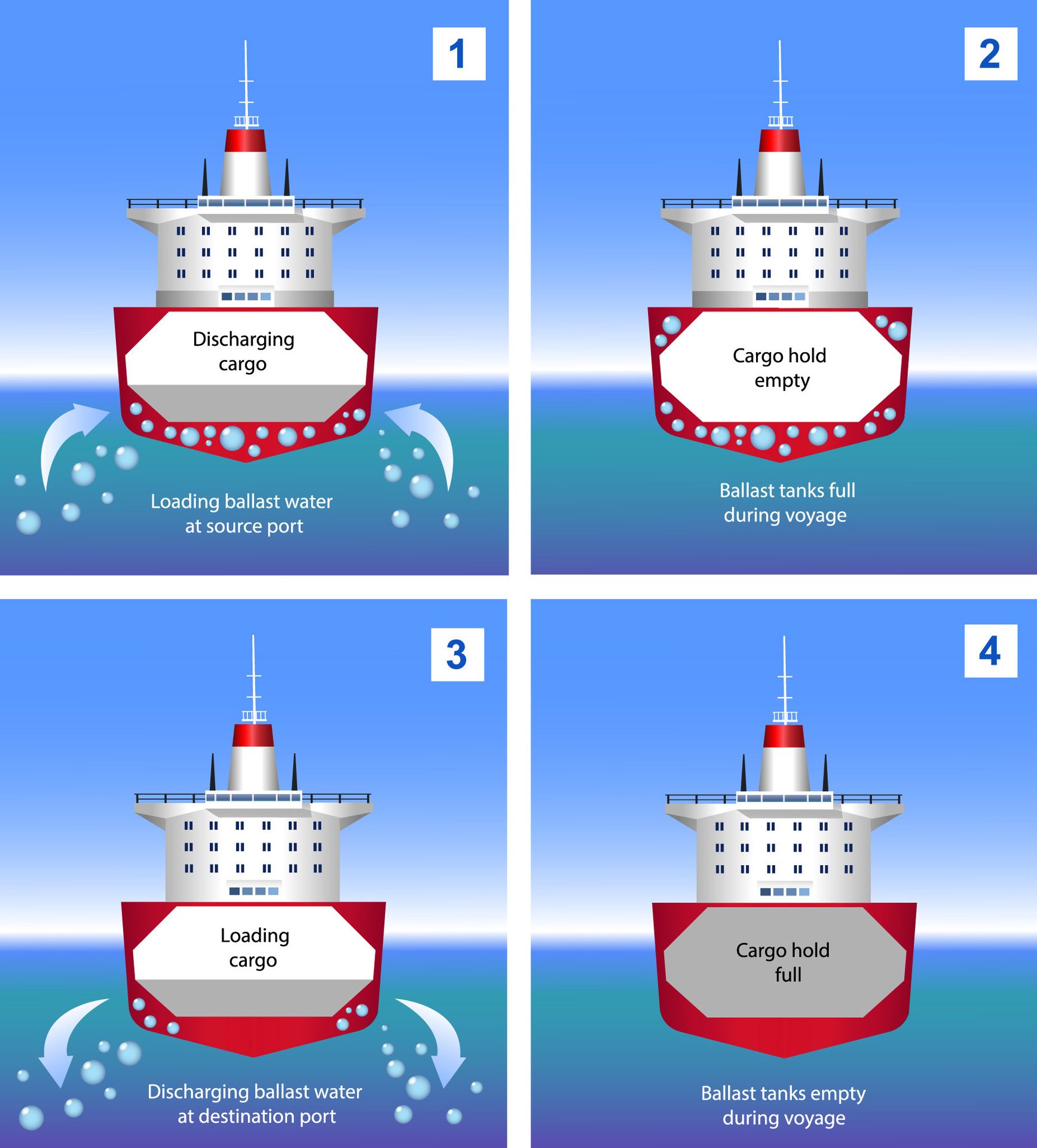

Supporting Employee Aspirations
Our policies are crafted not only to support our employees but to invest in our most precious asset: You. Discover more about one such policy, its exceptional features, benefits and eligibility.
policy
Pankaj Singh
At the Adani Group, our mission reaches beyond the boardroom and into the hearts and homes of our employees. We understand that our employees are our greatest assets and their well-being goes beyond their roles in the organisation. We believe in not only investing in their professional growth but also in nurturing the dreams and aspirations of their children.
Higher education, especially in reputable institutions, can be financially burdensome, often placing it out of reach for many. In 2009, we took a significant step by introducing the Adani Employee’s Children Education Scholarship to encourage and support higher education for our employees’ children. Building upon this commitment, in 2017, we launched the Employees’ Children Education Loan Interest Subsidy Scheme.
Our policy is designed to alleviate the financial strain on our employees by providing interest subsidies on education loans taken for their children’s higher education. We understand that education loans come with substantial interest rates, making repayment a daunting task. With this policy in place, we aim to ease this burden by subsidising a portion of the interest, helping parents fulfil their children’s educational aspirations.
Who Can Avail This Policy?
All regular employees with a minimum of one year of continuous service with the Adani Group are eligible and covered under this scheme. The education loan interest subsidy is available to the children of eligible employees if the children or parents have taken an education loan from any bank or financial institution to pursue higher studies (after 12th standard) in India or abroad.
How to Avail This Policy?
Eligible employees should apply for reimbursement of education loan interest subsidy on the MyASP portal, providing supporting documents.
- Our HR department will verify the details and forward the application to the Accounts department for interest subsidy reimbursement as per the policy.
- Reimbursement will be made once a year in the month of April, and employees leaving the Group in the middle of the year will not be reimbursed for that year.
- Only one child of an employee will be eligible for the scheme at a time.
- The percentage of interest subsidy is categorised based on the employee’s annual CTC, and the maximum period for loan reimbursement is until the completion of the course or 4 years, whichever comes earlier. The maximum amount on which interest subsidy is reimbursed varies depending on whether the child is pursuing studies in India or abroad.
Beyond Benefits
This policy encapsulates Adani’s unwavering commitment to nurturing talent, supporting families and contributing to the well-being of our employees and the broader society. It fosters a sense of community and support within our workforce, standing as a testament to our company’s values and our dedication to shaping a brighter future, one family at a time.
At Adani, we are not just building careers, we are building legacies. Together, we aim to empower bright futures and make quality education accessible for the children of our employees.
The writer is SVP & Group Head – People & Culture.
Finding the
Perfect Equilibrium
Discover the art of balance, professional and personal, in the heart of a thriving township.
people
Poonam Advani & Vishal Nair
In the bustling world of work, the quest for a harmonious balance between professional obligations and personal life often feels elusive. Long commutes, stressful schedules and the constant juggle between work and family can take a toll on one’s well-being. But what if there were a place where this balance was not just a dream but a reality? Welcome to Adani Shantigram, a vibrant township where the dream of work-life harmony is alive and thriving.
At the heart of Adani Shantigram lies the Adani Group’s corporate headquarters. Here, a community of professionals works diligently to drive growth and progress. What sets this workplace apart is its unique integration with the residential aspect of the township. Many of those who work at Adani Corporate House also call the township home, and this fusion of work and life becomes the cornerstone of their existence.
Adani Shantigram is not just an ordinary township. It is a holistic ecosystem designed to cater to every aspect of a resident’s life. Whether you are seeking beautiful and spacious homes, daily essentials at the local mall Shopper's Plaza, or world-class education at Adani International School and Adani University, Shantigram has it all.
Sports enthusiasts can tee off at the Belvedere Golf Club, young and old can relish fast food delights at McDonald’s or leisurely sips at Starbucks and Uptown Live Food Park ensures a variety of culinary adventures. From car repair services to jogging tracks, football grounds to cricket stadiums, and swimming pools to 24-hour security, Shantigram’s list of offerings knows no bounds.
For those who reside in the township, work is no longer separated by the dreaded commute. It is a simple walk, a short cycle ride, or a quick bus trip away. The hours usually lost in transit are reclaimed, offering Adanians the gift of time.
But perhaps the most significant gift Shantigram bestows upon its residents is the ability to be close to family. The power of a home-cooked meal, quality time with loved ones and the comfort of knowing that your family is just minutes away cannot be underestimated. Adani Shantigram understands the importance of family in one’s life and strives to create an environment where families can thrive and grow together.
Amid the chaos of the modern world, Shantigram stands as a sanctuary that promotes well-being, togetherness and the simple joys of life. In Shantigram, the celebration does not stop at work-life balance. This vibrant community comes together to celebrate all festivals with a fervour that is truly infectious. Vibrancy fills the air, as people from different corners of India unite to share their cultural traditions and celebrations.
Adani Shantigram stands as a testament to the fact that success and happiness are not mutually exclusive. It showcases that a proper work-life balance is not just a distant dream but a reality that can be achieved when you have a supportive and well-designed environment.
Let us hear from some of our colleagues who call Adani Shantigram home while working at Adani Corporate House. Discover how this township has empowered them to master the art of balancing professional and personal lives with precision as they share insights into their lives, lifestyle, and more.
Adani Shantigram is not just an ordinary township. It is a holistic ecosystem designed to cater to every aspect of a resident’s life. Whether you are seeking beautiful and spacious homes, daily essentials at the local mall Shopper’s Plaza, or world-class education at Adani International School and Adani University, Shantigram has it all.
Colleague Chronicles
The Harmonious Hub
“The well-maintained society and an easy commute to the office are reassuring. Shantigram’s religious and festive spirit, with celebrations like Janmashtami, Garba and Durga Puja, adds vibrancy to life. All in all, ‘Shantigram’ lives up to its name, offering peace and convenience in harmony.”
Vanshika Jain
Legal, AEL
A Breath of Fresh Air
“Shantigram, with its lush trees and clean streets, has transformed my living experience. The proximity to work means I can comfortably cycle to the office, saving money on cabs. With most necessities available at the Shopper's Plaza, city visits are infrequent. It is a breath of fresh air compared to city life.”
Pankaj Yadav
Mergers and Acquisitions, APSEZ
Family-Friendly Comfort
“Two fulfilling years at Adani have made my family and me appreciate Shantigram. The presence of a Jain temple, a short commute to the office and dining options cater to our preferences. The serene environment is perfect for me as a bachelor; it is not crowded, and tiffin services provide a taste of home-cooked meals. Adani offers a comfortable living experience for all.”
Shobit Jain
Mergers and Acquisitions, APSEZ
Quality Time Oasis
“Residing in Waterlily, with its proximity to the office, offers ample time at home. The club facilities cater to my hobbies like badminton and tennis. Lush greenery and a pollution-free environment provide a haven for the elderly. Essential amenities within reach simplify managing personal and professional life, allows me cherished time with loved ones.”
Jitendra Khyalia
CFO Office, AEL
A City Within a City
“Shantigram is a peaceful sanctuary that perfectly balances work and life. With amenities and luxuries within a short distance, it provides everything needed for a fulfilling life. From groceries to leisure activities, cultural and religious events, and dining and entertainment options, Shantigram has it all.”
Amartya Shrivastava
Legal, AEL
The Serene Paradise
“Shantigram offers a serene and convenient environment. It is a runner’s paradise, with clean air and yoga opportunities. Proximity to medical facilities provides peace of mind, and services like tailoring, car repair are also easily accessible. It combines tranquility, accessibility and a holistic lifestyle, making it a great place to live and work.”
Smitha Kumari
Yoga Instructor
The Peaceful Oasis
“Three years at Adani Corporate House and a relocation to Ahmedabad have been a rewarding experience for me and my family. Staying at Shantigram, within walking distance to work, offers a safe haven for my kids. The Shopper's Plaza fulfils our daily needs, sparing us the need to venture into the city for most essentials. With eateries like McDonald’s and Starbucks right here, it is easy to find a spot for a casual drink or meal. The greenery and the serene surroundings, diligently maintained by the horticulture and cleanliness teams, make Shantigram an ideal place to call home.”
Milind Sangtiani
CEO Office, APSEZ
Township of Delights
“Shantigram is a township like no other. With fast-food restaurants like McDonald’s and leisure cafes like Starbucks nearby, electronic buses for convenience, and a well-stocked Shopper's Plaza, it is a place that caters to every need. Open play areas, a golf course, and enchanting events like the fountain show and Garba make life here truly memorable.”
Ayushi Mishra
Legal, APSEZ
A Dubai Resident’s Perspective
“After living in Dubai for over a decade, Shantigram is my new home. Close proximity to work, variety of dining options and a clean and eco-friendly environment make it preferable. Safety on the roads is a bonus.”
Dr Subhajit Bose
Data Analytics and Business Technology, APSEZ
Striking a Dedicated Routine
“In our relentless pursuit of success, we’re often caught in a cycle of work, deadlines, and commitments, forgetting life isn’t just about work, but also about living, experiencing, and cherishing the moments that make it meaningful. It surely helps to be residing near the office, with basic amenities nearby, as that leaves me scope for sports, fitness activities and meals with family- things I consider a necessity rather than luxury. A dedicated routine helps me maintain the harmony between professional and personal life, so that neither overshadows the other.”
Kislay Kumar
CPAG
The Place to Cherish
“Being away from home while pursuing my dreams, Shantigram provides a homely feeling that is invaluable. The welcoming community and vibrant celebrations make life exciting. Gym facilities, swimming pools and billiards help me find peace.”
Karn Kedar
Energy Strategy, AEL
Unveiling the Tapestry of India’s Artistic Riches
Sathwaro, a dedicated initiative by the Adani Foundation, serves as a bridge between the past and the present to preserve India's incredible cultural legacy for the future.
cover story
Poonam Advani & Dipika Rathi
In the kaleidoscope of India's artistic heritage, where traditions, cultures and crafts dance together in a vibrant tapestry, Adani Corporate House hosted Sathwaro, a spectacular two-day exhibition that unfolded the richness of our nation's artistic prowess. The event, held in the first week of November, beckoned the festive season and took one and all into a world where the heartbeats of India's diverse states resonated through the craftsmanship of its humble artisans. Sathwaro 2023 was a celebration of creativity so grand that it made last year's Gram Bharati seem like a prelude to the artistic extravaganza.
As one stepped into this artistic odyssey, they were quickly immersed in the intricate threads of India's art diversity, each masterpiece echoing the unique traditions and skills that define our states. It was not just an exhibition; it was a journey through the very soul of India's art and culture.
Sathwaro 2023 was a cultural mosaic where artisans from every corner of the country converged under one roof as a showcase of skill, tradition and the sheer brilliance of our artisans. With Diwali on the horizon, the timing couldn't have been more perfect as the employees at Adani Corporate House were treated to a mesmerising preview of what lay ahead.
From the earthy creations of mudwork and beadwork to the intricate stitching traditions of Soof embroidery work to the versatility of bamboo in lac work bangles and the vibrant celebration of tribal heritage in Warli art—it was a deep dive into the heart of traditional arts and crafts. Toran door hangings added a burst of colour, while designer candles and bamboo craft brought a touch of uniqueness to the exhibition. From Sikki craft to jute craft, fabric jewellery to agate, every stall told a tale of craftsmanship rooted in tradition. The richness of India's heritage unfolded state-wise, with Self-Help Groups (SHGs) from various states presenting artefacts that represented the traditional soul of their regions.
From Tamil Nadu, the Bismi Palm Leaves Group (BPLG), with Fathima Bee at the helm supported by her husband Haja Moideen, narrated a story of resilience and artistic brilliance. The aftermath of the tsunami transformed Mr Moideen from a fisherman into a social icon, and their association with the Adani Foundation has not only provided training and skill development but also vital materials for their craft. Their product offerings encompassed a range of handcrafted items including torans, fruit trays, tissue boxes, baskets, gilligillipaa and so on. With a vision to expand their market reach, the BPLG aspires to distribute their creations nationwide in the near future. In addition, the BPLG has established a direct vendor relationship with Amazon, making their artisanal products accessible to a wider online audience.
From Vizhinjam in Kerala, the Sebastian Indian Social Projects (SISP) SHG showcased eco-friendly creations from coconut shells. Ten talented women, under the leadership of Marina A, found support in the Adani Foundation, receiving orders and training that elevated their craft to new heights. She shares, “The Adani Foundation has been instrumental in connecting us with business orders, providing essential training to enhance our skills and thereby bolstering our livelihoods.” Their diverse product range encompassed earrings, keychains, spoons, candle holders, file folders, greeting cards and hairpins.
Andhra Pradesh's Ganesh Group, crafting wonders from jute, is a testament to the transformative power of the Adani Foundation, providing these women with new skills and opportunities. K Hema and Kolamgari Govindma represented this SHG at the Sathwaro exhibition. They specialise in crafting jute-based products. This SHG is the newest addition to the Adani Foundation's network, having been associated with the Foundation for only two months so far. The Foundation identified potential artisans through discussions with a local panchayat representative. Surprisingly, the 10 women were initially engaged in tailoring, specifically blouse stitching, prior to forming their own SHG. Ms Hema shares, “The Adani Foundation provided us comprehensive training in the art of jute craftsmanship. We are indebted and want to take this moment to express profound gratitude for our association with the Foundation, which has empowered us with new skills and opportunities.”
In Uttar Pradesh, the Gangatiri SHG in Varanasi breathes life into cow dung, creating incense sticks and prayer sticks enriched with 52 herbs. Seema Singh and Priyanka Pathak lead the charge, ensuring a meaningful partnership with the Adani Foundation. This SHG is dedicated to preserving and utilising the dung of Gangatiri cows, a breed often neglected after they cease to produce milk. This SHG’s commendable initiative not only safeguards these special cows but also transforms their dung into valuable products. Their offerings include incense sticks, dhup (a form of incense) and prayer sticks, enriched with a herbal blend and camphor for fragrant qualities.
In the heart of India, Usha Kiran Mahila Udhyami Samuh, from Madhya Pradesh, explores the ancient art of Sikki grass, presenting an eco-friendly craft that captivates with its simplicity. The art collection is made of rice grass. The process to make this is: first they cut the rice sticks, then open it up and later press it down to make it flat. After that it can be pasted into customised designs and finally framed in an artwork. Urmila Jaiswal and Ragini Kumari represented the SHG at Sathwaro 2023.
Western India proudly flaunted the artistic endeavours of Gujarat and Maharashtra. Mahakali Sakhimandal in Hazira, Gujarat, showcased jute creations, while Santoshi Sakhimandal demonstrated expertise in crafting fabric jewellery. Gayatri Sakhi Mandal's bamboo pickle from Mundra is a unique venture supported by the Adani Foundation, seamlessly blending a traditional taste with innovation. In Mundra, the Meghdhanush Sheli Swa Sahay Juth and Jyoti Saheli Swa Sahay create wonders with mudwork and beadwork, showcasing not just intricate craftsmanship but a commitment to community enhancement.
In Mundra, the Soof by Pragpar Women Group stood out, led by Paniben and Parvatiben. Following the 1971 war, refugees from Pakistan settled in Gujarat, and 3 villages became renowned for their Soof embroidery on sarees, shawls and stoles. Their association with the Adani Foundation over the past five years has expanded their product range to include laptop bags, wall hangings and torans. Their meticulous craftsmanship yields intricate masterpieces. With 20 women actively participating, they sell their creations online and also serve as a learning hub for students from prestigious institutions such as NID Gandhinagar, NIFT Ahmedabad, and NIFT Jodhpur to master the art of Soof work.
In Dahej, Gujarat, the renowned national artist Vazirbhai Kotwaliya assisted the SHG Jay Devmogra Maa Group to make a remarkable transition from the bamboo furniture business to crafting 220 diverse decorative items using bamboo wood waste. His association with the Adani Foundation for the past 5 to 6 years has not only connected him with four SHGs, one NGO and two private limited companies but has also facilitated the expansion of his artistic endeavours. His creations encompass keychains, pen stands, Ganpati frames, baskets, lamps and more. Mr Kotwaliya reminisced about how the Foundation provided essential machinery for refining the craft and offered training opportunities for local women. This collaboration has significantly boosted their monthly earnings from INR 1-2 lakh to INR 4-5 lakh. Mr Kotwaliya expressed deep gratitude to the Adani Foundation for this transformation. He is set to showcase his art in an exhibition in Poland in January 2024, reflecting the recognition his craft has garnered.
Maharashtra unfolded two distinct art forms – lac bangles from Tirora and diverse crafts from Mumbai (Malad). Sahayata Mahila Bachat Gat in Tirora excelled in traditional and cold lac bangle-making. Representing their SHG, Pramila Pardhi and Vandan Chait Lal Chaudhari talked about their journey with the Adani Foundation which began in 2017 when they received training in traditional lac bangle-making on a chula. In 2022, after receiving advanced training and support, they expanded their repertoire to create cold lac bangles, nose rings, saree pins and clutches, diversifying their product range significantly.
From Malad, three distinct SHGs showcased their expertise in three diverse art forms. These groups are presided over by Jyoti Bandekar, President of the Swabhimani SHG. The Adhishakti Group demonstrated the traditional Warli art form, characterised by its use of basic geometric shapes such as circles, triangles and squares. Their artistic creations included pouches, frames, envelopes, fridge magnets, wall hangings and kandil. Another group, Sakhi SHG, was primarily engaged in crafting torans, candles and kanthi. This group has 30 to 40 members who, given their location in a slum area, lacked the means to effectively market their art. The Adani Foundation played a pivotal role in connecting them to business opportunities and exploring avenues for their art. The Swabhimani Group focused on repurposing waste cloth and crafting pouches, hair ribbons, diary covers and handbags. This initiative reflects their commitment to sustainability and recycling.
Chhattisgarh offered a rich tapestry of diverse art forms, catering to various aspects of daily life. Sarguja’s Mahila Udhami Bahudheshiye Sahkari Samiti displayed kitchen essentials, highlighting the diversity of eastern Indian craftsmanship. Raigarh showcased Annapurna and Ganesh SHGs, excelling in sewing art and bamboo crafting, respectively. Raipur introduced Saheli Mahila Swa Sahayata Samuh, presenting Nehru jacket collections and exemplifying the fusion of tradition and modernity.
The event also featured individual artisans from all across India who showcased rare and precious craft forms. These included the copper bell craft from Kutch, the vibrant blue pottery from Jaipur known for its use of cobalt blue dye, exquisite wall hangings, door hangings and torans from Dahod. The art of agate, a specialty of Khambhat, produced decorative and utilitarian items using precious stones. The unique Sadeli art technique adorned wooden articles with delicate wood pieces in geometric patterns. This craft has only two remaining artisans in India — father-son duo Jitendra Petigara and Rakesh Petigara.
Additional art forms on display at the Sathwaro Mela included Patola from Surendranagar, Dokra from Chhattisgarh, miniature painting from Jaipur, Pattachitra and Sabai Grass art from Odisha and Rogan art from Kutch, which is preserved by a single family.
Sathwaro was more than just an exhibition; it was a call to action. Shilin Adani, Trustee of the Adani Foundation, emphasised the importance of bridging the gap in the crafts sector. “Sathwaro is not just a celebration of India's artistic treasures; it is a commitment to empowering artisans through skill development, training and market exposure," said Ms Adani. "Crafts, the second-largest source of employment in India, face challenges, but Sathwaro is a beacon of hope. By understanding the struggles of artisans and supporting initiatives like Sathwaro, we can collectively ensure that the beauty of Indian handicrafts continues to enrich our lives and the generations to come. Let us champion the cause of empowering artisans and preserve the artistic treasures that make India truly rich.”
Asmita Goel, Advisor to the Adani Foundation, articulated the importance of investing in skill development and providing training opportunities for artisans to revitalise the crafts sector. She emphasised the need to bridge the gap between traditional craftsmanship and modern market demands, ensuring the sustainability of the sector. Envisioning a revival of Indian handicrafts through collaborations between artisans and designers, Ms Goel shared, "By infusing contemporary design sensibilities with traditional techniques, we believe artisans can create marketable products that bridge the gap between traditional and contemporary aesthetics. From intricate handwoven textiles to exquisite wood carvings, Indian handicrafts embody the essence of tradition and craftsmanship. However, despite their immense cultural and artistic value, Indian handicrafts and the craftsmen behind them face numerous challenges in the modern world. Sathwaro is our attempt to revive the Indian crafts sector and it is indeed heartwarming to see so many people coming to adore and rediscover the beauty of Indian handicrafts at the exhibition. I am hopeful that we can play a small role in their revival. Further, to do so we are collaborating artisans and designers to breathe a new life into traditional crafts."
All in all, Sathwaro is a unique platform to appreciate the artistic treasures of Indian handicrafts, embrace their cultural significance and champion the cause of empowering artisans. By understanding the challenges faced by artisans and taking conscious steps to support and revive this valuable sector, the beauty of Indian handicrafts can continue to enrich lives for generations to come.
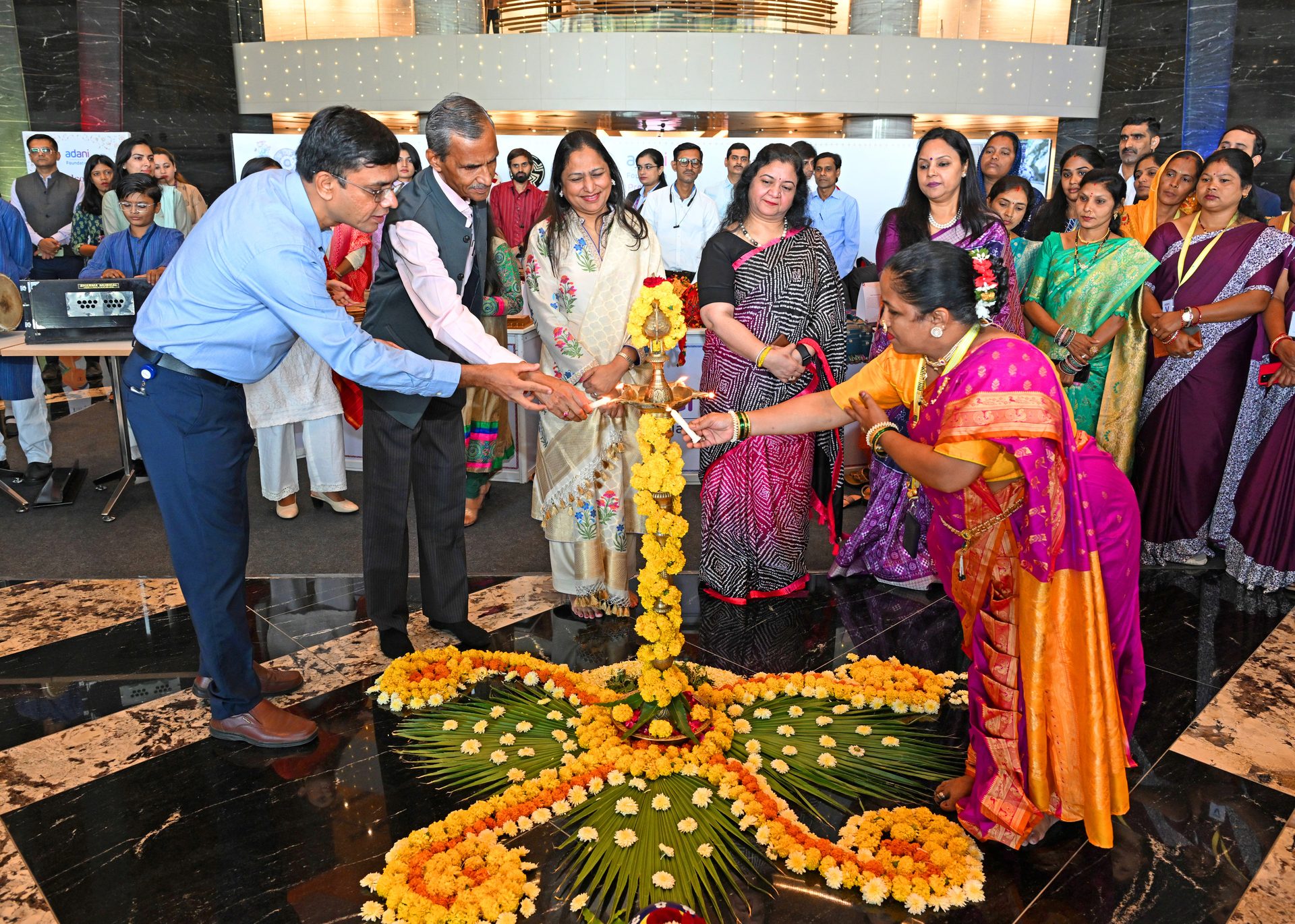
Chairperson of the Adani Foundation Dr Priti Adani, Trustee Shilin Adani, Executive Director Vasant Gadhavi, Advisor Asmita Goel, and COO Chandra Shekhar Gowda at the inaugural edition of Sathwaro 2023, an event spearheaded by the Adani Foundation.

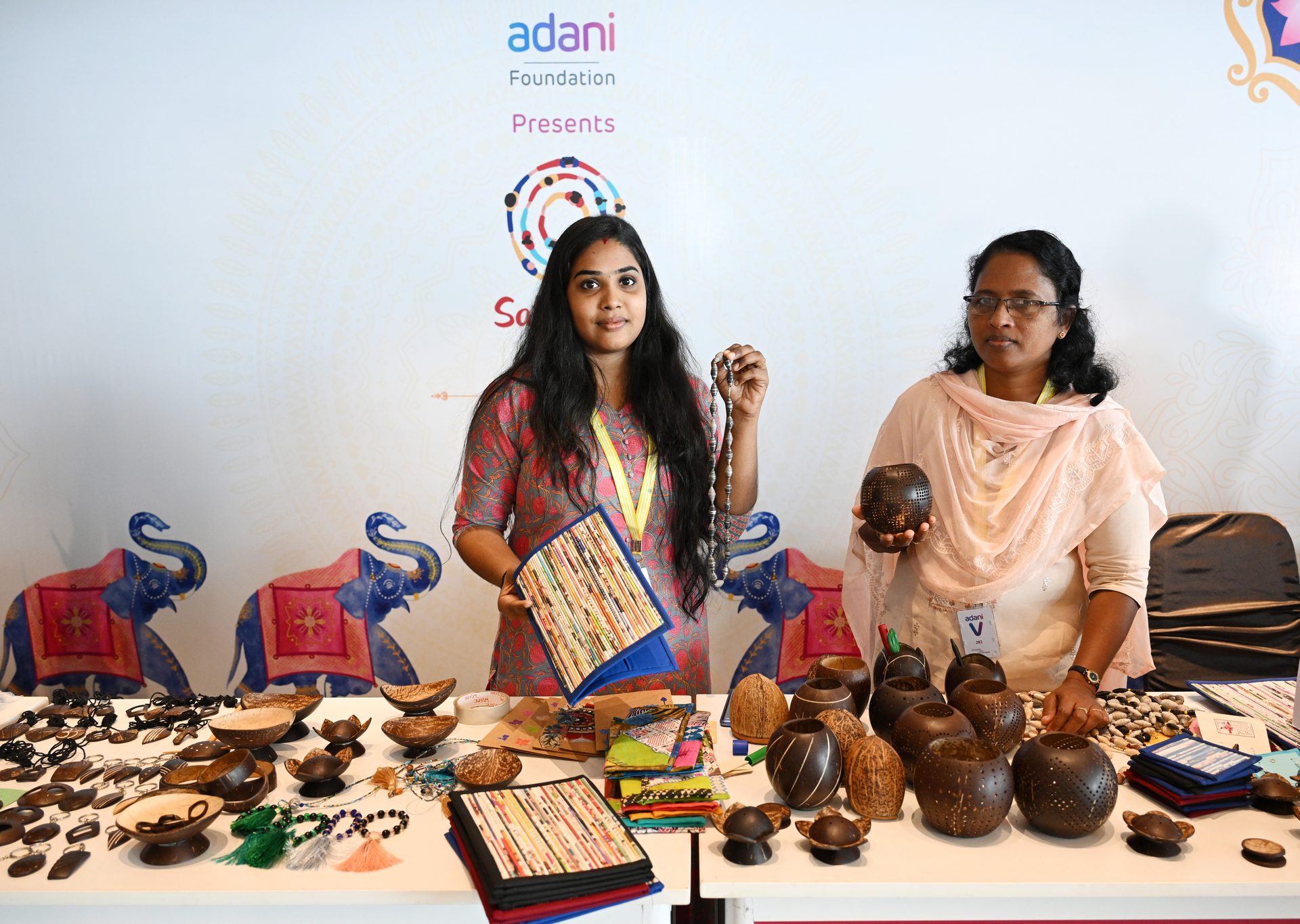

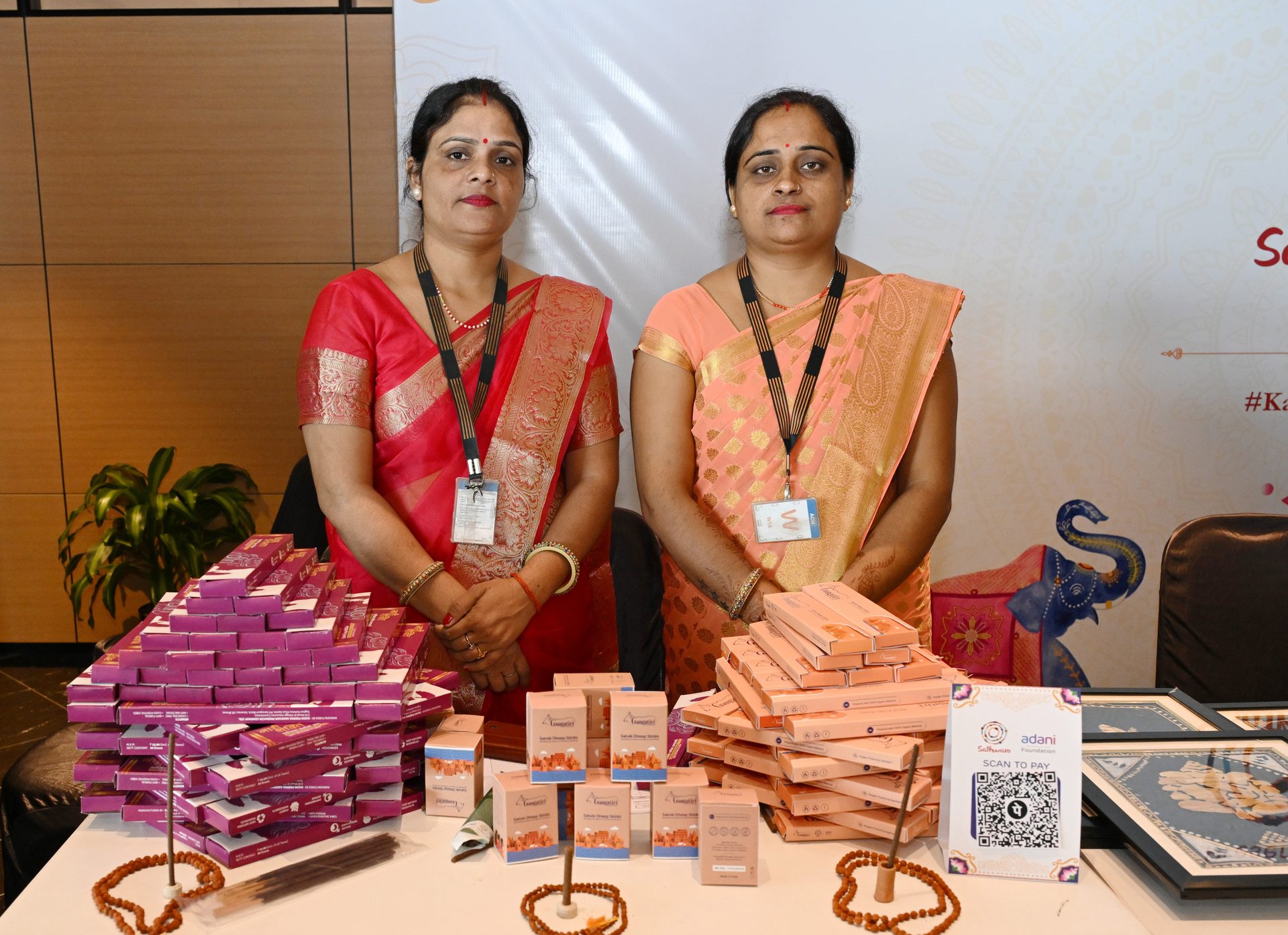
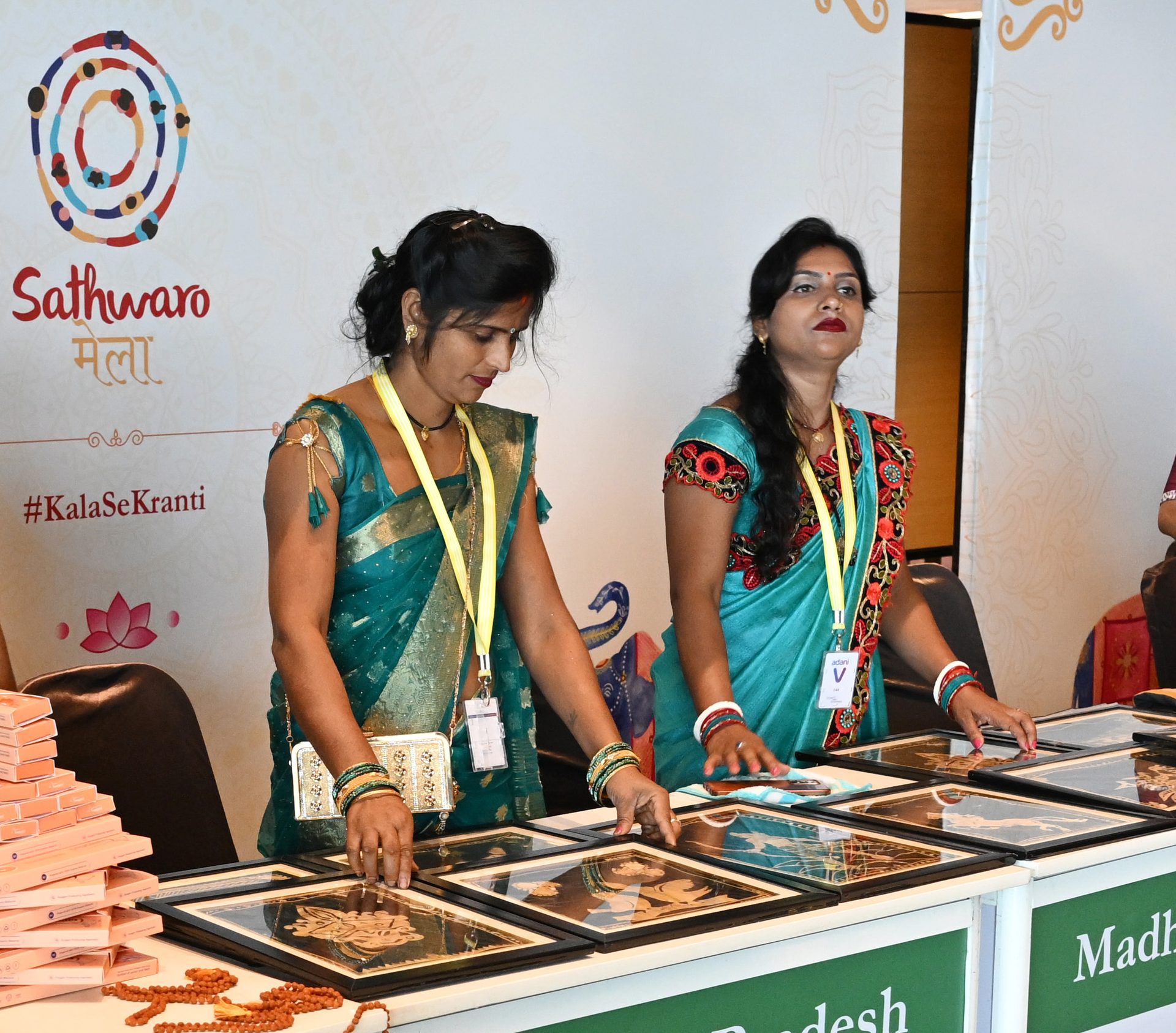
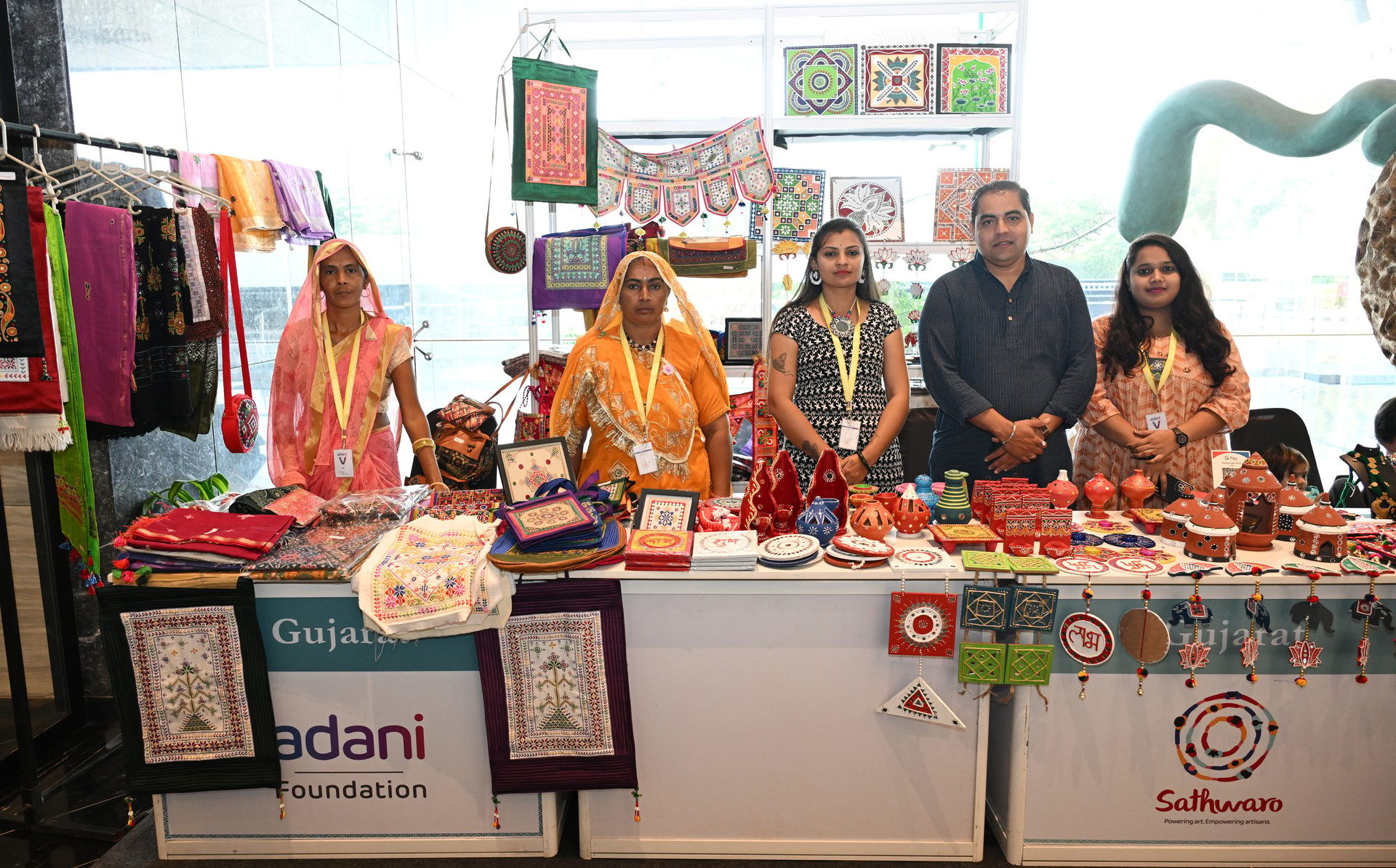
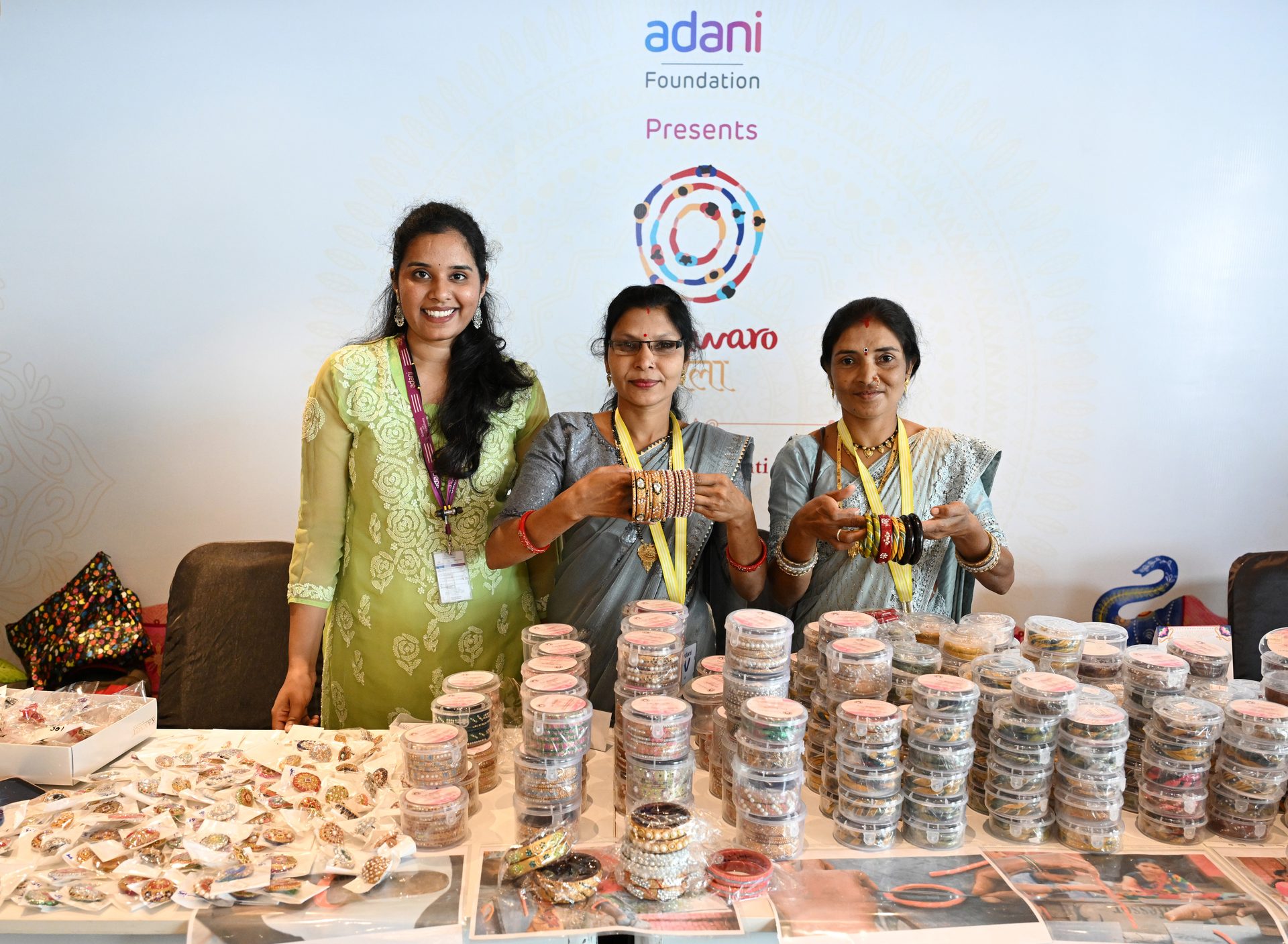
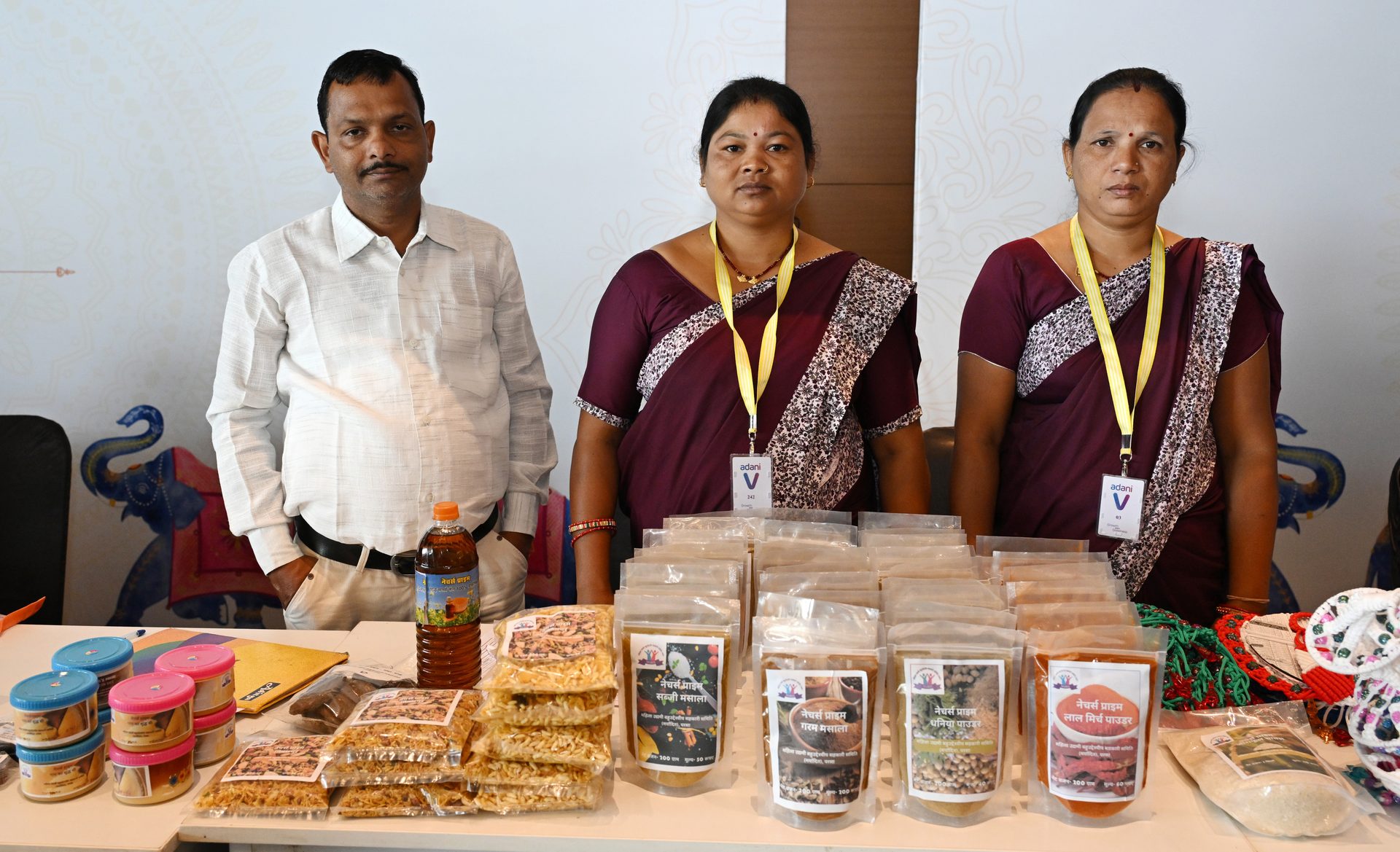
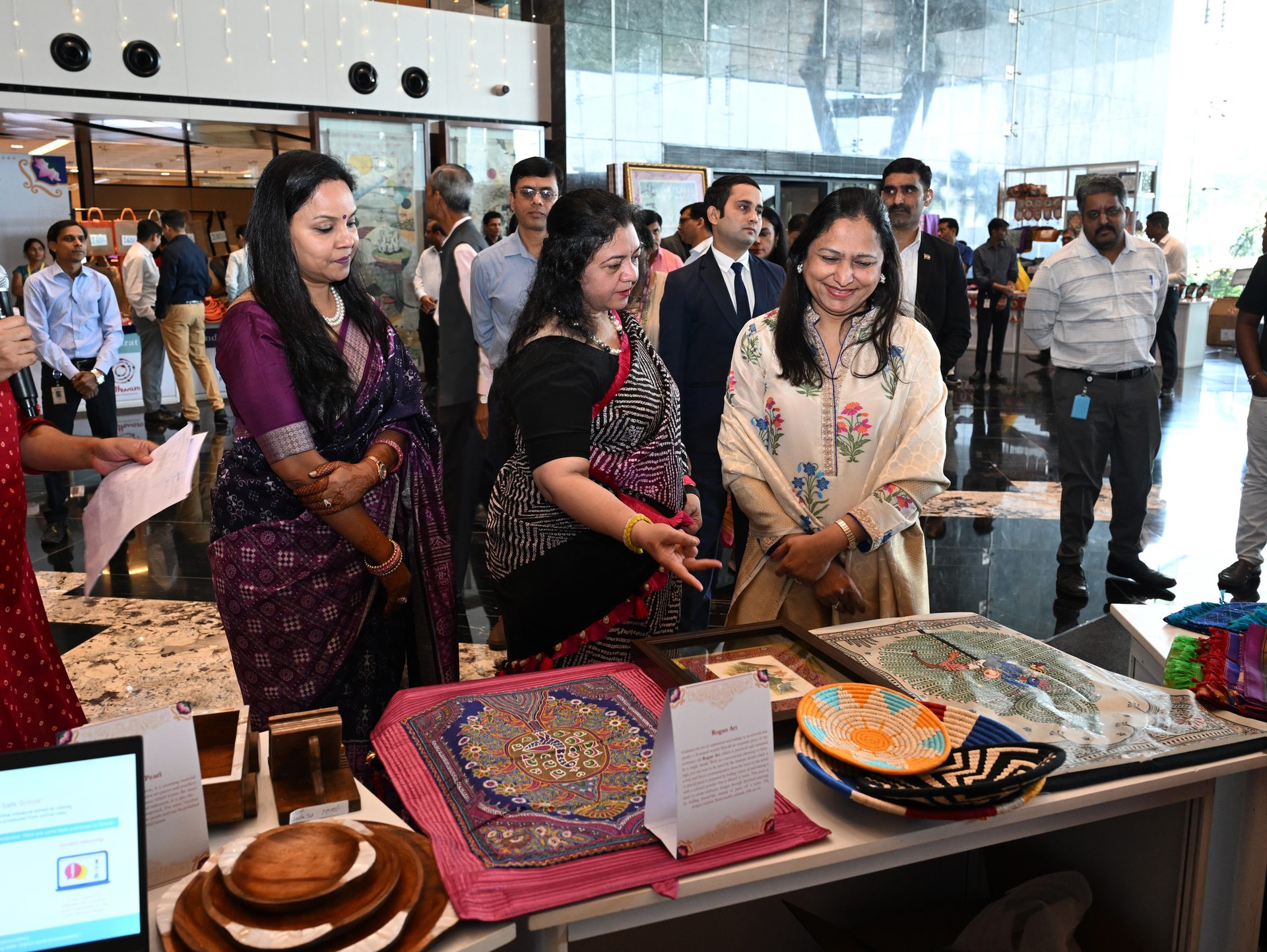
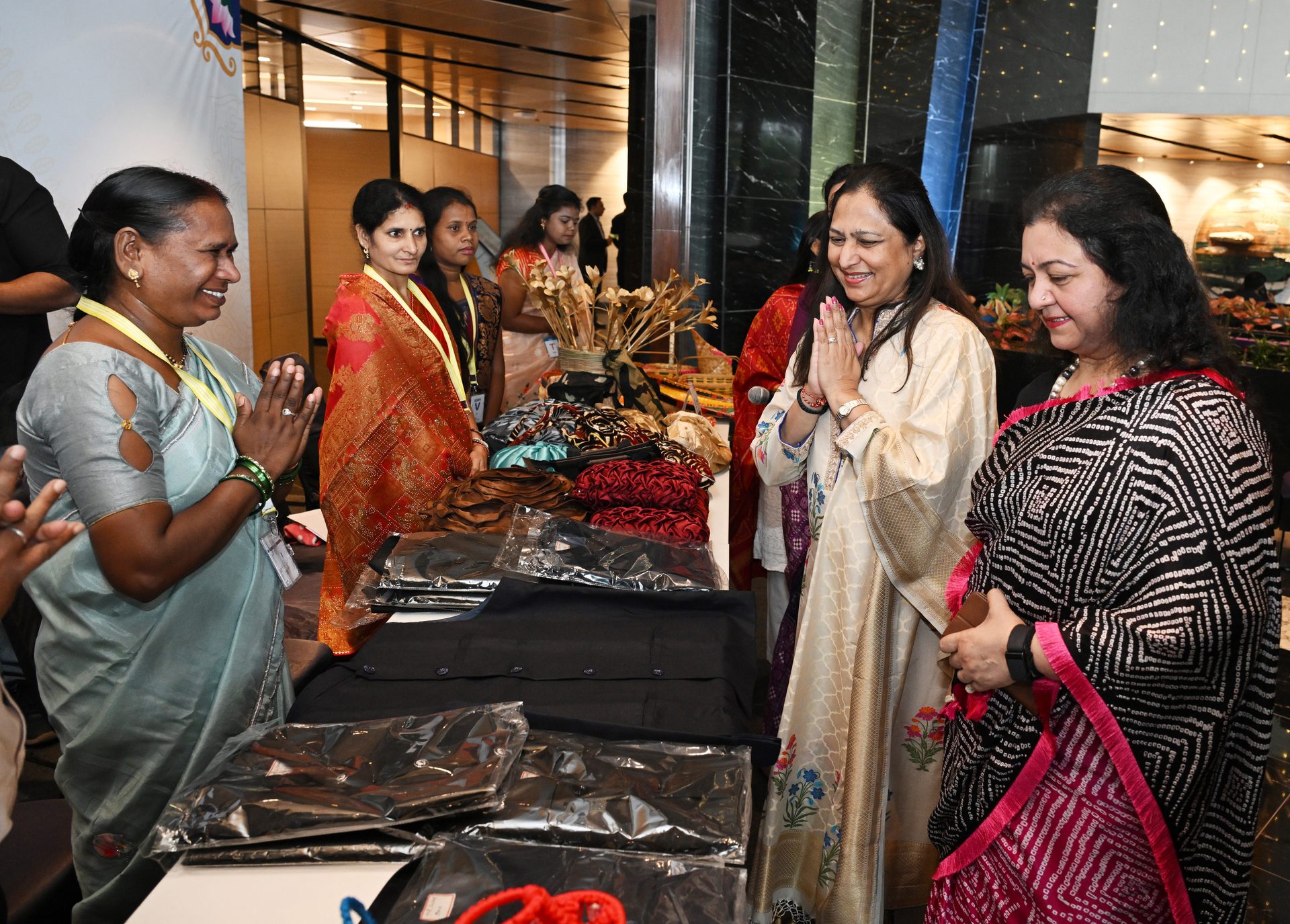
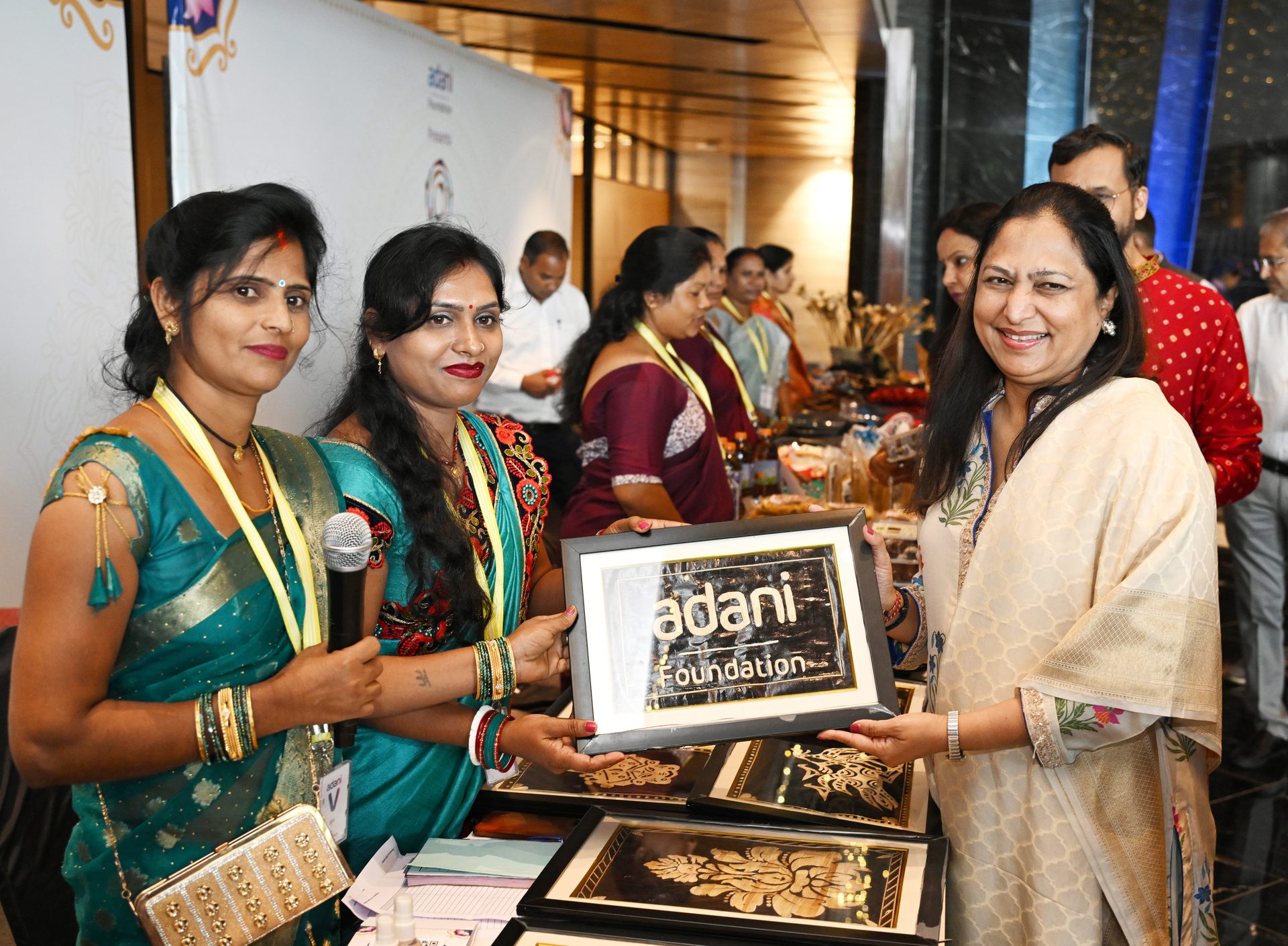

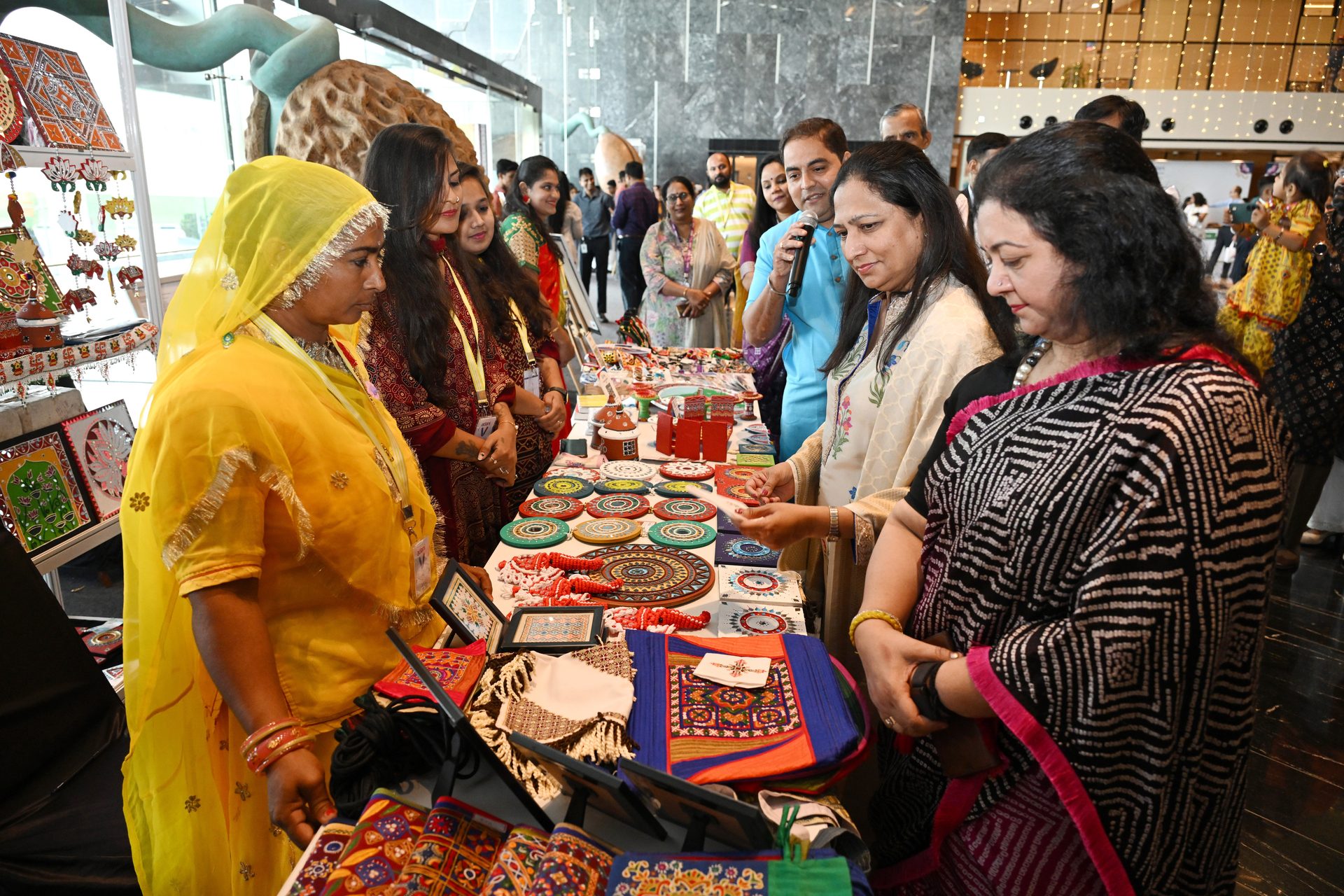
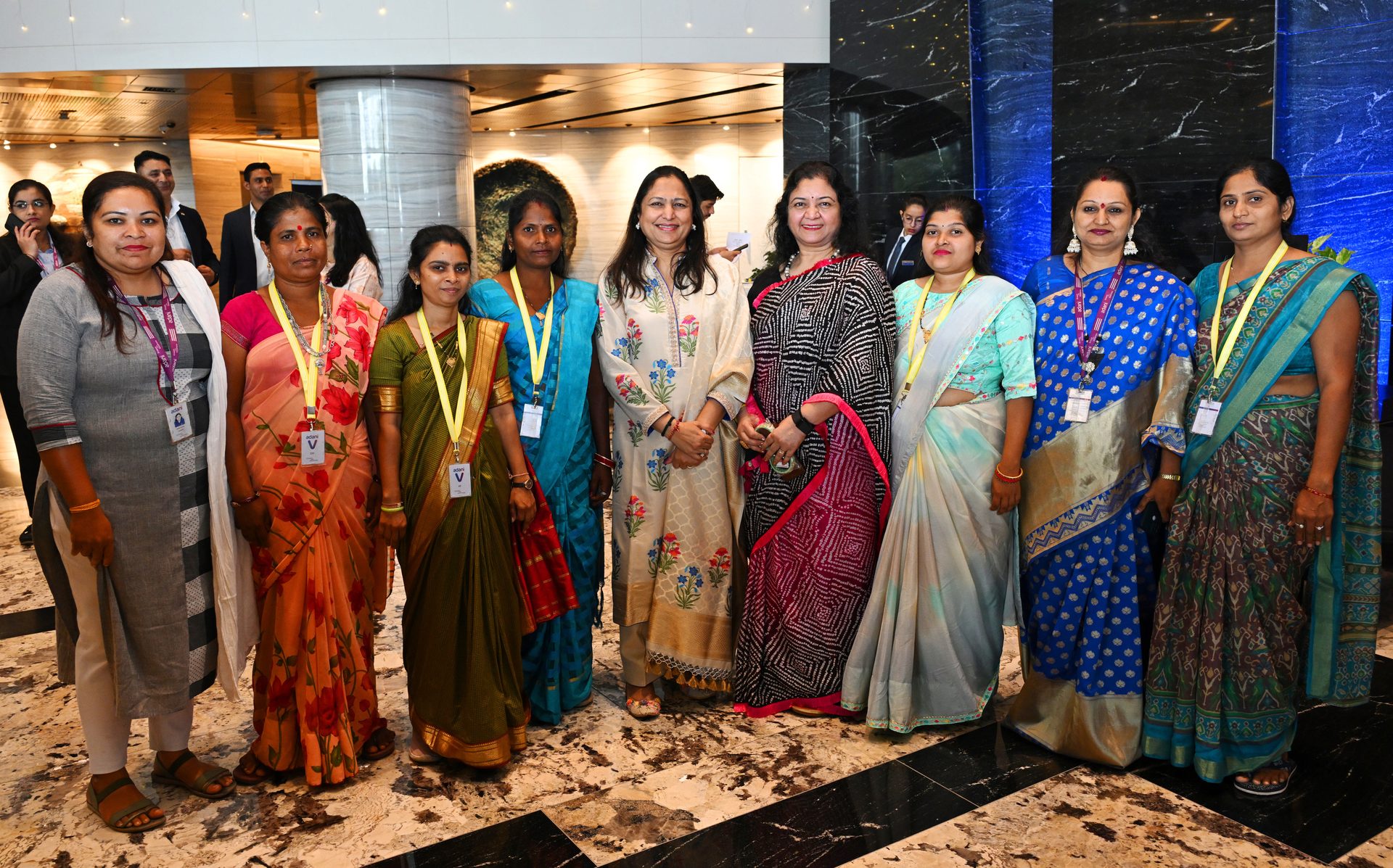
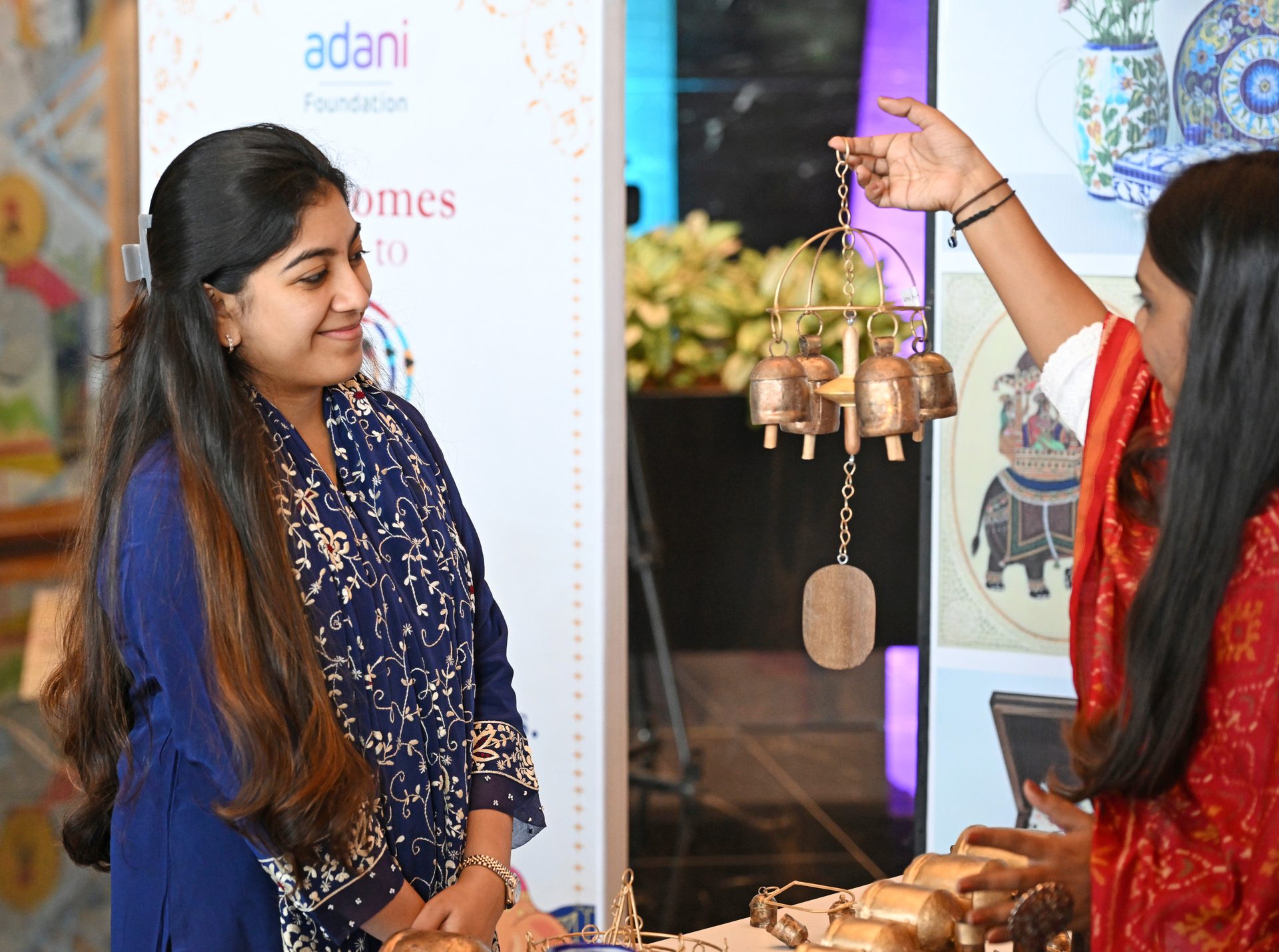
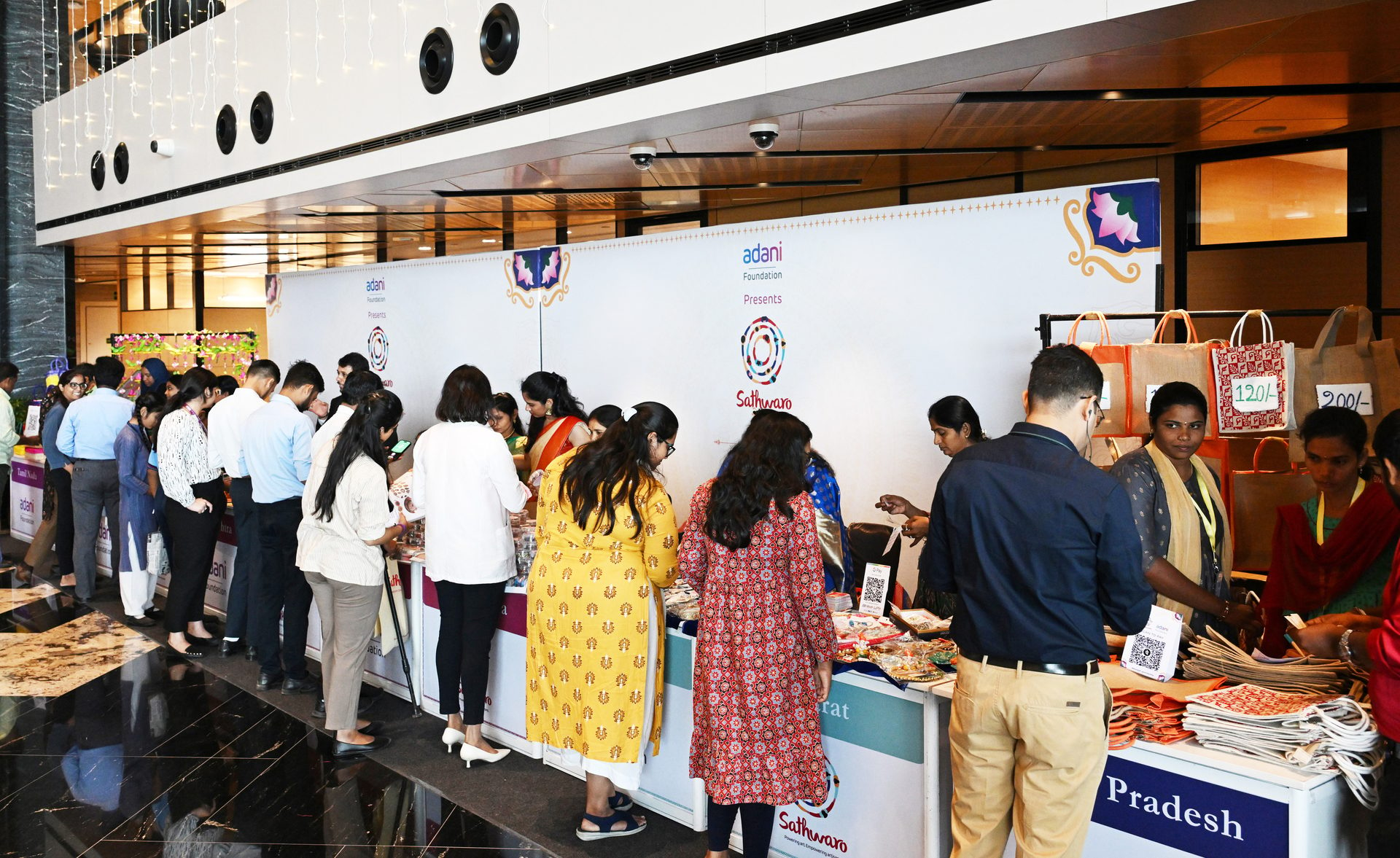


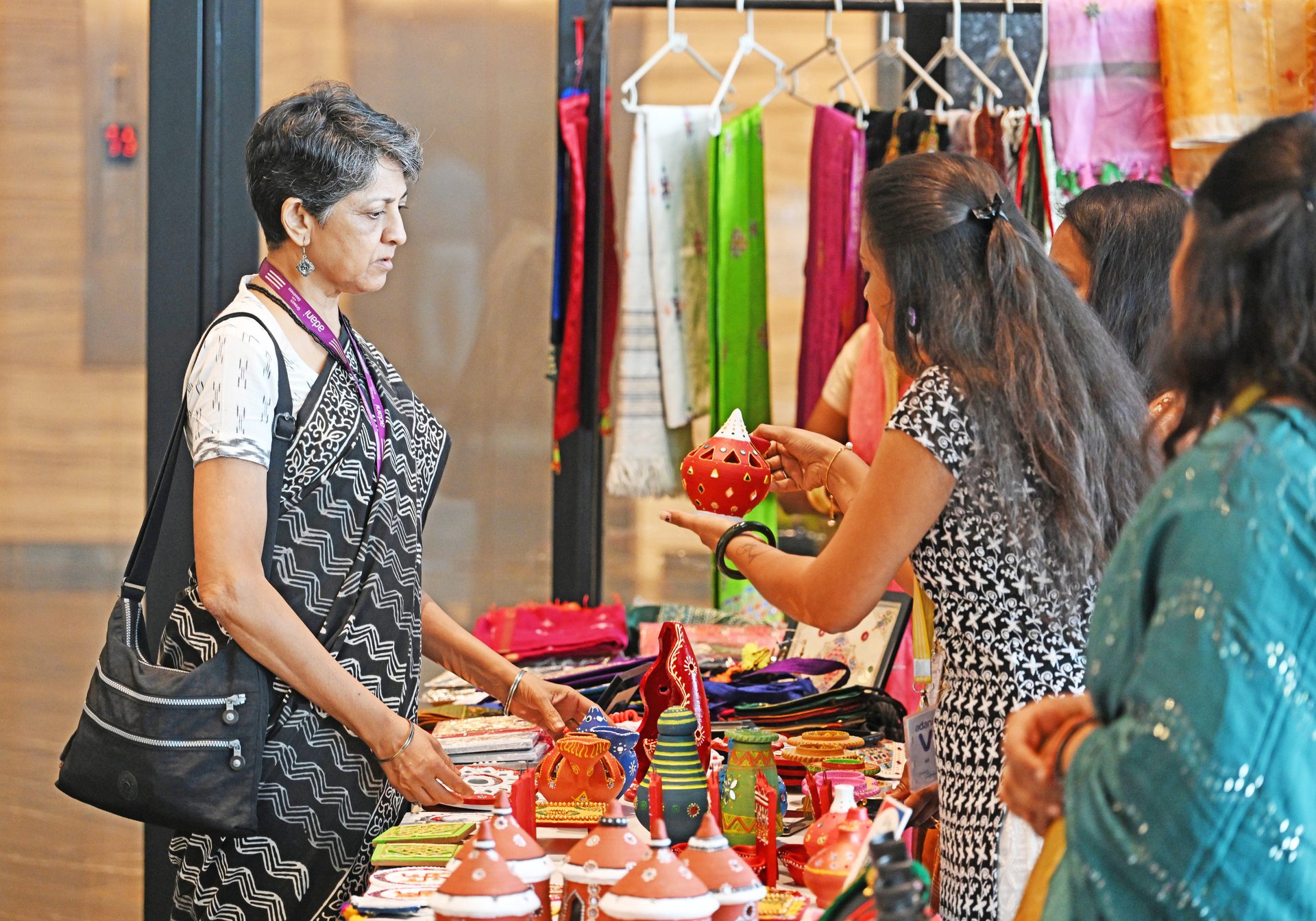
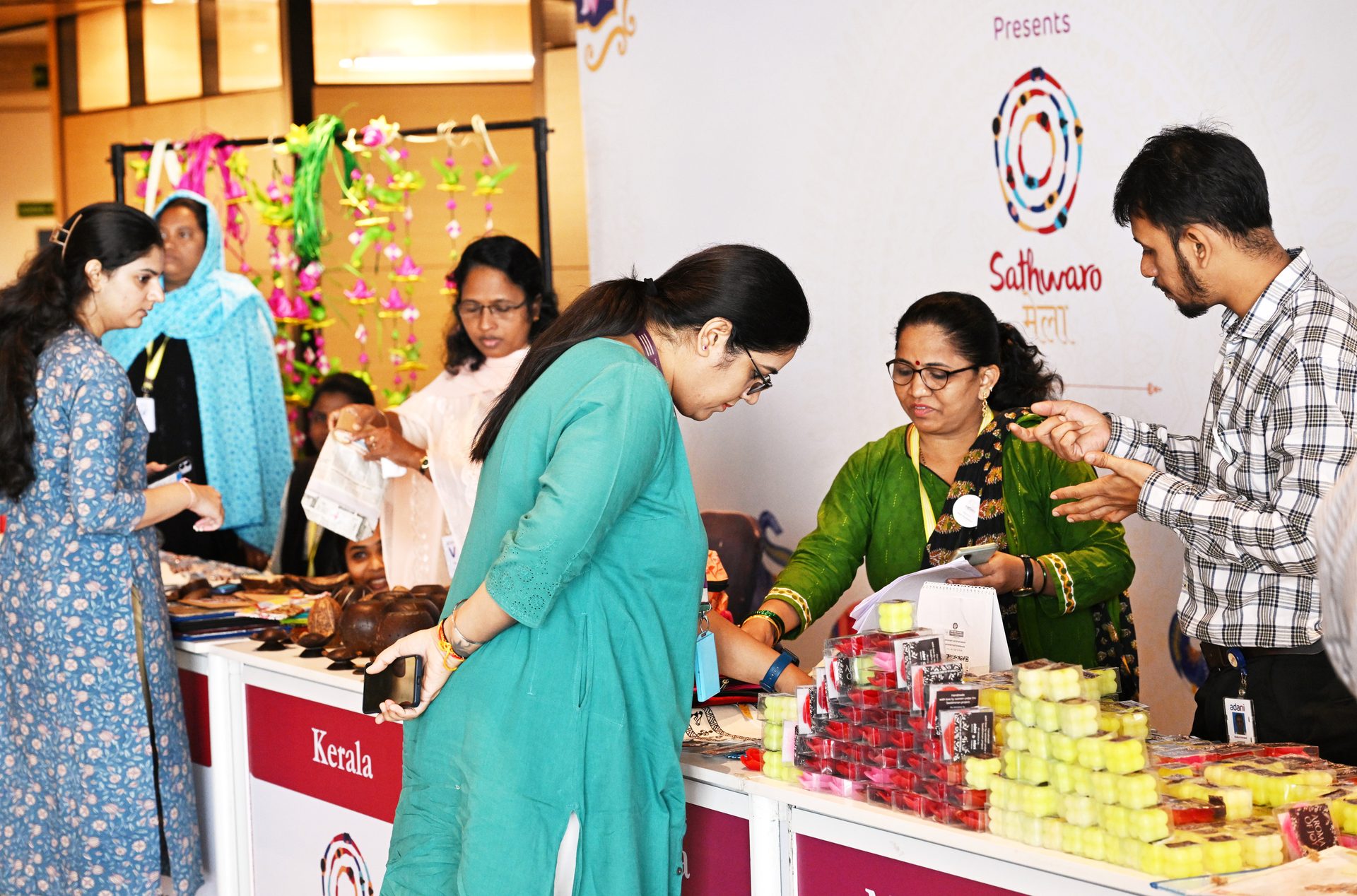
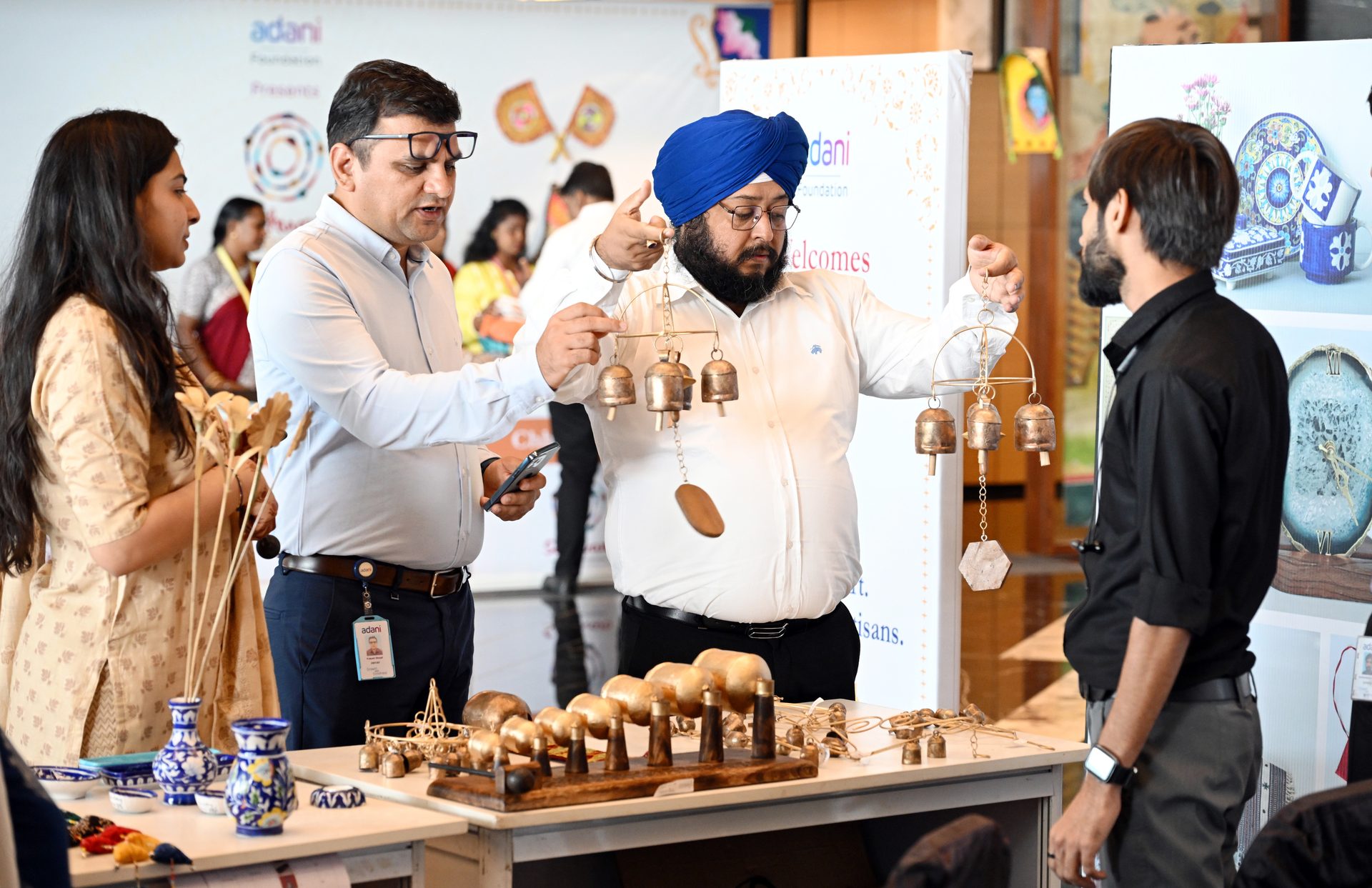
Why Sathwaro?
The crafts sector is India's second-largest source of employment after agriculture. It is estimated that this sector employs over seven million families. With a potential for high employment and with great economic importance in terms of foreign exchange earnings, crafts play a significant role in the country’s economy. But the picture is not all rosy.
Craftsmen are grappling with the inability to produce high-quality market driven artefacts. Despite superior skills, the wage growth of artisans has not kept pace with the income growth experienced by other sectors. To compound their woes, the younger generation is drifting away from the sector at an alarming pace. Sathwaro is an effort to bridge this gap.
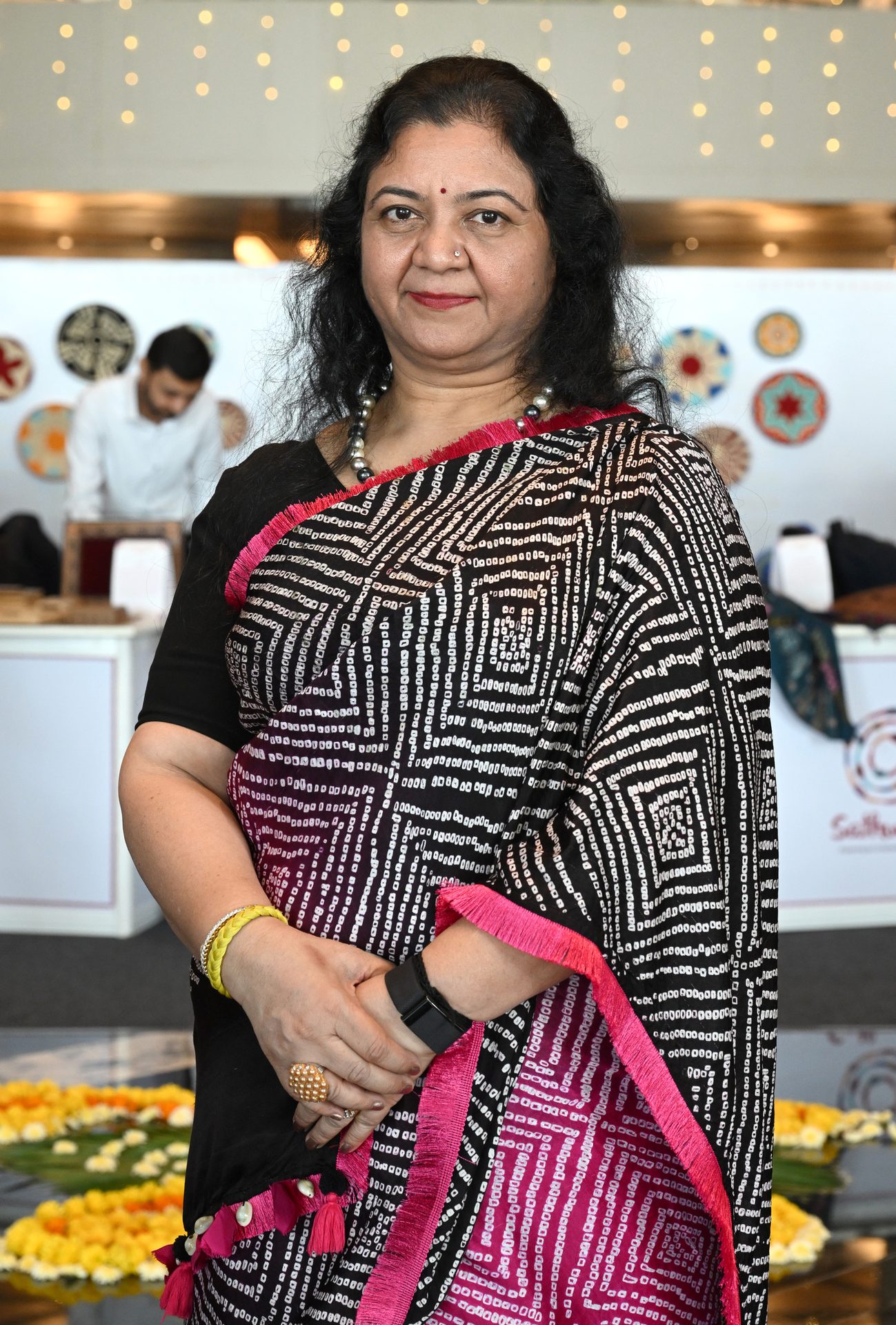
The challenges faced by Indian handicrafts and heritage craftsmen are real, but so is our collective power to make a difference. By understanding the pain and difficulties they encounter, we can take conscious steps to support and revive this valuable sector. Let us appreciate the artistic treasures of Indian handicrafts, embrace their cultural significance and champion the cause of empowering artisans. Together, we can ensure that the beauty of Indian handicrafts continues to enrich our lives and the generations to come.”
Shilin Adani
Trustee, Adani Foundation
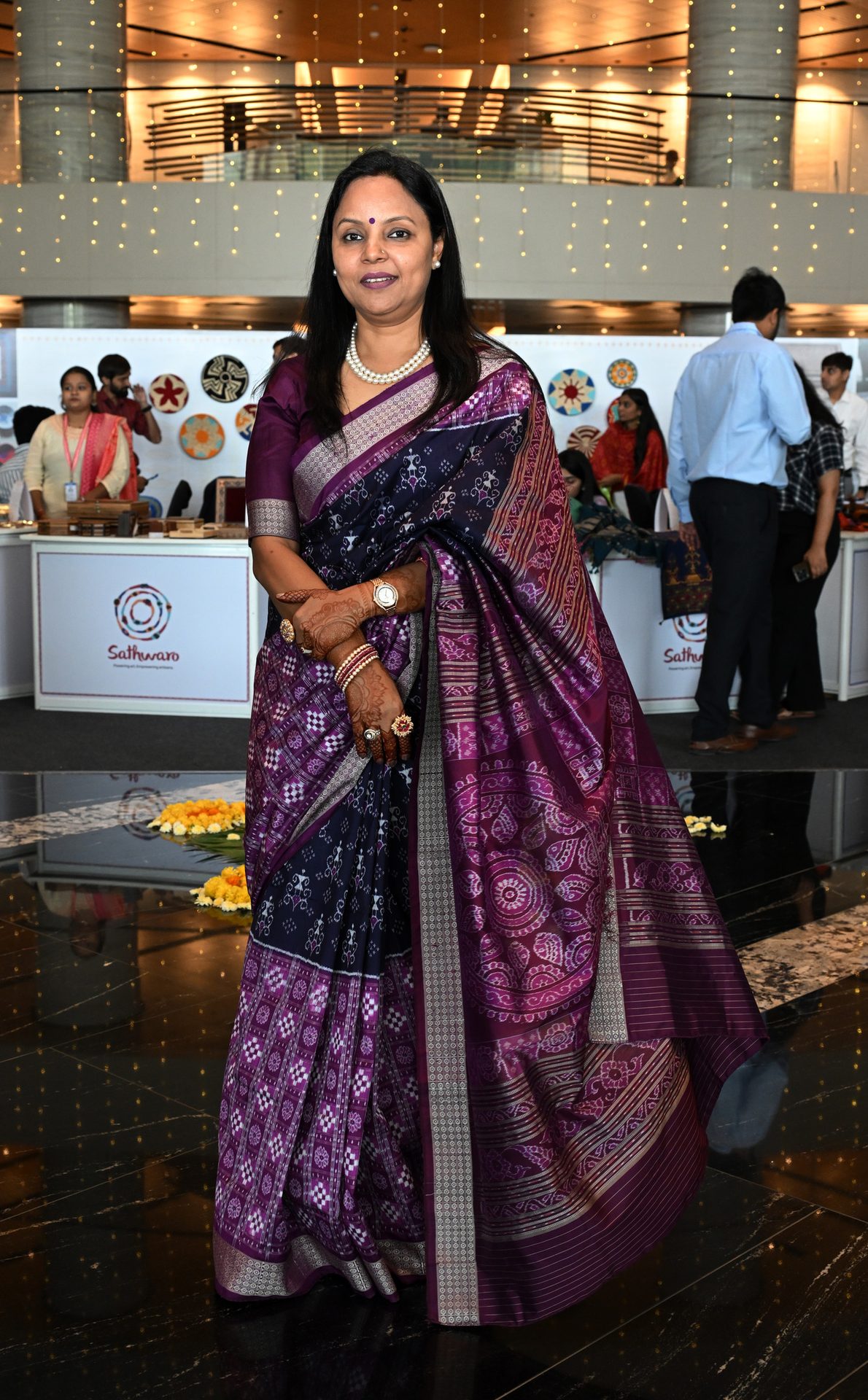
To revive Indian crafts sector, we are helping artisans and designers to collaborate to breathe new life into traditional crafts. By infusing contemporary design sensibilities with traditional techniques, artisans can create unique and marketable products that appeal to modern consumers. These collaborations not only provide a platform for artisans to showcase their skills but also bridge the gap between traditional and contemporary aesthetics.”
Asmita Goel
Advisor, Adani Foundation

There’s a requirement to contribute towards maintaining cultural identities at the national level. There is also a need to promote cultural handicrafts globally that will generate awareness and support artisans and their crafts. Through the revival of ancient crafts, Sathwaro aims to inspire the younger generation to carry forward India's cultural legacies. It also aims to align with Sustainable Development Goals (SDGs) related to economic growth, sustainable livelihood, and cultural preservation.”
Vasant Gadhavi
Executive Director, Adani Foundation
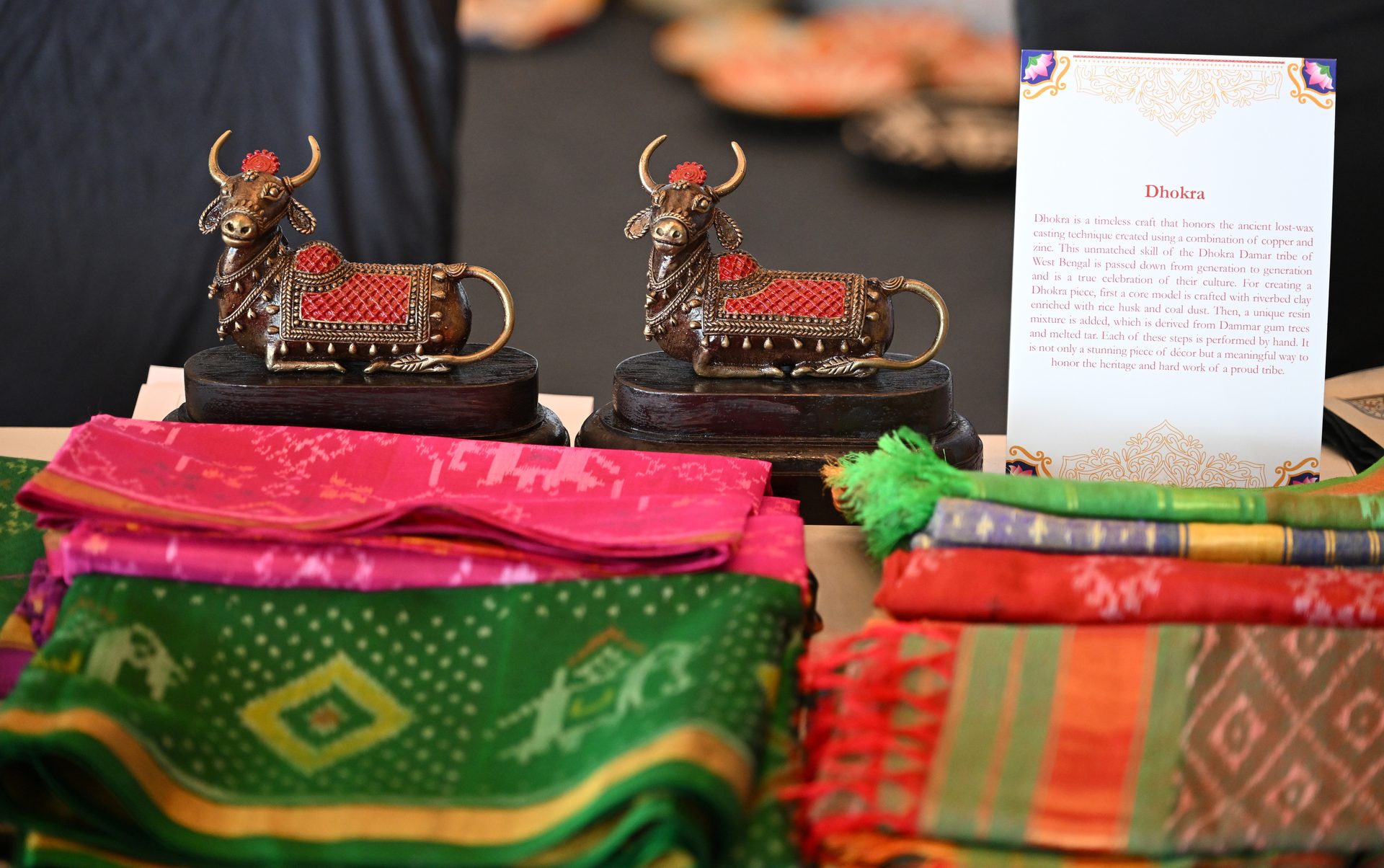
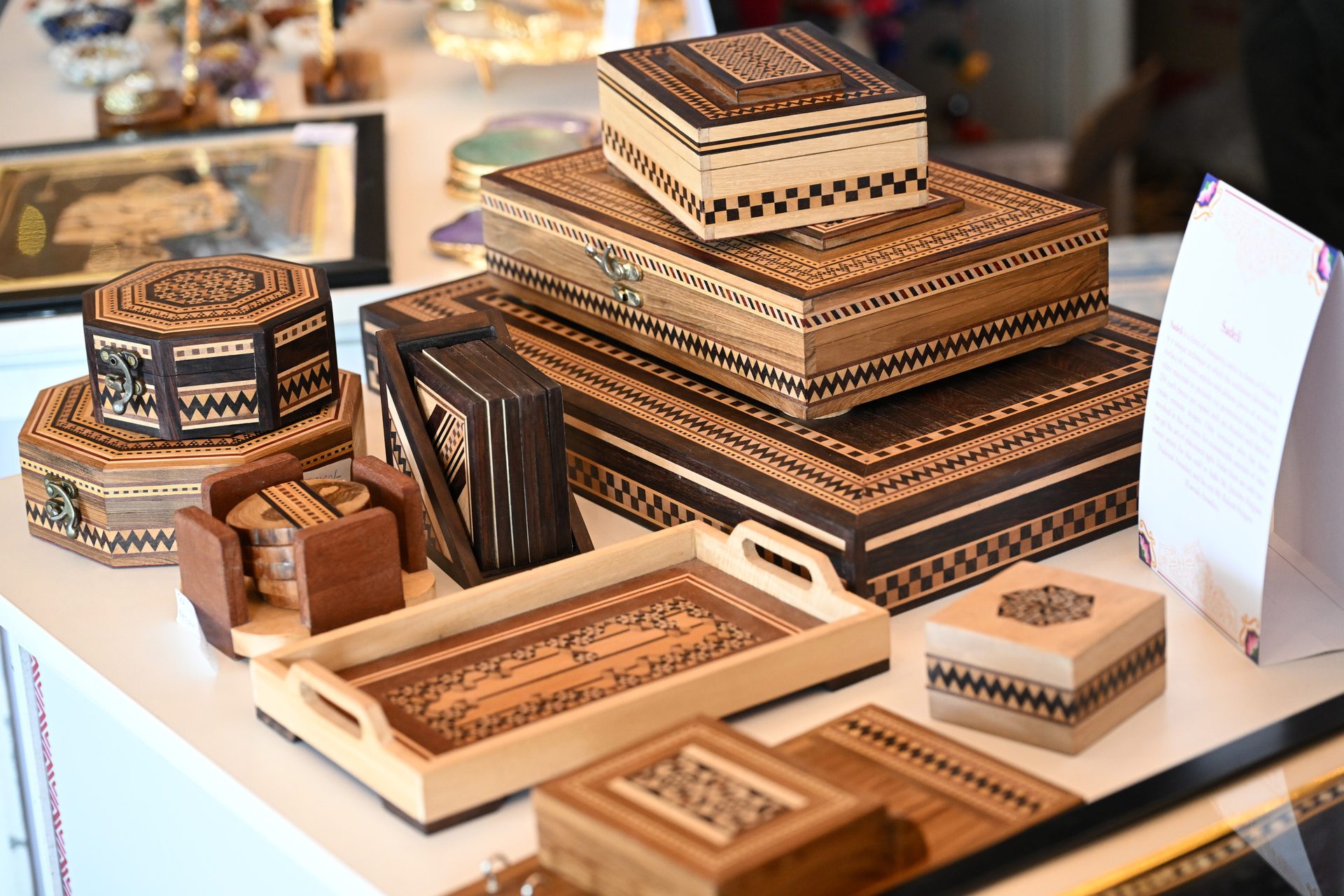
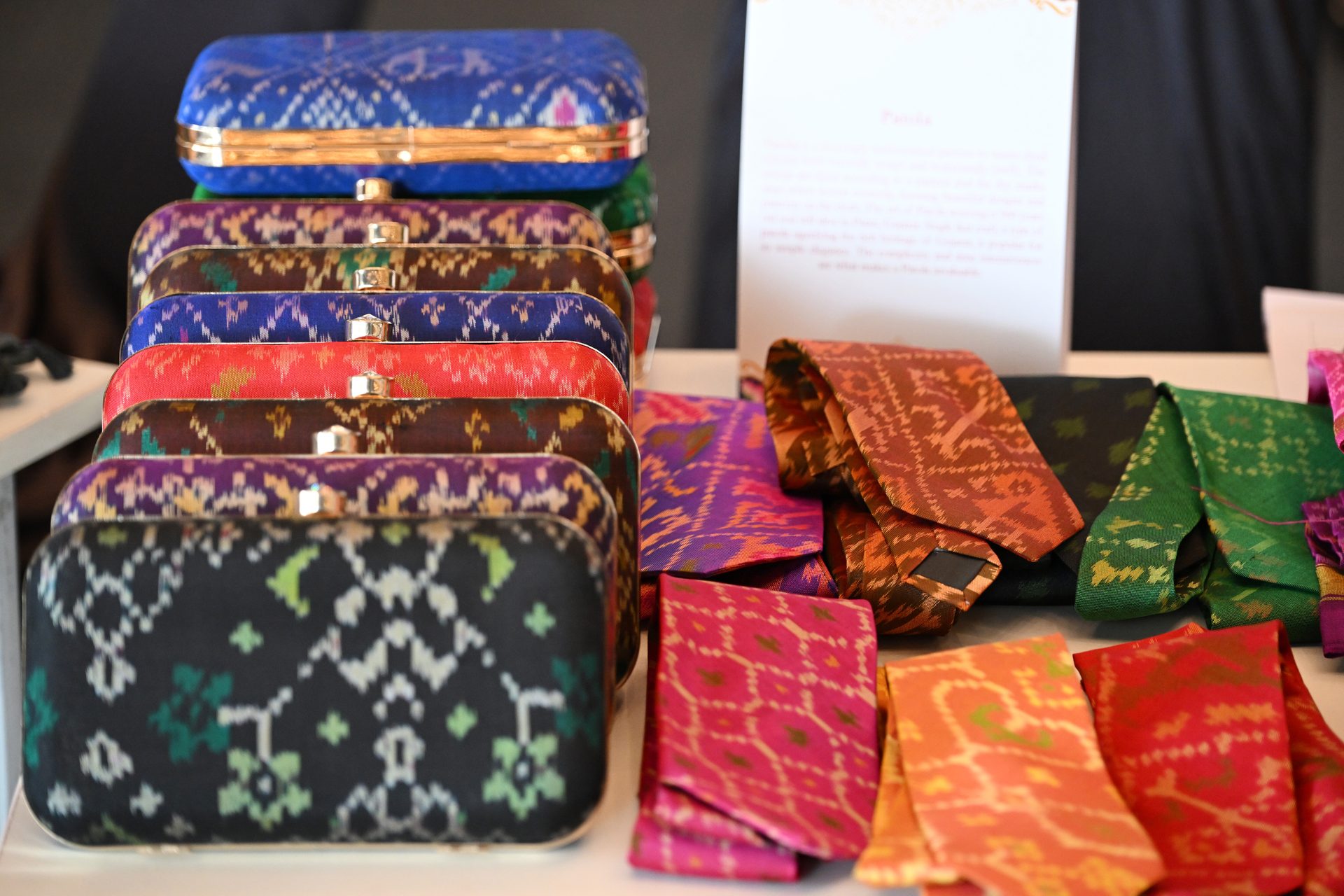
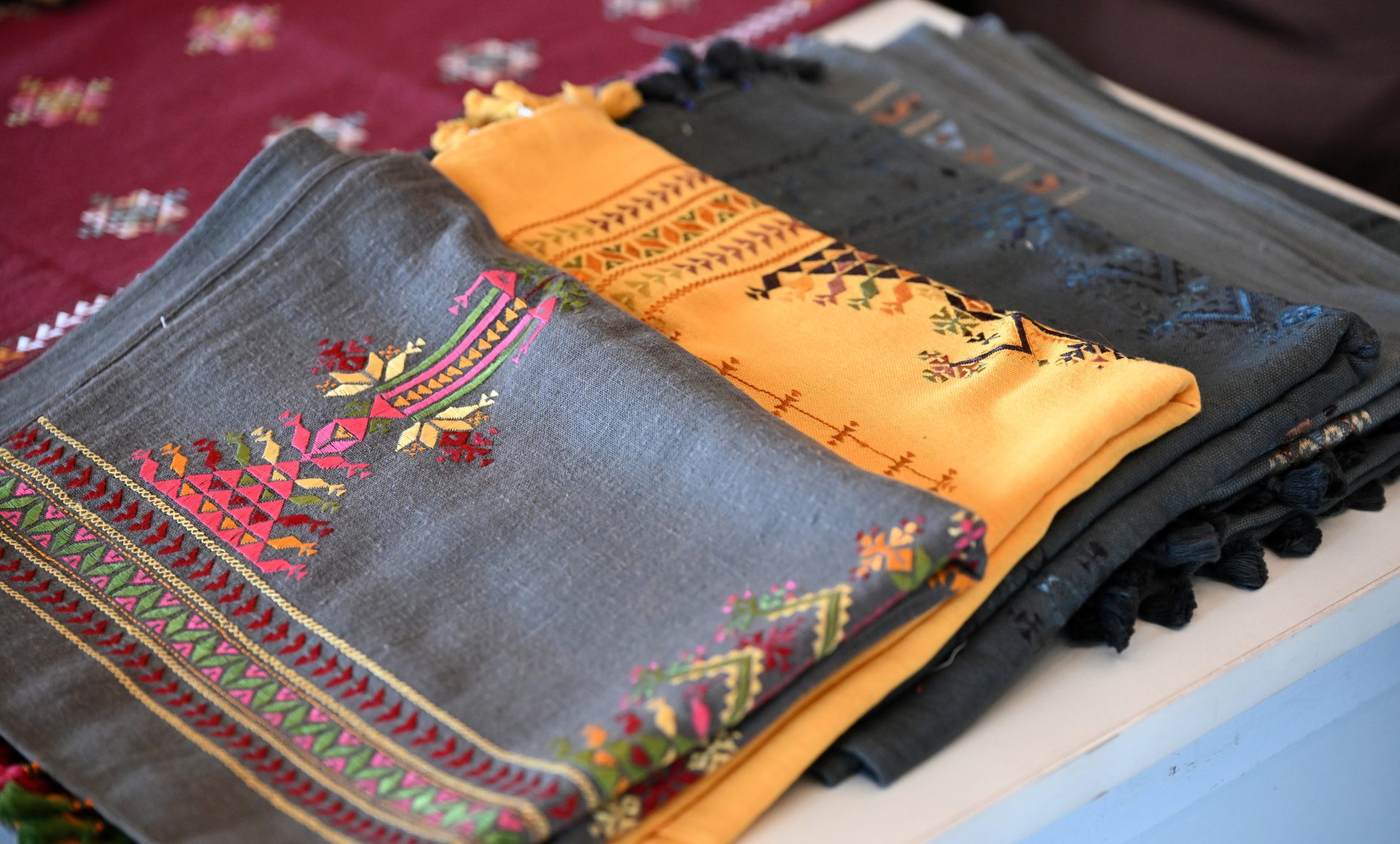

Leading
With Purpose
Chandra Shekhar Gowda shares his remarkable journey, the Adani Foundation’s unique approach and the principles that drive his impactful work.
leaderSPEAK
Dipika Rathi
Chandra Shekhar Gowda, the Chief Operating Officer of the Adani Foundation, is a man on the move. His journey in social development spans over two and a half decades, encompassing grassroots organisations, large NGOs, funding organisations and corporate giants. He has made significant contributions to areas such as public health, livelihoods, women’s empowerment, child rights, rural & urban development, social protection and urban governance.
Mr Gowda’s experience includes various roles like direct implementation, policy advocacy, consulting and strategic leadership, allowing him to connect the dots for better social outcomes and higher returns on investment.
He reflects on his humble beginnings, hailing from a small village named Nagarakanive, meaning valley of snakes (indeed there were several of them), with only 40 houses, where the nearest village was six miles away. He vividly remembers his childhood at home and later growing up in Bangalore as the eldest of three siblings. Despite facing early challenges, he went on to build a remarkable career in social work representing organisations in big forums and consulting in 16 countries so far.
In a candid conversation with a-connect on his birthday, Mr Gowda shares his experiences, his journey and what keeps him high in life.
Would you describe a typical day in your life?
I start my day at 6 am, sharing a special morning ritual with my wife Sheleen Sowjanya who lives in Bangalore with our 19-year-old son Adithya. This daily video call over a cup of coffee keeps me motivated and inspired. I then prepare breakfast and head to work. When I return home, I take a walk and spend quality time with friends and family. My evenings include cooking dinner, catching up on geopolitics and reading a few pages. I hit the bed by 11 pm.
How did your journey with the Adani Foundation begin?
My connection with the Adani Foundation began on 10 March 2021 — to be precise at 3:30 pm, during a trip to Panaji for work. An interview was scheduled and it turned out to be a memorable day. Meeting Dr Priti Adani and Dr Malay Mahadevia left a lasting impression. Their clarity of vision and values resonated with me. I recall calling my consultant after the meeting, expressing my gratitude for the opportunity to have had a chance to meet them, regardless of whether I got the job or not. As fate would have it, I was fortunate enough to secure the position, marking the beginning of a truly beautiful and fulfilling chapter in my career.
What has your journey with the Adani Foundation been like since then?
My journey with the Adani Foundation has been incredibly fulfilling. This journey has empowered me to make a meaningful impact on millions of lives, particularly those in vulnerable communities. The Adani Foundation’s work is generational, aiming to bring about significant changes in one generation and uplift the entire civilisation.
What motivates you every day to work at the Adani Foundation?
My motivation to work at the Adani Foundation stems from the opportunity to help people and influence change. I believe in the power of data and evidence to advocate for initiatives that benefit communities. My role allows me to influence the lives of millions, and I consider myself fortunate to have a direct impact on vulnerable populations. My daily drive is fuelled by the chance to create positive change and uplift an entire generation. When people ask me what I do, I tell them, I’m a part of a brigade that contributes to bringing lasting smiles on faces of millions.
What sets the Adani Foundation apart from other corporate giants in its approach to social work?
The Foundation’s unique approach of placing the community at the centre of its initiatives is what sets the Adani Foundation apart. The Foundation prioritises the needs of the community, making them the primary stakeholders. Collaboration and learning are also crucial aspects, with the Foundation embracing partnerships that bring diverse skills and experiences to the table. The Foundation’s inclusivity extends to women, hidden households, single mothers and differently-abled individuals, including tribals. It covers the core areas such as health, education, livelihoods and community infrastructure besides environment and access to social protection, to name a few.
The Adani Foundation aims to address multiple facets of community challenges, emphasising on results and empowering communities to be self-reliant. Here at the Foundation, we implement programs ourselves, maintaining direct engagement with the community to empower and to make them self-reliant.
What leadership principles have guided you in driving impactful projects at the Adani Foundation?
I credit my successful journey to five key principles. The first is having a clear vision and purpose and the same needs to be in sync with the vision of the organisation. I believe in empowering the team and to delegate responsibilities with authority. I believe we all should be accountable for achieving results or outcomes. I also underline the significance of continuous learning and ethics, which play a pivotal role in the social sector. I insist on maintaining ethical standards and fostering empathy for both team members and the communities we serve.
What inspired you to pursue a career in social work?
My inspiration to pursue a career in social work dates back to my childhood when I observed discrimination in my maternal grandparents’ village. This experience of witnessing social inequalities left an indelible mark on my conscience. I was determined to make a difference and challenge these societal norms, setting me on a lifelong path of social work.
What’s next for the Adani Foundation, and where will your focus lie in the coming years?
Looking ahead, I envision we becoming thought leaders in the space of creating sustainable outcomes for the communities. Besides broadening our impacts in our core thematic areas, I see a huge scope to intensify our work in the space of environment, climate change and intervention among differently-abled. Additionally, empowering women will remain a top priority, with the aim that when people think of women’s empowerment, they think of the Adani Foundation.
Any career advice for those looking to enter the field of social work?
For those looking to enter the field of social work, I emphasise the importance of having a clear purpose and staying committed to it. Continuous learning and maintaining high standards of ethical behaviour are also crucial. Stay true to your values and remain empathetic to both team members and the communities you serve.
How do you keep team morale high in challenging environments?
I truly believe that the team works in a very challenging environment. I start by acknowledging this and thank them for what they are doing. This is a good starting point. I believe in appreciating and celebrating small successes as well. I just don’t wait for the big thing to happen. If small successes keep coming, the big one is not far enough. Fostering a culture of recognition and gratitude goes a long way. Capacity building and career development also form part of these efforts.
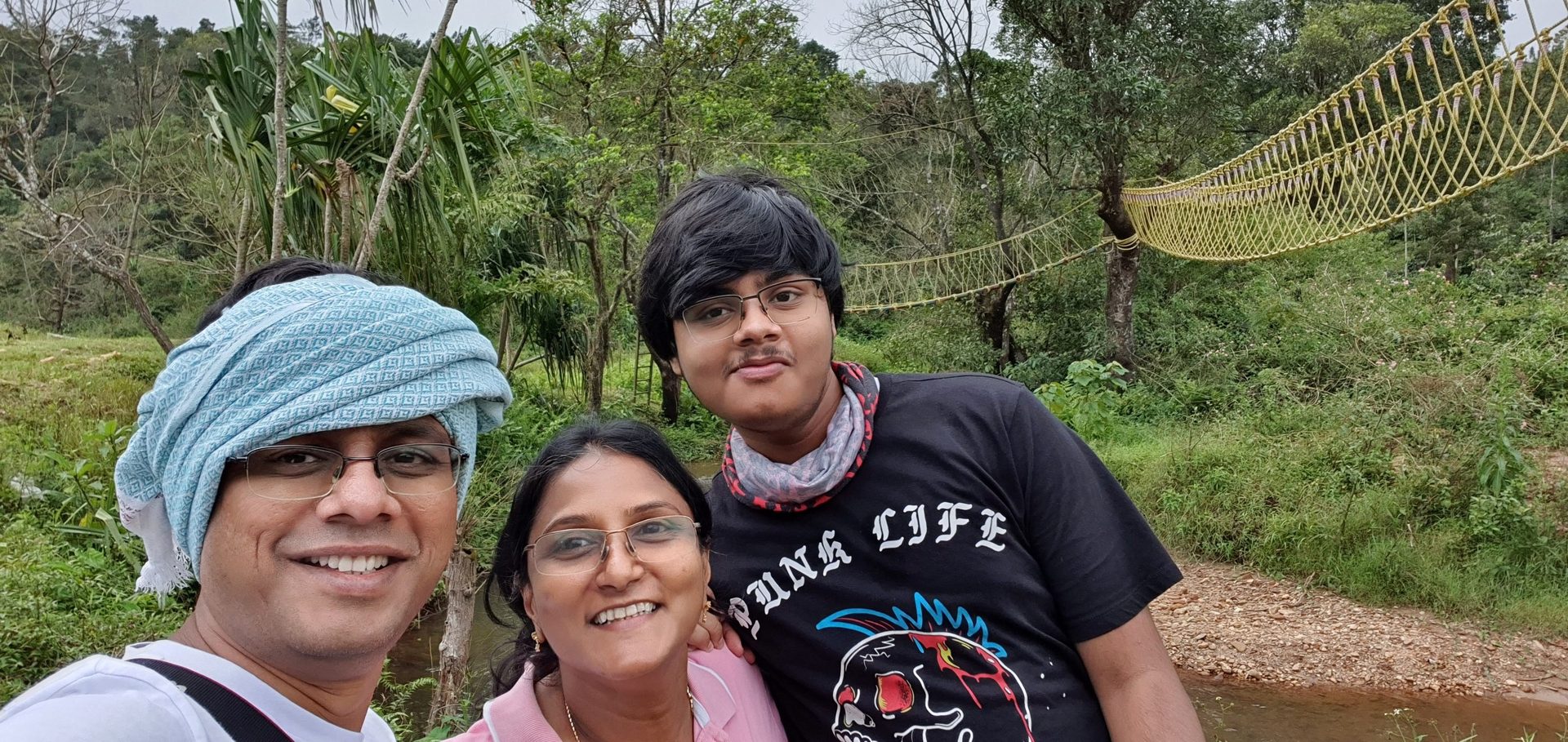
- Hobbies and interests?
For me, it’s all about long-distance motorcycle rides. I find solace in the open road, the wind against my face and the sense of adventure that comes with it. Additionally, I have a deep passion for photography, especially wildlife photography. It is not just about taking pictures; it’s about patience and being in the moment. Photography has taught me the art of mindfulness, the ability to immerse myself in the present, and truly appreciate it. After all, life itself is intoxicating – there’s no need for anything else.
- Food that uplifts your mood?
Chinese and Vietnamese cuisine. The bold flavours and aromatic spices never fail to brighten my day.
- Favourite local restaurant?
Cafe Mocha.
- All-time favorite movie?
One movie that has had a profound impact on my perspective towards life is ‘Zindagi Na Milegi Dobara’. It is a cinematic masterpiece that reminds me of the value of seizing the moment and cherishing life’s adventures.
- Book that has inspired you the most?
I’m an avid reader of management books, and one that stands out for me is ‘The Fifth Discipline’ by Peter Senge. It is a compelling exploration of organisational learning and systems thinking. Another book that has left a lasting impression on me is ‘Execution’ by Larry Bossidy & Ram Charan, which delves into the art of getting things done efficiently.
- Message for the readers?
Read to lead. Books are a treasure trove of knowledge and wisdom. They have the power to shape your perspective, refine your skills and lead you on a path of continuous improvement. So, don’t underestimate the transformative potential of a good book.
Quick Talk

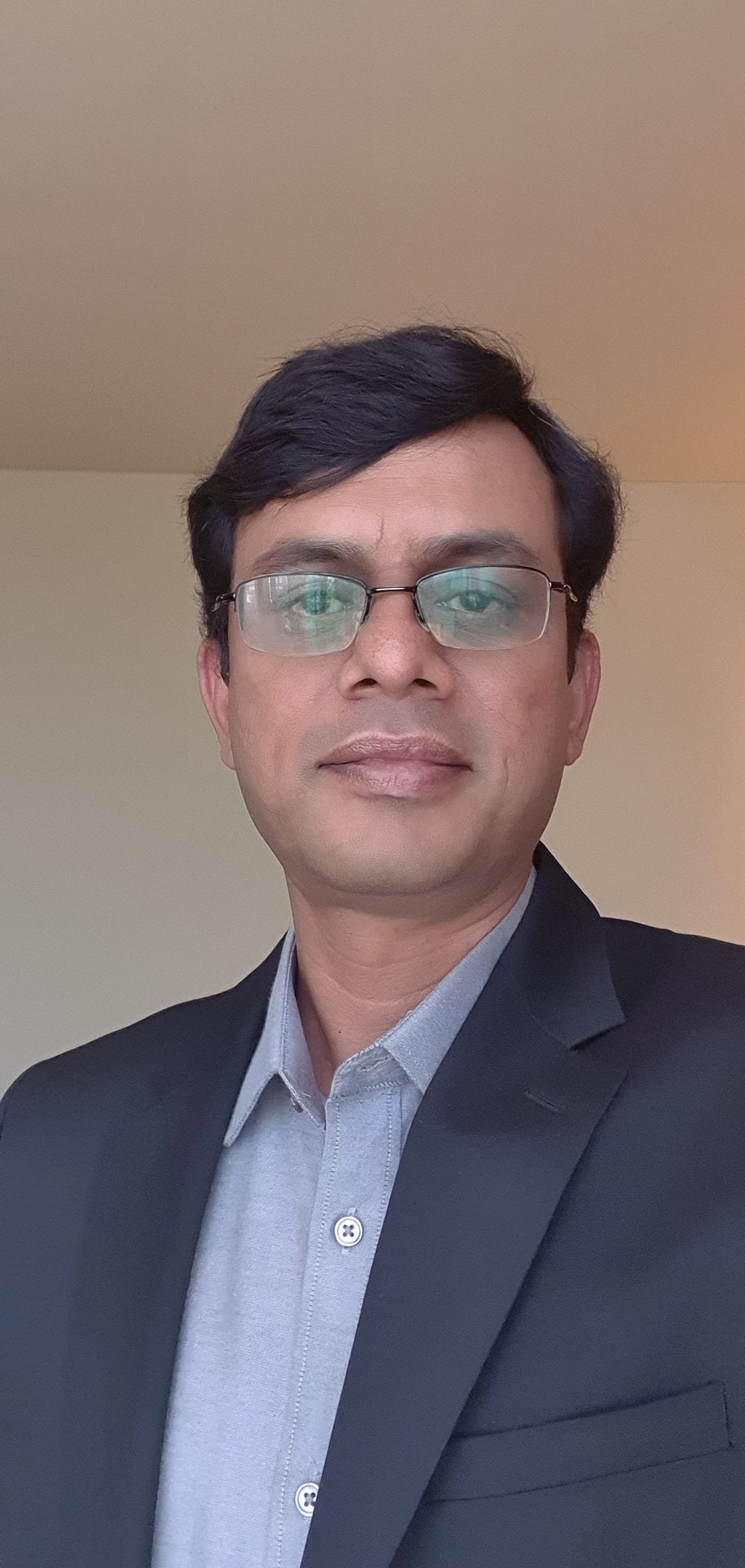
My role allows me to influence the lives of millions, and I consider myself fortunate to have a direct impact on vulnerable populations. My daily drive is fueled by the chance to create positive change and uplift an entire generation."
Chandra Shekhar Gowda with wife Sheleen Sowjanya and son Adithya.
Unearthing the Truth
The hidden realities of mining and smelting in a sustainable world
EXPERTSPEAK
Mohanasundaram Natarajan
In the age of smartphones, electric vehicles and the growing demand for sustainable energy solutions, it is easy to take for granted the minerals that power our modern world. However, the vital role of mining and smelting in ensuring a brighter, greener future often goes unnoticed, overshadowed by misconceptions and negative perceptions.
Far from the dirty, child labour-ridden and forest-destroying industry some may imagine it is, mining is, in fact, one of the most environmentally regulated sectors worldwide. It plays a pivotal role in our daily lives, from powering our homes and vehicles to facilitating the technology that connects us globally. The spectrum of minerals essential for our modern existence is vast, encompassing coal for power generation, copper for electricity conduction, aluminium for casings, cobalt and niobium for semiconductors and capacitors, silica for mobile phone screens and gold in connectors.
While these critical minerals remain the backbone of our technological revolution, the world is racing toward a future where their scarcity could imperil our sustainable energy transition. Copper, often called the ‘key transition metal’, is at the heart of this challenge. Global consumption of copper by green energy sectors is projected to skyrocket fivefold over the next decade, fuelled by the remarkable growth in electric vehicles (EVs) across the globe. This remarkable shift sets the stage for an unprecedented surge in demand.
According to a report by Wood Mackenzie, mining companies are poised to invest a staggering USD 1.7 trillion over the next 15 years to meet the escalating demand for the copper, lithium, graphite, cobalt and nickel required to usher in a low-carbon world. But the mining industry faces formidable challenges that cannot be overlooked.
We find ourselves at a tipping point where mine grades are diminishing, and the time required to discover and develop new mines is lengthening. The typical duration to bring a mine into production globally, starting from exploration, ranges from 8 to 15 years, varying by jurisdiction. Over the past decade, the mining sector has grappled with chronic underinvestment in exploration and development, with 2021’s global exploration budgets being only half of what they were in 2012.
Furthermore, a concerning reality is that 80% of new copper production comes from just five relatively small mines, underscoring the industry’s over reliance on a handful of operations. Recent developments in major copper-producing nations like Chile, Peru, China and Russia have compounded these concerns. These countries are either facing higher taxes and royalties, internal turmoil or restrictions on critical mineral exports—threats that are placing our access to these invaluable resources in jeopardy.
Amidst this global challenge, India has emerged as a forward-thinking nation, taking proactive steps to address the impending shortfall in critical minerals. The Indian government has formulated a critical minerals list and industry leaders like Adani are stepping up to secure the nation’s mineral supply.
Adani’s metals verticals have developed a phased approach to provide 1 million tons of copper to India, with a strong emphasis on recycling metals within the circuit and optimising smelter operations to extract all possible metals efficiently. Adani is actively pursuing a range of domestic and international assets to ensure a robust and reliable supply of essential minerals.
In a world where the transition to clean energy and sustainable technologies is no longer a choice but a necessity, it is imperative that we recognise the unsung heroes behind the scenes—our mining and smelting industries. These industries are the invisible lifeline of our modern society, ensuring that the essential minerals we often take for granted continue to power our way into a greener, more sustainable future.
The writer is Business Head - Strategic & Precious Metals, Adani Enterprises.
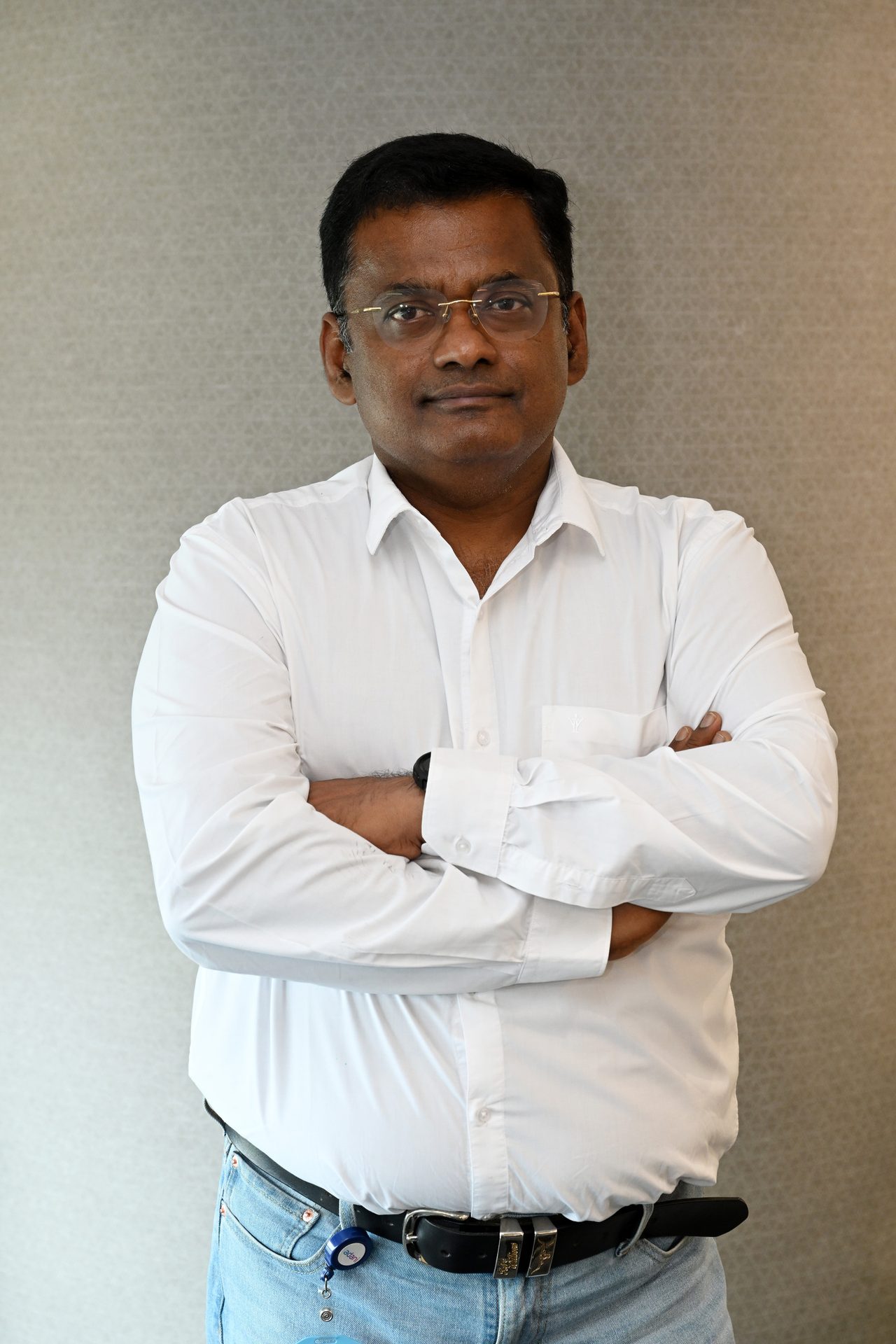
Adani’s metals verticals have developed a phased approach to provide 1 million tons of copper to India, with a strong emphasis on recycling metals within the circuit and optimising smelter operations to extract all possible metals efficiently.”
Adani Q2 Results Highlights
KEY NUMBERS
ADANI PORTS & SEZ
Profit Rises 1.37% to INR 1,762 Cr
India's largest private port operator's revenue increased to INR 6,646 crore for the Quarter ending September 2024, with Cargo Volumes going up by 17% to 101.22 MMT & Container Volumes going up by 24% to 2.61 Mn TEUs. APSEZ’s EBITDA with Forex impact reflects 27% YoY jump (INR 3,664 crore in Q2 FY24 vs INR 2,891 crore in Q2 FY23). Furthermore, the company reported 1.37% rise in Consolidated Profit After Tax, totalling INR 1,762 crore. The logistics revenue increased on account of higher rail volume (up 32% YoY) and GPWIS cargo (up 44% YoY). The number of trains went up by 9 during the quarter.
adani POWER
Net Profit Jumps Nine-Fold Over Demand Surge, Tax Gain
Consolidated profit jumps over nine-fold to INR 6,594 crore in Q2 FY24 due to higher one-time income and deferred tax assets. Consolidated Profit After Tax for Q2 FY24 (July-September) was higher by 848% at INR 6,594 crore vs INR 696 crore for Q2 FY23; due to improved EBITDA, higher one-time income, and recognition of deferred tax asset. Consolidated Continuing Total Revenue for Q2 FY 2023-24 stood 61% higher at INR 12,155 crore, as compared to INR 7,534 crore in Q2 FY 2022-23. Consolidated continuing EBITDA for Q2 FY24 is higher by 202% at INR 4,336 crore.
adani GREEN ENERGY
Profit More Than Doubles On
Higher Power Sales
Adani Green’s energy sales rose 87% in the quarter, mainly driven by solar-wind hybrid category, revenue from power supply surged by 80% to INR 1,984 crore, compared to INR 1,105 crore in Q2 FY23. EBIDTA from power supply also saw a substantial increase, rising by 62% from INR 1,131 crore in Q2 FY23 to INR 1,835 crore in Q2 FY24, and cash profit increased by 72% to INR 1,031 crore.
adani total gas
EBITDA Increased 23 % YoY to INR 290 Cr
In the second quarter of FY24, there was a significant 20% growth in CNG volume. Although there was a marginal dip in revenue from operations to INR 1,178.08 crore compared to INR 1,190.37 crore in the same period last year, Profit After Tax (PAT) also showed a 20% increase, amounting to INR 168 crore. The company reported a standalone EBITDA of INR 290 crore for the quarter under review, up by 23% from INR 236 crore on a YoY basis. Additionally, total sales performance grew by 10%, going from INR 190 crore in Q2 FY23 to INR 211 crore in Q2 FY24.
adani ENTERPRISES
39% rise in EBIDTA to INR 2,979 Cr
The Adani Group's flagship firm Adani Enterprises reported a surge in EBIDTA by 39% to INR 2,979 crore on account of strong incubating businesses. Cash accruals also grew by 26% to INR 1,242 crore. Adani's New Industries ecosystem reported impressive developments, with a total operational solar manufacturing capacity of 4.0 GW, a 205% increase in module sales to 630 MW, and the production of India's first wafer. Additionally, in AAHL-Airports, air traffic movements increased by 17% to 148.2K.
adani ENERGY SOLUTIONS
Profit Rises 46.1% On Higher
Operational Income
Adani Energy Solutions (formerly Adani Transmission) recorded a strong set of earnings during the second quarter of the ongoing financial year 2023-24 (Q2 FY24). The company's consolidated profit jumped 46.1% to INR 284 crore in the quarter that ended on 30 Sep 2023, as against INR 194 crore in the year-ago period.
Consolidated revenue in Q2 FY24 witnessed double-digit growth on account of newly commissioned lines (WKTL, JKTL, WRSS and LBTL), commissioning of elements at NKTL and MP-II lines, an increase in energy consumption in the Mumbai distribution business (AEML), and new customer additions. Adani Energy's year-on-year (YoY) revenue was up 12.8% to INR 3,421 crore in Q2 FY24 over INR 3,032 crore in the corresponding period last year.
ACC
INR 388 Cr Standalone Profit vs Loss A Year Ago
The standalone revenue from operations for the reporting quarter stood at INR 4,435 crore which was up by 11.2% from INR 3,987 crore, while EBIDTA improved by INR 673 crore to INR 759 crore through cost savings and operational efficiency. PAT reached INR 388 crore versus a loss of INR 87 crore posted by the company in the corresponding quarter of the last financial year.
ambuja cements
Net Profit Jumps to INR 644 Cr
Ambuja Cements delivered a robust performance, with clinker and cement sales volume growing 2.3% YoY at 13.1 million tonnes. Kiln fuel costs were reduced by 34%, and the company achieved a 4.1% increase in revenue to reach INR 7,424 crore. Notably, EBITDA surged by 147% to INR 773 crore, Profit After Tax (PAT) soared to INR 644 crore, showing a substantial 364% rise from INR 139 crore recorded in the corresponding quarter of the previous fiscal year. Cash & Cash Equivalents stand improved.
Sweet Worries
The festive season just went by. Yes, you must check that sugar.
WELLBEING
Vishal Nair
The recent festive season was a delightful blur of sugar-laden sweets and indulgent feasts. However, amidst the joyous celebrations, it is crucial to pause and consider the impact of our festive indulgences on our health, particularly when it comes to diabetes. According to a BeatO study, festivals can have a significant adverse effect on blood glucose levels. Individuals with levels above 250 mg/dL witnessed an almost 15% rise, while those with blood glucose levels exceeding 300 mg/dL experienced an 18% increase during the festivities.
Not to be a party-killer, but diabetes is a disease that can affect anyone, regardless of age. It has a way of sneaking in silently and maliciously, making it imperative for us to approach the festive season with a mindful awareness of our health. As we revel in the joy of the festivities, let’s also take a moment to prioritise our well-being and make informed choices that strike a balance between celebration and health.
Diabetes emerges when the pancreas fails to produce insulin, a critical hormone responsible for converting food into energy and regulating blood sugar levels. Alternatively, diabetes may result from the complete absence of insulin production. This deficiency can lead to various complications within the human body, ultimately affecting an individual’s day-to-day life. With a staggering 13 variations, diabetes manifests in diverse forms, with Pre-diabetes, Type 2 diabetes, Type 1 diabetes, and Gestational diabetes being the most prevalent. Type 2 diabetes, the most common type, occurs when the body either inadequately produces insulin or fails to respond appropriately to it, affecting both adults and, in some cases, children. Pre-diabetes acts as a precursor to Type 2, marked by elevated blood glucose levels that fall short of the criteria for Type 2 diabetes.
Type 1 diabetes, classified as an autoimmune disease, unfolds when the body’s immune system inexplicably attacks and eradicates insulin-producing cells in the pancreas. While this type primarily affects children and young adults, it can also develop at later stages. Gestational diabetes surfaces during pregnancy and typically resolves after childbirth, but individuals with this condition face an increased risk of developing Type 2 diabetes later in life. Left unchecked, the disease can lead to severe complications, damaging tissues and organs. Prolonged high blood sugar levels contribute to issues such as heart attacks, strokes, and coronary artery diseases. Beyond these common problems, it can cause nerve damage, skin infections, hearing loss, blindness, and other issues that may have temporary or permanent consequences. Managing blood sugar levels is crucial in mitigating these risks and ensuring a healthier life.
To identify diabetes, be vigilant for the following indicators:
- Heightened thirst and a dry mouth
- Frequent trips to the restroom
- Persistent fatigue
- Blurred vision
- Unexplained weight loss
- Numbness or tingling sensations in hands or feet
If these symptoms arise, it is crucial to promptly seek a diagnosis from healthcare professionals. Conducting a blood test to assess the body’s glucose levels is essential for a comprehensive understanding of one’s health.
Three tests can gauge glucose levels: the Fasting Blood Glucose Test, Random Glucose Test, and HbA1c. The Fasting Blood Glucose Test requires an individual to abstain from food and consume only water for eight consecutive hours before the test, allowing healthcare providers to observe the body’s baseline glucose levels. Conversely, the Random Glucose Test can be conducted at any time, regardless of fasting status. The HbA1c, or glycated haemoglobin test, provides an average blood glucose level over the preceding 2-3 months.
According to Dr Vijay Dave, MD, diabetes treatment encompasses various approaches, recognising the unique impact it has on individuals, necessitating highly personalised management plans.
There are four primary ways to manage diabetes:
Blood sugar monitoring
Regularly tracking the body’s blood sugar levels is pivotal in evaluating the effectiveness of the current treatment regimen. This monitoring provides crucial insights into managing diabetes on a daily or even hourly basis.
Oral diabetes medications
These medications aid in regulating blood sugar levels, particularly for individuals with Type 2 diabetes and pre-diabetes who still produce some insulin. Additionally, those with gestational diabetes may require these medications.
Insulin
Individuals with Type 1 diabetes rely on injecting synthetic insulin to manage their condition. Some Type 2 diabetes patients also necessitate insulin, with various types available, each working at different speeds and having varying durations within the body.
Diet
Strategic meal planning and adopting a healthy diet play a crucial role in diabetes management, considering the significant impact of food on blood sugar levels. Managing insulin intake and monitoring carbohydrate consumption are integral components of this approach, where the amount of carbs consumed determines the insulin required during meals.
Dietitian Dhara Vala emphasises that diet plans vary even among individuals with similar types of diabetes. For instance, a vegetarian’s plan involves a moderate reduction in food intake, while non-vegetarians follow a similar approach with a specific emphasis on limiting red meat to once a week. Physical activity, including stretching, jogging, and weightlifting, boosts insulin sensitivity and reduces insulin resistance—crucial elements of diabetes management that contribute not only to physical fitness but also mental well-being.
While autoimmune diabetes and genetic forms remain unavoidable, there are proactive steps to reduce the risk of developing pre-diabetes, Type 2 diabetes, and gestational diabetes. These measures include stress management, smoking cessation, limited alcohol intake, and maintaining a physically active lifestyle.
By prioritising informed choices, vigilant monitoring, and a holistic approach to health, individuals can navigate the festive season with a focus on well-being, ensuring a healthier and happier celebration for all.
It is time to draw attention to the potential impact of these celebratory indulgences on our health, and specifically focus on the ramifications for individuals with diabetes.
Adani
TECH Connect:
Future Forward
Unveiling AI Brilliance and Quantum Potential
COLLABORATION
Sania Ahmad
In the ever-evolving landscape of technology, Artificial Intelligence (AI) stands as a transformative force, reshaping the dynamics between humans and machines. This is an era defined by rapid innovation and forward-thinking. With a diverse business portfolio that ranges across various models and industries, the Adani Group has always embraced cutting-edge technologies, demonstrating an unwavering commitment to the intelligent application of AI. Leveraging the power of AI, the Group has revolutionised various facets of its operations to enhance efficiency and productivity. AI-driven solutions have been used to optimise supply chain processes — and predictive analytics and machine learning algorithms have been deployed to predict demand patterns, streamline routes and minimise resource utilisation, thereby ensuring a more sustainable and cost-effective logistics network. We have not only prioritised technological integration within existing operations, but we have also been forerunners in staying abreast of the technological trends, a commitment exemplified by our proactive approach to exploring and adopting emerging technologies.
All this, without compromising on or undervaluing human talent.
An illustrative example is the Group’s strategic partnerships with global tech giants Microsoft and IBM. These collaborations signify a deliberate effort to harness the expertise of industry leaders and incorporate cutting-edge solutions into our operations. As Sudipta Bhattacharya, Group CTO says, “Our partnership with Google allowed us to build our command-and-control centres for each business. Our partnership with Microsoft led us to getting 600 MW of data centres. These partnerships are not just beneficial for our data centre business but also for our ability to supply green electrons, which is necessary for the world of computation. The partnership between IBM and Adani has enabled the Group to play a pivotal role in India’s ambitious goal to become the world’s second-largest economy by 2050.” These partnerships illustrate the Group’s commitment to innovation and growth with a positive impact and going the AI way to achieve these goals.
In keeping with this commitment, two Adani Tech Connect events took place within a week, on 31 Oct and 6 Nov 2023. These sessions featured key leaders from Microsoft and IBM. The spotlight was on the immense potential of AI and the integration of smart tools to unveil a realm of possibilities previously unexplored.
At their session, Microsoft introduced Copilot, a groundbreaking innovation that is set to redefine work processes and enhance cybersecurity by assisting in and simplifying various tasks.
Puneet Chandok, President, Microsoft India & South Asia, opened the session by highlighting the immense potential that India has as the most exciting market in the world for technology. “AI’s ability to evolve, its ability to learn, its ability to survive is not hyped enough. Marc Andreessen said many years ago that software is going to eat the world. AI is now eating software. You will see that come up in a very interesting way in the new few years,” Mr Chandok said. Introducing Microsoft’s Copilot, Mr Chandok spoke about how the AI tool is going to simplify various tasks immensely. The emphasis was on unveiling new and improved AI mechanisms within Microsoft, positioning Copilot as a key player in the future of technology.
Sandeep Alur, Chief Technology Officer, Microsoft Technology Center, then showcased the language model aspect of Copilot. The tool demonstrated its capability to provide detailed reasoning and explanations for diverse contexts, whether it be interpreting a photo, a lengthy document, or a report in any language. Notably, Copilot showcased its ability to answer additional questions without relying on a predefined coded script, ensuring versatility. The robust security measures that safeguard data from potential bugs or hacking attempts were also highlighted. Copilot’s adaptability also extends to modifying schedules effortlessly, either for oneself or others. “It’s a pre-trained brain, it’s intelligent, it knows everything of the planet,” he said.
The session also focused on the transformative impact of AI on work dynamics. Recognising productivity as a cornerstone of success, Copilot is an ally capable of alleviating mundane tasks and saving precious time for users. The AI program is versatile and summarises lengthy email conversations, extracting key elements, and even recording and giving roundups of missed meetings or conversations. As Ravindra Gandhi, Director, Enterprise Commercial at Microsoft, put it: "Copilot is an 'intelligent ramakadu' (toy) and can create last-minute presentations by interpreting documents of varying lengths, complete with understandable content and speaker notes."
Alok Lall, National Security Officer, Microsoft India, then addressed the elephant in the room - the critical issue of cybersecurity. Copilot’s security system was introduced, emphasising its success in preventing cyber-attacks and ensuring the safety of stored data in the cloud. The implementation of generative AI in cybersecurity promises time management, data simplification, deep scanning and understanding of data, and controlled access and distribution of data to authorised individuals. MIT’s research, indicating that AI can predict 75% of cyber-attacks, reinforces the efficacy of Copilot in safeguarding against potential threats. “The power of correlation, the ability to get signals and then infer what they do, the ability to understand and focus on the specific threat and then synthesise the action that needs to be taken is what Copilot empowers you with,” Mr Lall said.
Copilot is a revolutionary tool that not only enhances productivity and creativity in the workplace but also ensures the utmost security of sensitive data. By guiding users on essential tasks and providing comprehensive information, Copilot promises to be a trusted companion in navigating the digital landscape. It also reflects Microsoft’s commitment to pushing the boundaries of innovation, setting the stage for a future where AI can seamlessly integrate into our daily lives.
The session with IBM focused on Quantum Computing, developments in AI and the tech giant’s vision for the next five years in technology advancement for a competitive edge. Lula Mohanty, Managing Partner, IBM Consulting, APAC, opened the session for IBM by commending the Adani Group’s exemplary journey over the last three decades, emphasising the translation of vision into reality through hard work, belief and commitment. She spoke on the convergence of technology trends, including design, UI, metaverse, 5G, Edge, and generative AI as a disruptive force that can be harnessed for competitive advantage.
Kamal Singhania, Country Managing Partner, IBM took the session ahead by highlighting IBM’s commitment towards being forward thinkers. In sync with this goal are the seven pivotal trends that IBM has identified to be guides for enterprises seeking to lead the change into the brave new world - exponential impacts, security, experience, design, augmented reality, data and analytics, and AI.
The concept of ‘betting' in the context of business strategy was introduced by Scott Layton, Vice President, Business Transformation Services, Asia Pacific, IBM. Betting is defined as making decisions based on trends with the goal of capitalising on them. IBM has a strong track record of making bets, be it their investments in hybrid cloud, Red Hat, or in Quantum. Integrating disruptive technologies, such as AI and security, into end-to-end workflows is crucial for enhanced efficiency. “We see the world becoming more digital now. When a company talks about where they’re going to go with their new business model, nobody cares if there isn’t an app to accompany it. It’s not just this idea of digital products, it’s how we manage businesses and think about them as digital products, how we think of a version 1.0 or a version 1.1 or 1.2, how we start thinking about the agile development of our processes and looking at them through a digital lens and think about how that looks. Your software supply chain is as important as your physical supply chain,” Mr Layton said.
Dana Abu Ali, Data and AI Technical Specialist, IBM, took the session forward by talking about cases of generative AI that will drive in-year business value, focusing on the four most important ones - asset management and optimisation, followed by production optimisation, talent and shared services. She spoke at length about the project the Adani Group has been working on in collaboration with IBM. The goal is to improve efficiency and optimise processes in several areas, including the use of generative AI technology to streamline tasks and reduce the amount of time spent with customers. One specific application of this technology is the use of virtual agents to handle 70% of all customer contacts, reducing the need for branch and call centre staff. IBM also applied generative AI to machine data to understand language and found that the language of machines is essentially time series data that captures the behaviour of these machines as influenced by various factors such as raw materials, equipment condition, environmental factors, and human expertise. With this technology, the Adani Group has been able to improve cement plant yields by up to 98%.
Prashant Pradhan, Vice President and CTO, Asia Pacific, IBM, also introduced ‘Ask HR’, a single-window solution for all HR-related queries. Its purpose is to answer any HR query an employee or manager may have throughout their tenure at the company. Six different stakeholders use this solution, including candidates, employees, managers, senior management, alumni and HR professionals. The platform integrates with many HR systems used by companies, making it unified and seamless for all users. Ask HR performs various transactions and answers questions, providing a simple and easy experience for HR teams. The use of natural language allows users to type in what they want to know without going to the Workday, Oracle, or SAP system, as is typically done. IT has enabled a significant reduction in productivity for over 85% of HR teams, and their productivity has increased by close to 30% in the last 18 months. However, the implementation of this technology has had a significant impact on employees’ resistance to working with AI, and it does not replace human roles. The AI tool has been successfully implemented in IBM’s HR function and has revolutionised the entire HR life cycle, including talent attraction, hiring, serving, and engaging employees and helping them grow and retire.
The potential of quantum computing in industries such as transportation, energy and drug discovery were then explored by Amit Singhee, CTO for IBM India South Asia and Director of IBM Research. Quantum computers can offer a larger and richer computational space that can help address complex challenges in these fields. Quantum computing is also known to address some of the issues that come with a rapidly changing and increasingly connected world, such as the need for cost-effective, high-value green electronics in various sectors including health sciences and climate sustainability. They can solve extremely hard computing problems that supercomputers cannot handle. As Mr Bhattacharya, Adani Group CTO says, “AI is computation on steroids. Quantum Computing is those steroids multiplied by 100.”
Modelling physical systems come with their own set of challenges, including energy storage and hydrogenation of carbon dioxide. Quantum computers have the potential to simulate these systems more accurately by using quantum mechanics and packing many qubits onto a single chip to make them controllable. Mr Singhee announced IBM’s efforts to engage with the Indian ecosystem and its plan to partner with the Adani Group to develop quantum computing skills and research.
The two sessions not only provided insights into cutting-edge technologies but also reinforced the Group’s position as a key player in shaping India’s technological landscape. The collaboration between IBM, Microsoft and Adani Technologies helps the Group play a pivotal role in India’s growth story. Its integration of AI and strategic partnerships underscores the Group’s commitment to growth, innovation and positive impact while recognising the irreplaceable value of human talent.

Artificial Intelligence is the layer that is fundamentally redefining the relationship between humans and machines. We are entering an era wherein the way we interconnect with machines is going to be dramatically different, unlike anything ever seen before.”
Sudipta Bhattacharya
Group CTO
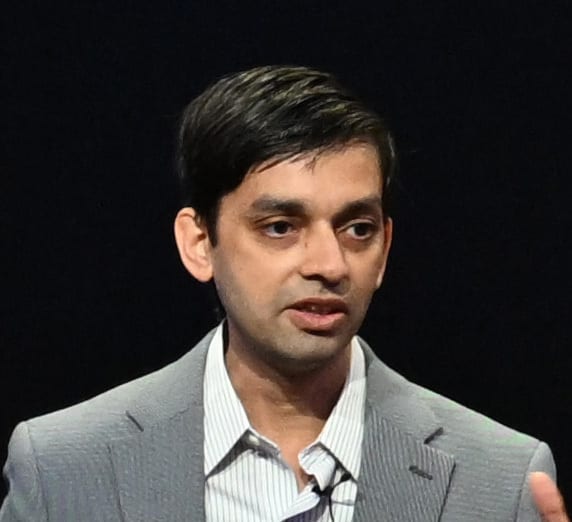
When you look at classical computers, even supercomputers, they represent data as bits - zeros and ones. The world is not zeros and ones. The physical world is continuous. It is analog. Quantum computer chips do not have digital circuits with transistors. It has qubits, and qubits are able to capture multiple states, not just zeros and ones but many possibilities in one particle. That’s what makes it incredible.”
Amit Singhee
CTO, IBM India South Asia & Director of IBM Research

You’ve heard about the power of generative AI - driving productivity, and decoding data. Now generative AI can do something even more magical in the cyber security world. There is an opportunity for us to use that information and reduce the number of analysts, make them smarter and, understand, like never before, the wealth of information that is being generated.”
Alok Lall
National Security Officer, Microsoft India
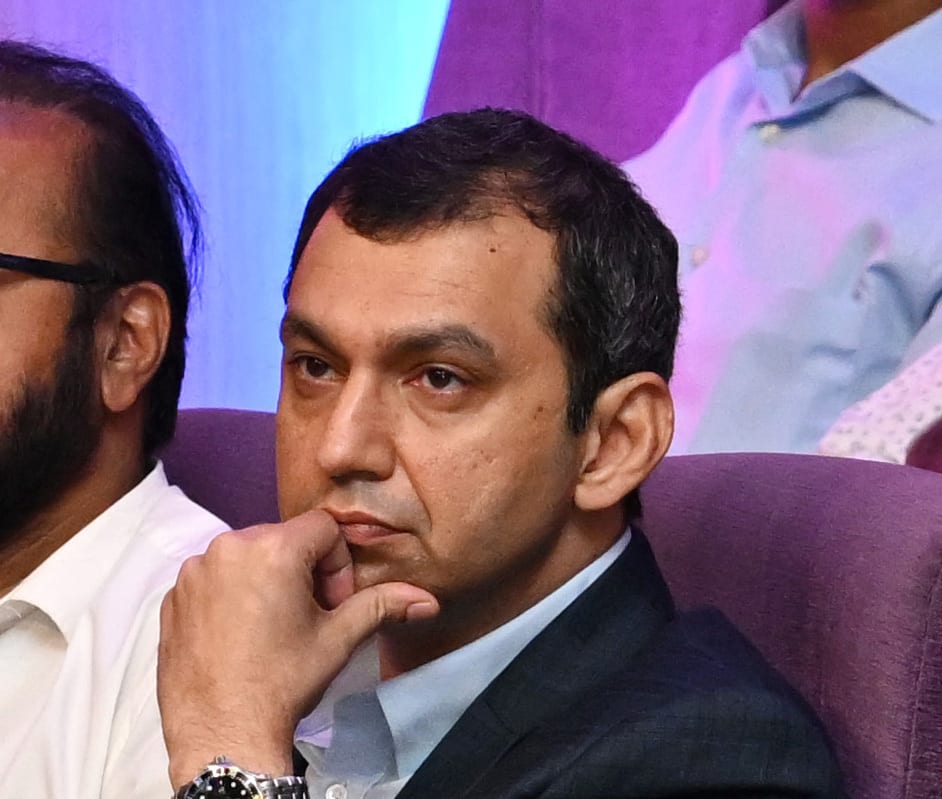
16% of the global AI talent in the world today is coming from India. We are truly becoming the centre of the universe. Look at tech. You look at talent. Look at the trust we are building. India is really standing out.”
Puneet Chandok
President, Microsoft India & South Asia
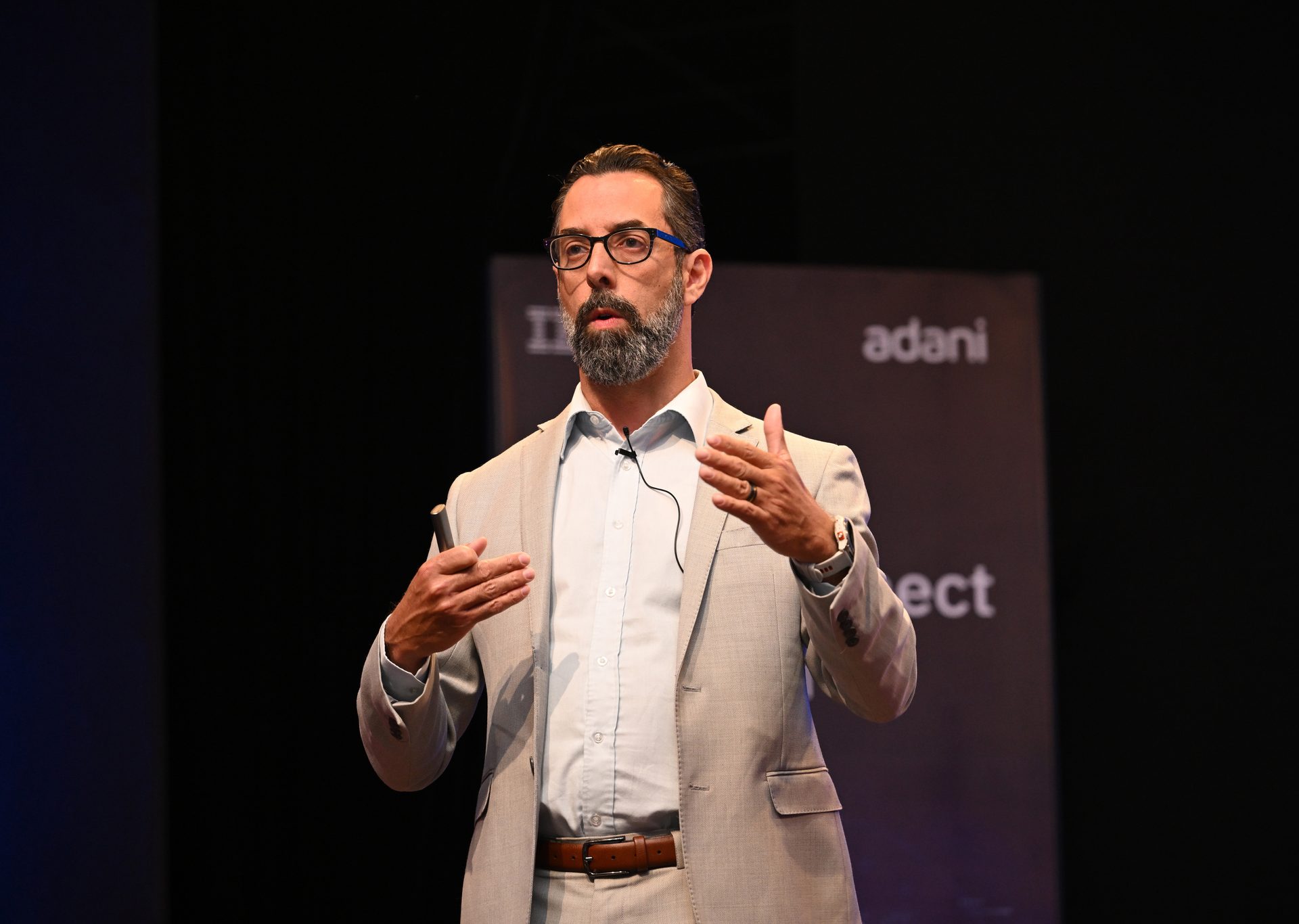
We need to have AI help us run the workforce. We need AI to help us manage talent. But then, we also need our talent to help us manage our AI. We don’t believe that AI will replace people. You can call it artificial intelligence, you can call it augmented intelligence, but our belief is that AI will sit next to the individual every single day and work collaboratively.”
Scott Layton
Vice President, Business Transformation Services, Asia Pacific, IBM
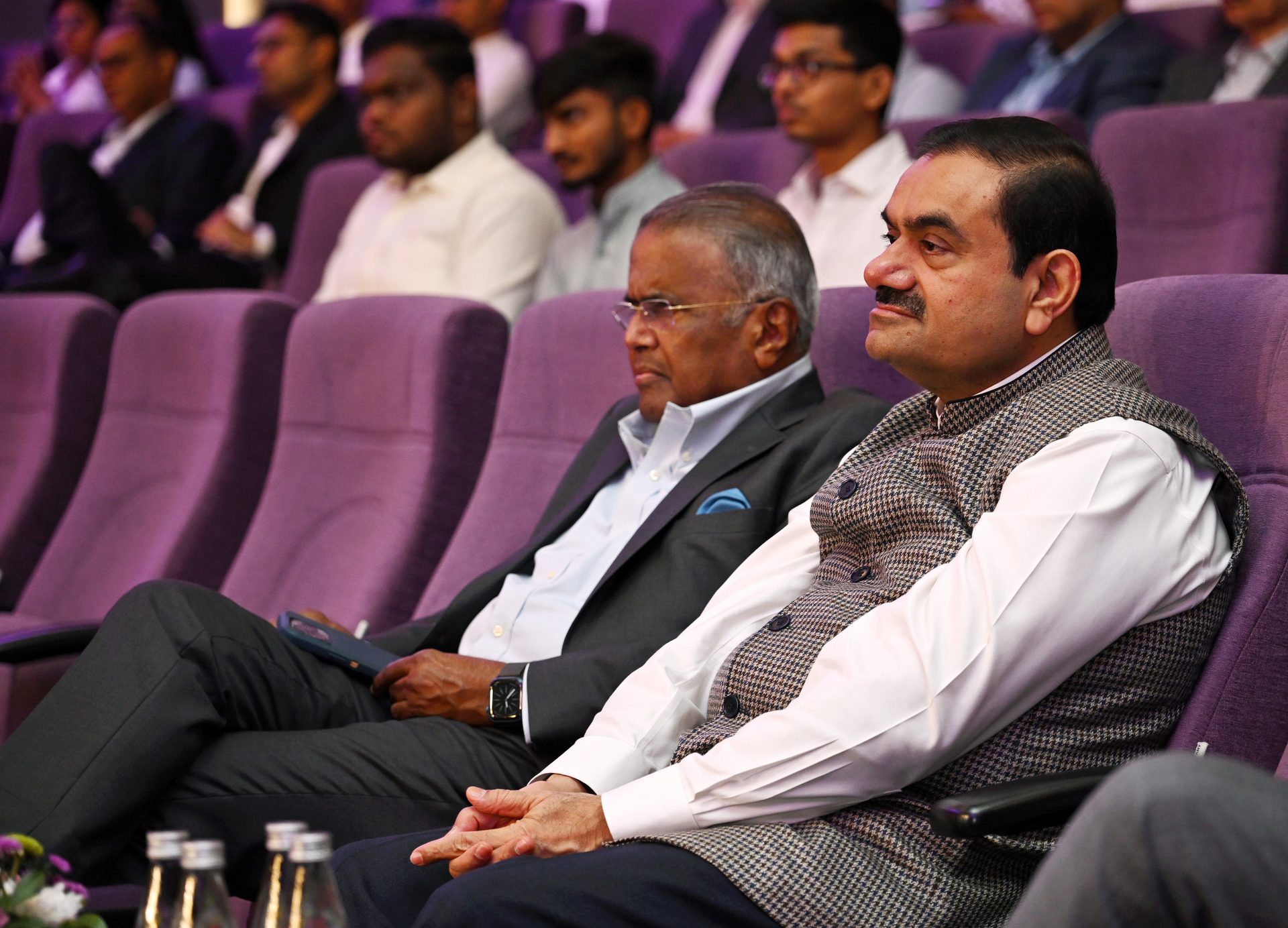
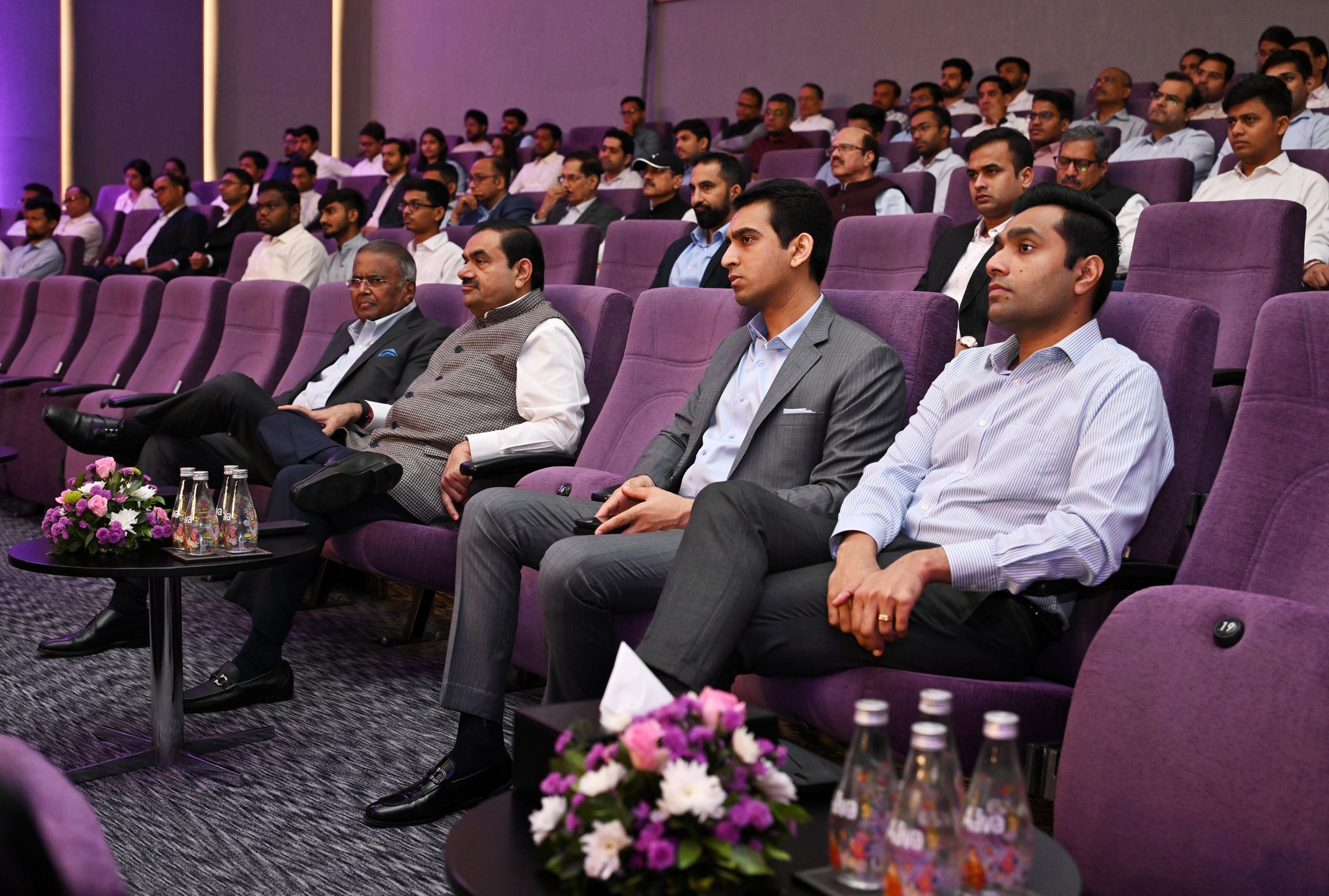


A Tale of
Festive Harmony
Celebrating Inclusivity. Celebrating Adani.
COMMUNITY
Sania Ahmad & Poonam Advani
Picture this: it’s a pleasant November evening and, already, there is a nip in the air. Winter is coming. As the sun paints a magnificent canvas of pink hues in the sky, the air is filled with the sweet aroma of incense. In the living room, the flickering oil diyas cast a soft, golden glow. The marigold garlands offsetting the walls feel cheerful and as welcoming as the aromas of sweets and delicacies that are now ready in the kitchen. As you carefully skirt the stunning colourful rangoli to assemble for the puja with all your family members dressed in resplendent fineries, your happiness is only punctuated by the sounds of firecrackers taking over the world outside.
Festivals have a way of bringing people together. They are meant to be celebrated with loved ones, including extended family, friends and well-wishers. In India, the land of festivals, there’s always a reason to celebrate, but the demands of our careers often lead us across state borders, making it necessary to adapt to new surroundings for these cherished occasions. Workplaces, reflective of the diversity of the nation, become microcosms of cultural exchange during these seasons. While embracing the cultural tapestry of their karmabhoomi, many individuals also find joy in exploring and integrating local festivals into their celebrations. A Maharashtrian living far from home may find solace in the grandeur of Durga Puja in Kolkata or the exuberance of Pongal in Chennai. This cross-pollination of traditions creates a unique and enriching festive experience that transcends state boundaries.

Coming together for Diwali puja, dancing together to Garba tunes, partaking in every festivity like a family has truly been an enriching experience — something I will always hold close and dear.”
Manoj Chomal
Dhamra Port
Sachin Gajendragadkar from Satara, a bustling city in Maharashtra, agrees. He has been working in the legal department at Mundra Port for the past three years. According to Mr Gajendragadkar, “The community at Mundra is like one big family. We think fondly of our hometown celebrations, but there’s never a feeling of disconnect.” He not only celebrates Ganesh Chaturthi with a twist, incorporating different activities throughout the week for everyone to participate in, but his family and he also joined in the famous Navratri celebrations of Gujarat. Diwali, the festival of light, happiness, and belonging, is a grand affair at Mundra, with the entire colony adorned with lights, firecrackers, cultural shows, and a communal dinner that reinforces the sense of togetherness.
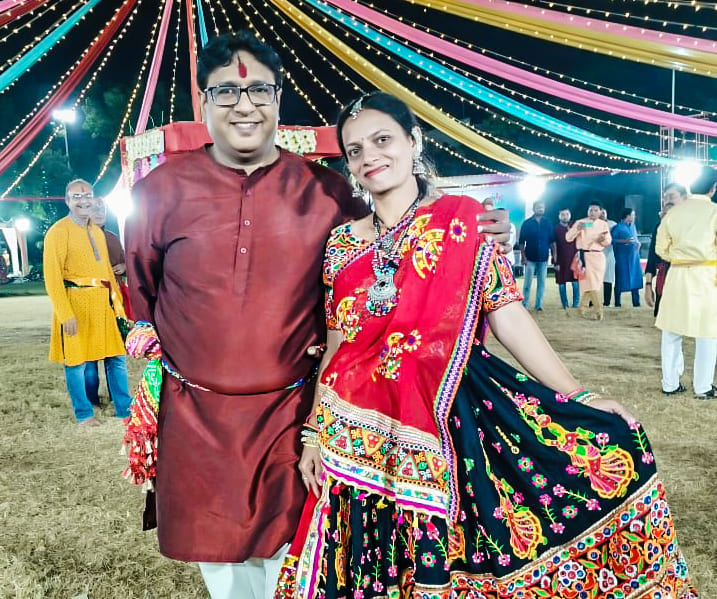
Amit Kumar, who joined Adani Power Jharkhand last year, and hails from Aurangabad, Bihar, shares a similar sentiment. He describes the township at Godda as a close-knit community of Adanians that never lets anyone feel left out. “We celebrated Navratri and Durga puja together and it has been a gratifying experience, not just for me but also for my family. This, I feel, is the best part about Adani celebrations - that your family members are included and are an integral part."
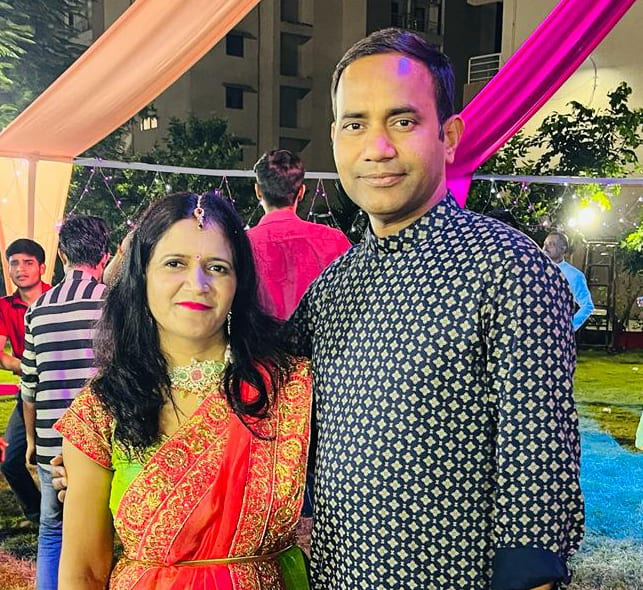
Shantanu Banerjee, who works in the techno-commercial team at Adani Enterprises (Natural Resources), and his wife Sarbani Banerjee who is president of the Shantigram Bengali Cultural Association, have found their own Kolkata in Shantigram during Durga puja. “We had 4 days of rituals and cultural programs where everybody actively participated in traditional Bengali customs, including the Dhunuchi dance, blowing of the conch and the auspicious sindoor khela. We performed the puja in true Bengali style. The priest, the dhakis, the idol makers — all were from Bengal. We prepared traditional Bengali lunch bhog and dinner for four days that was enjoyed by more than 1,200 people,” said Mrs Banerjee. The Banerjee couple moved to Ahmedabad almost two and a half years ago and have found a home in the diverse composition of Shantigram, one that transcends boundaries and embraces unity and love. “The Durga puja festival was not only a time of carefree merriment and boundless joy; it strengthened the bonds between residents of Shantigram, creating a genuine sense of community,” said Mr Banerjee, “For Bengalis living away from their hometown, this is a precious connection to their culture.”
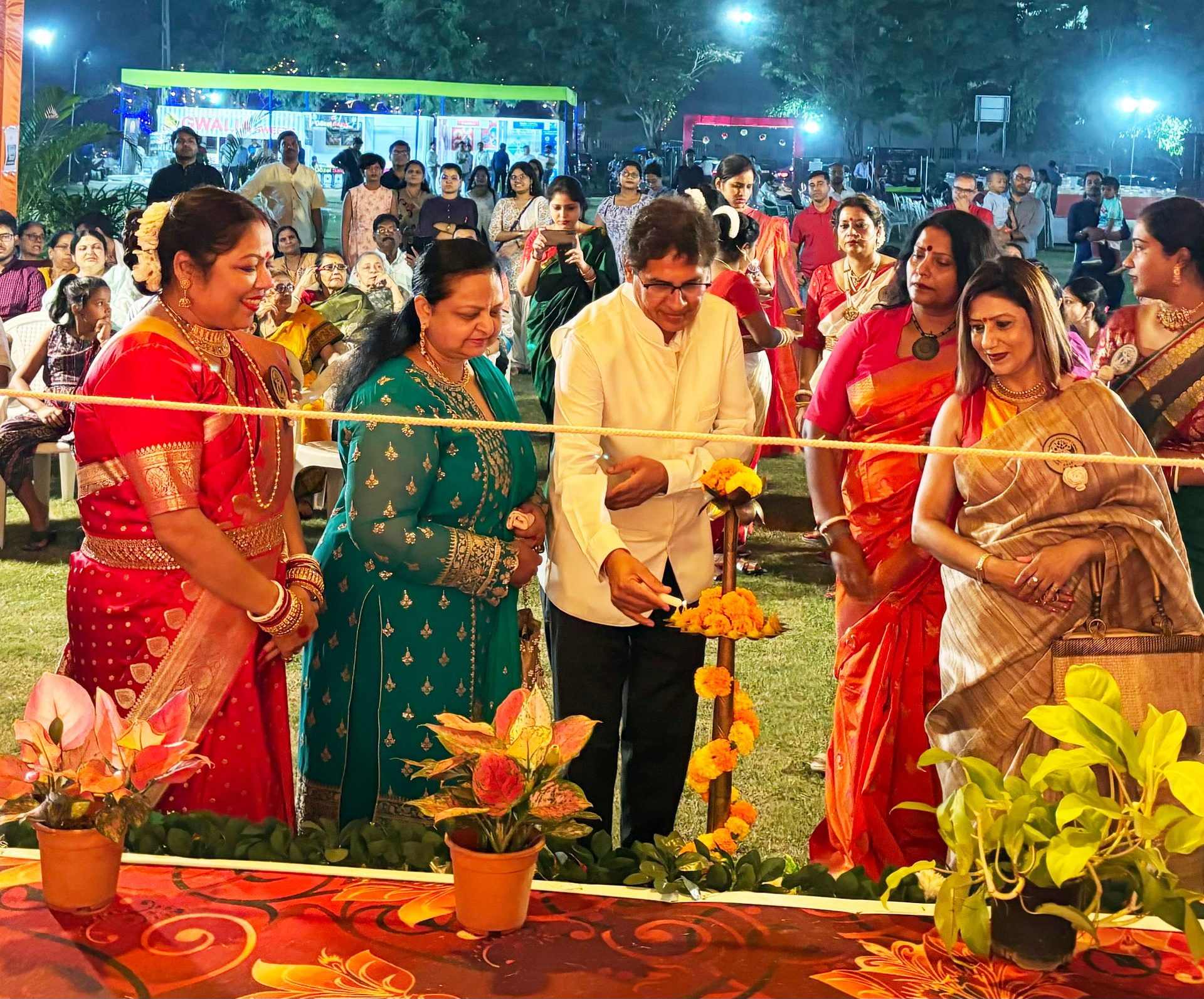
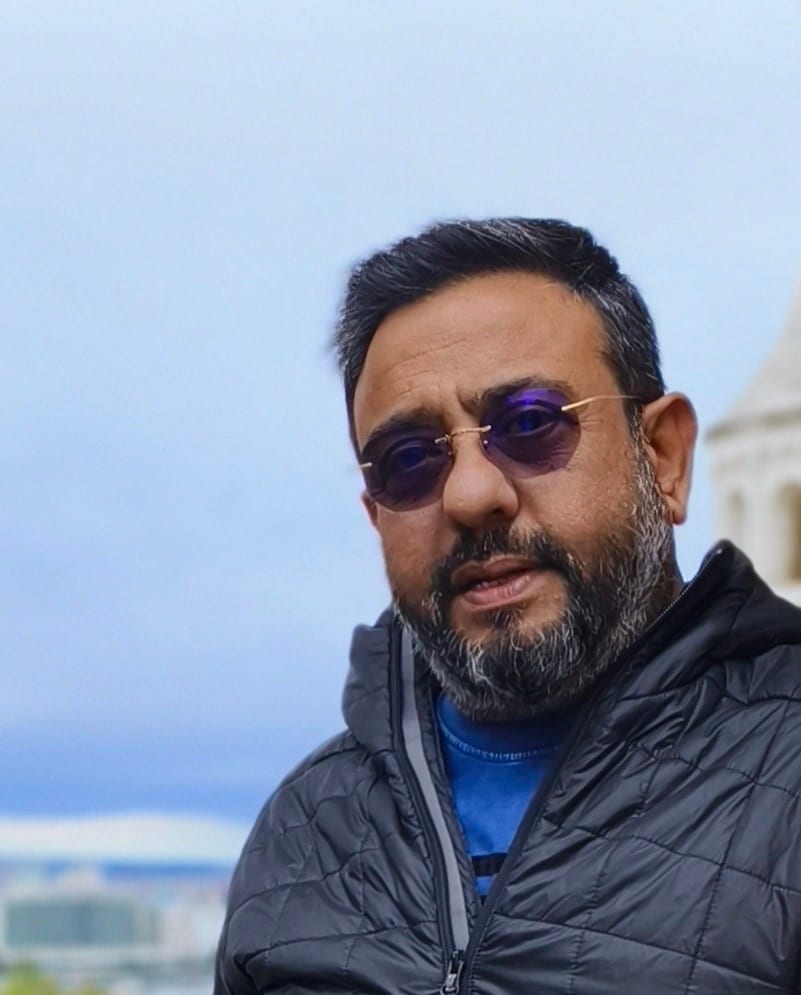
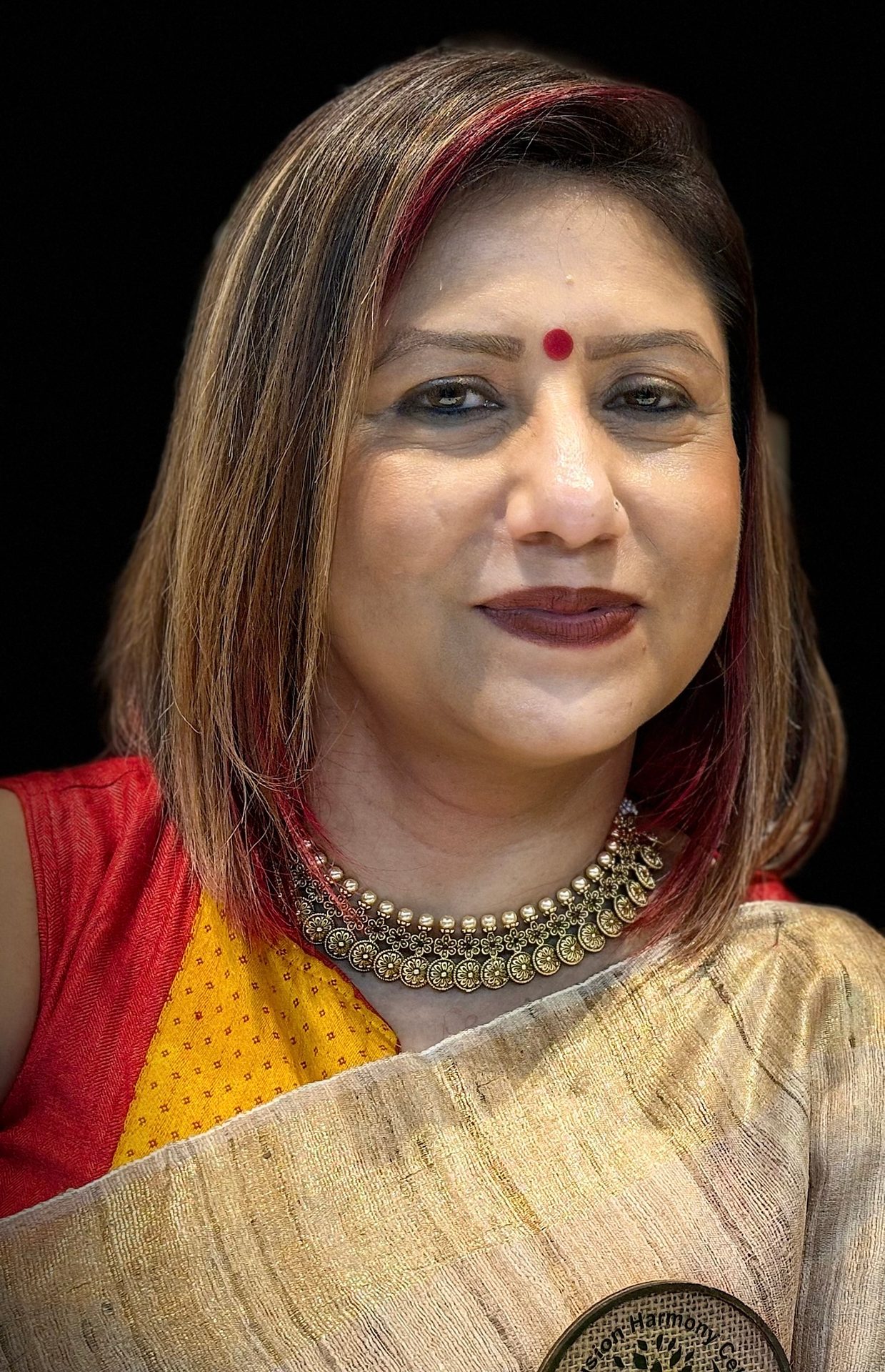
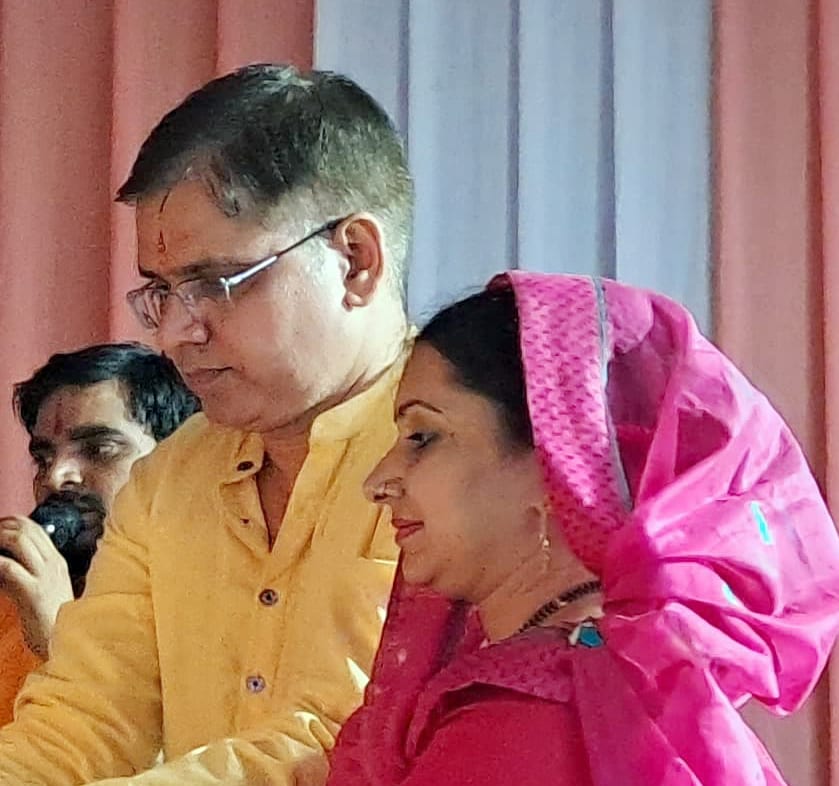
How could festivals, celebrated by 500 people singing, dancing and sharing meals together, be anything but pure joy? The Adani family has gifted me cherished memories of happiness and togetherness.”
Deepak Sharma
Adani Power, Kawai
Adani Realty’s Palak Saxena, who joined the Group this September, is from Greater Noida but lives in Gurgaon to be closer to her office. Weekends and special occasions are often spent at home, just a two-hour drive away. However, she chooses to stay back and celebrate with colleagues now because of the warm feeling of inclusivity that the Group harbours. “From birthday celebrations to festivals, nothing is celebrated half-heartedly, be it Janmashtami, Ganesh Chaturthi (complete with Ganesh Sthapna and Ganesh Visarjan) and, of course, the garba-dandiya nights of Navratri. In fact, there was even a mehendi function for Karwa Chauth. There is something for everyone. I have never felt more complete in any other organisation. This truly is my home away from home.”

In the tapestry of diverse celebrations woven by Adanians across different states, it is the power of community and inclusivity that shines through. The stories of Sachin Gajendragadkar, Amit Kumar, Palak Saxena, Shantanu Banerjee and others exemplify the seamless integration of regional festivities into the vibrant mosaic of Adani’s celebrations. As Mr Gajendragadkar puts it, “This community is like one big family. Our Adani family.”
Nine Nights
Of Revelry
CELEBRATIONS
Durga Pujo!
Elevating India’s Defence Capabilities
Pioneering self-reliance in Indian defence manufacturing, Adani Defence & Aerospace inaugurates ULPGM and LRGB production line in Hyderabad.
Newsmakers
Adani Defence & Aerospace
Sampathkumaran S T
In an occasion that signifies a remarkable leap in India’s defence capabilities, Adani Defence & Aerospace recently hosted esteemed guests Dr G Satheesh Reddy, a distinguished scientist and visionary in the Indian defence industry, Dr U Raja Babu, DG, MSS (Missiles & Strategic Systems), and Dr Chandrika Kaushik, DG, PC & SI (Production Coordination & Services Interaction). The purpose of their visit was to inaugurate the serial production line for Unmanned Launched Precision Guided Missiles (ULPGM) and Long Range Glide Bomb (LRGB) at the Adani Missiles manufacturing facility in Hyderabad.
The new missile production facility, with its state-of-the-art layout, facilities and infrastructure, was deeply appreciated for its alignment with the nation’s present and future defence needs. Adani Defence & Aerospace showcased the availability of all BOM items and their online assembly, integration, and testing capabilities. Their best-in-class infrastructure for relevant testing, coupled with the display of a ready-to-fly Unmanned Aerial Vehicle (UAV), left the distinguished visitors impressed and reassured about India’s progress in the field of defence manufacturing.
This event, marked by its significance, highlights the effectiveness of public-private partnerships nurtured through Development cum Production Partner (DcPP) programs, fostering a giant stride towards self-reliance in the field of defence manufacturing.
In the evolving landscape of India’s defence industry, Adani Defence & Aerospace’s unwavering commitment to bolster the nation’s defence capabilities is both commendable and visionary. The inauguration of the ULPGM and LRGB serial production line is a testament to their dedication to the nation’s security, self-reliance and economic prosperity. As India marches forward towards a self-sufficient and robust defence ecosystem, Adani Defence & Aerospace stands as a symbol of innovation, progress and unwavering dedication to a stronger, safer and more prosperous India. Notably, it also plays a pivotal role in creating new job opportunities for India’s youth and bolstering the local economy.
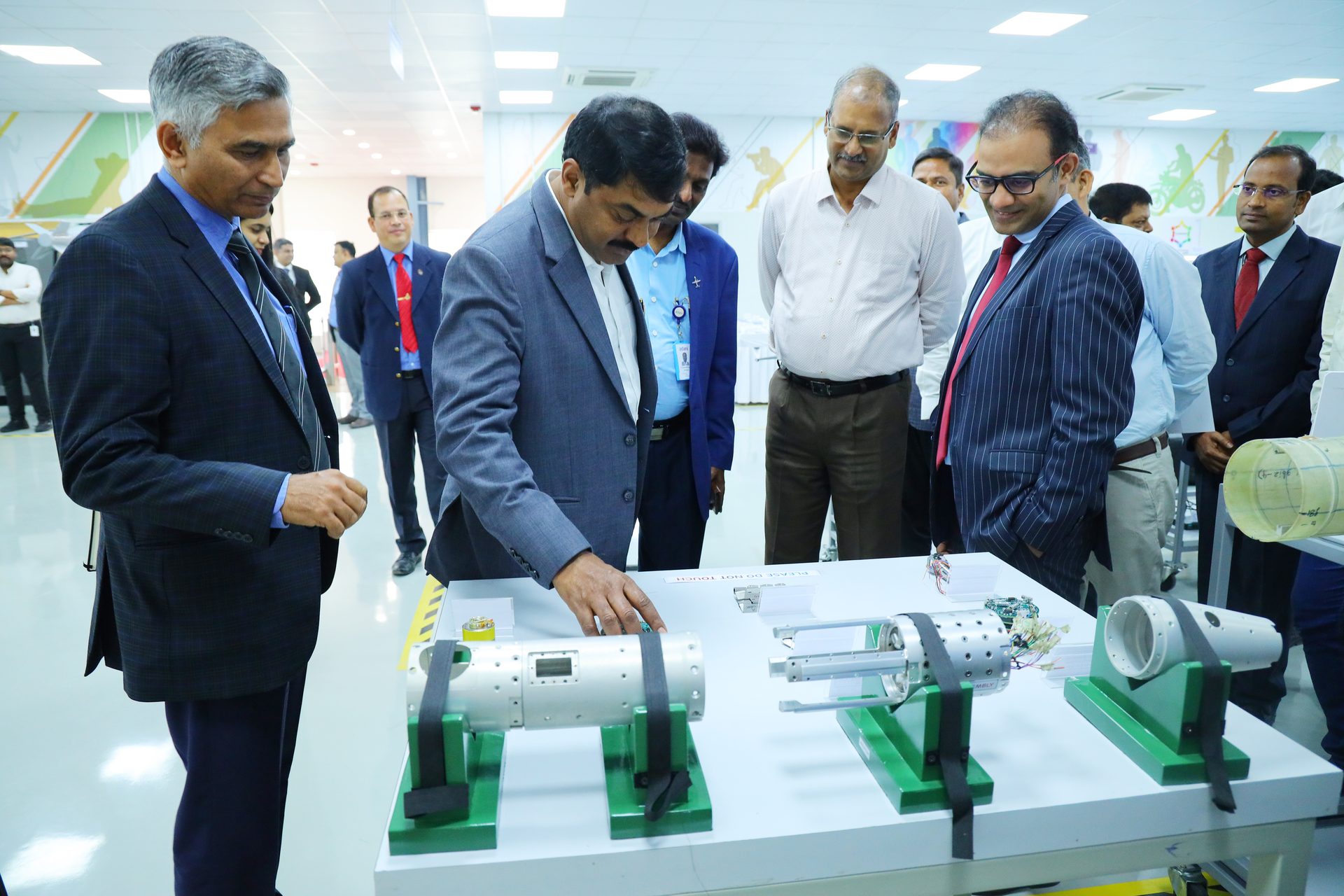
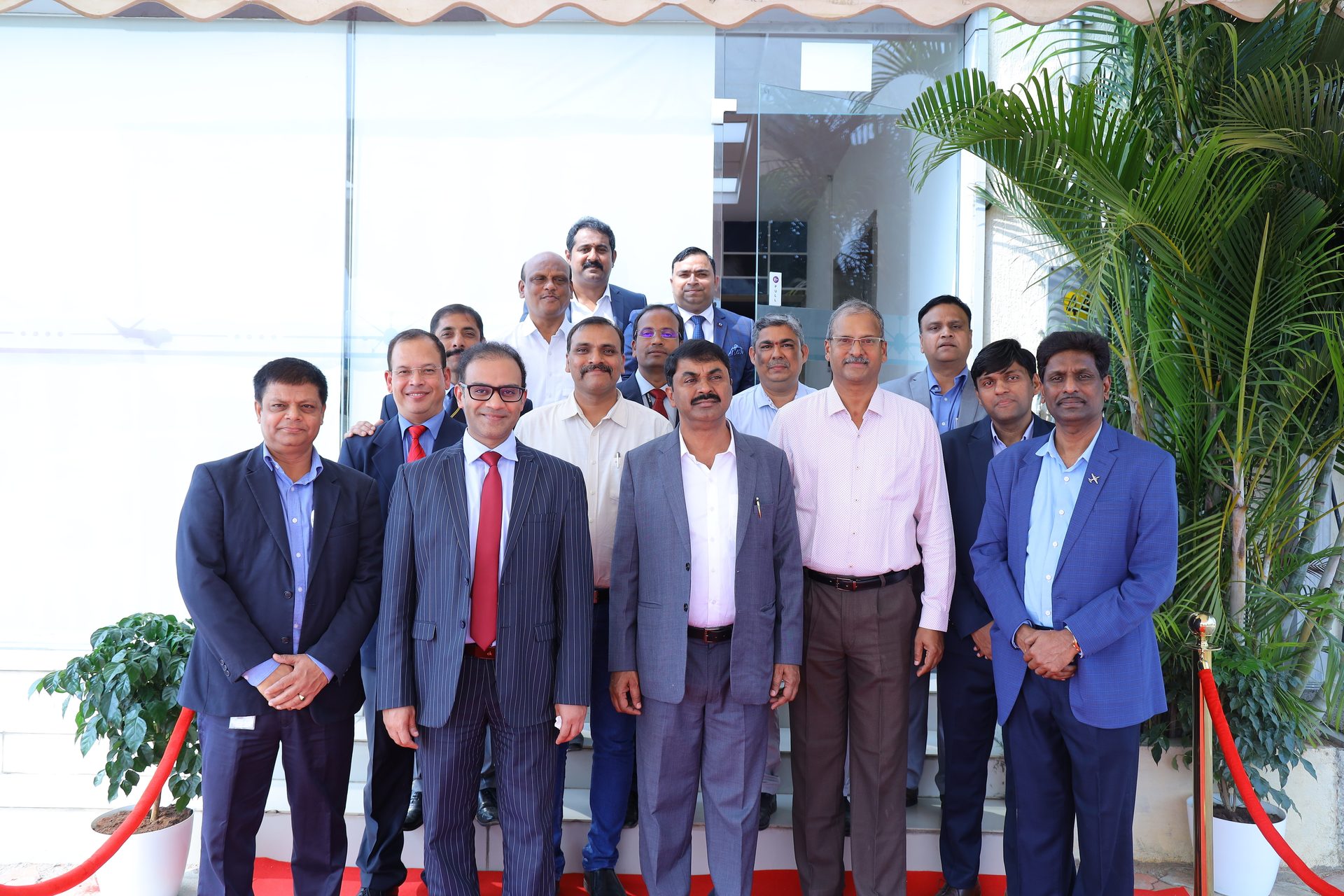
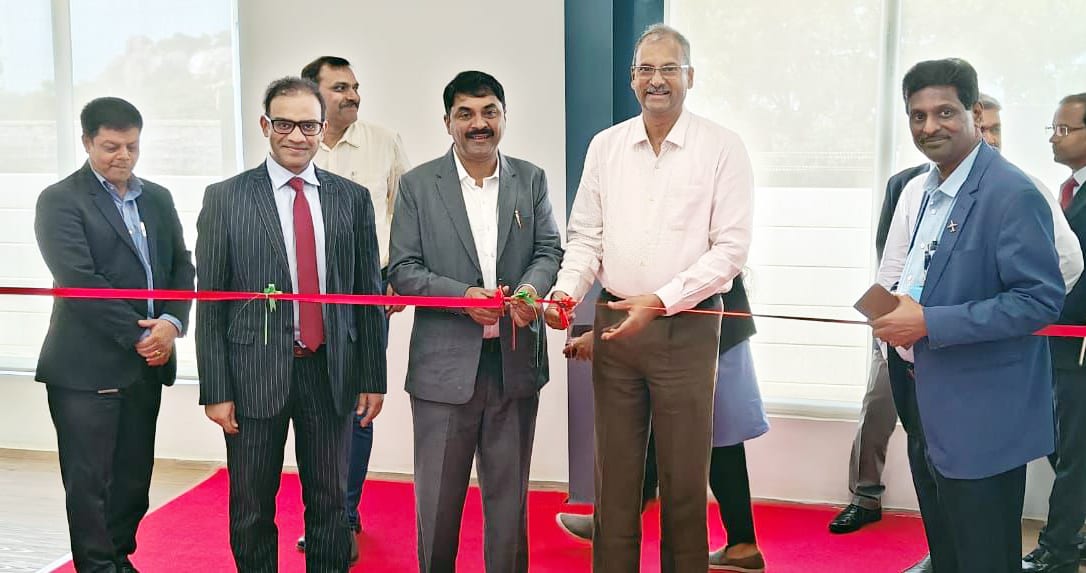
From Challenges to Triumph
Discover the inspiring tales of transformation that have strengthened communities and empowered women within Self-Help Groups.
SOLUTIONS
Abhishek Ramakrishna
At the heart of Ambuja Cements and ACC’s mission for community upliftment lies a steadfast commitment to empowering women. The belief that women’s empowerment transcends boundaries, sparking holistic growth in the communities they serve, is a driving force behind our pragmatic CSR initiatives that focus on Self-Help Groups (SHGs). Here, we proudly present inspiring stories of remarkable women who have harnessed the opportunities provided by these initiatives to rewrite their destinies.
Empowering Women in Cotton Farming
In Jiwati, Maharashtra, where cotton farming is a way of life, the majority of farmers faced challenges in gaining control over their cotton produce in the market. However, a significant transformation occurred when their wives took the initiative and harnessed the power of Self-Help Groups (SHGs). With support from Ambuja Cements’ CSR initiatives, the Jangu Devi SHG was established. Their proposal to enter the cotton trade received approval from the Maharashtra State Livelihood Mission.
With the approval, these women began procuring cotton from local farmers at competitive market rates and selling it to ginners. This empowered movement has grown, with 39 SHGs in Chandrapur actively participating in cotton procurement and facilitating its sale to ginners. Ambuja Cements has played a pivotal role in empowering these women and enabling them to make a significant impact in the cotton market.
Breaking Chains and Empowering Dewar Women
In Chhattisgarh, the Dewar women of the Pooja SHG, who were previously involved in scavenging and faced societal prejudice, found a guiding light through Ambuja Cements. These women received training in plastic waste collection, forming a SHG that reshaped their lives and those of their families. The journey toward behavioural change was challenging, but Ambuja Cements offered consistent handholding, ensuring the women’s determination prevailed.
As a result, this group has recently received an order for the supply of 300 tons of plastic waste from Ambuja Cements. Experiencing transformation, these women actively seek employment, and their children have now started attending school. Economic growth has bolstered their confidence, and society itself has responded with compassion, praising this group.
The Cotton Wick Revolution in Jamul led by SHG
In the project villages of Jamul, ACC’s CSR arm introduced a revolutionary initiative, ensuring women’s active participation in shaping their communities. Nine SHGs across five villages received cotton wick-making machines, sealing and weighing machines to maintain product quality. ACC helped the SHG members by giving them training opportunities, ensuring their success.
As a result, 28 SHG members generated a remarkable increase in revenue within just seven months of the program’s inception. Villages were selected based on market needs, ensuring a sustainable model of production and sales. ACC’s dedicated support played a pivotal role in enabling women to take charge of their economic destinies.
Cultivating Empowerment through Kitchen Garden Intervention
ACC’s CSR arm’s Kitchen Garden Intervention Program focuses on nurturing self-reliant communities. By providing essential resources, partnering with SHGs, and distributing seeds, ACC empowers women to cultivate flourishing kitchen gardens, supporting the growth of fruits, vegetables, and herbs. This initiative not only ensures a diverse and nutritionally-rich diet for their families but also promotes sustainable agricultural practices.
The program’s focus is on diversifying food sources and reducing dependency on market produce. ACC’s continuous approach ensures that women have the knowledge and resources to cultivate their kitchen gardens successfully.
Leading The Way Together
Ambuja Cements' and ACC’s commitment to women’s empowerment is rooted in the philosophy of providing consistent and steadfast support. These inspiring stories highlight the transformative impact of these initiatives, where women are not just beneficiaries but active participants in their journey towards empowerment. We envision a future where our initiatives continue to shape vibrant, empowered communities, ensuring women play a pivotal role in community growth.
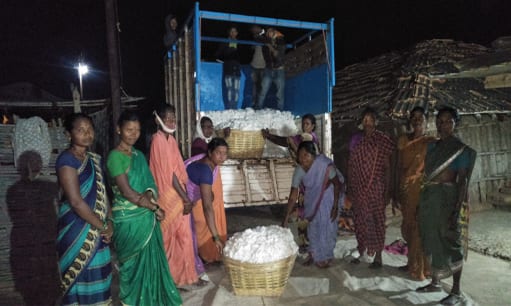

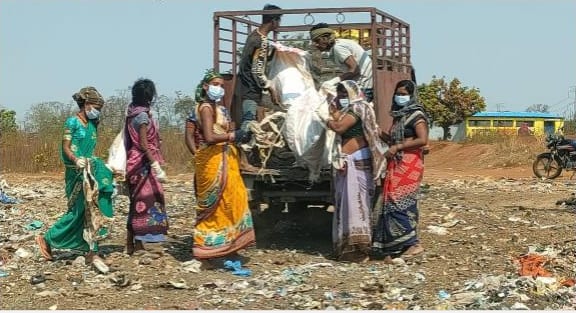
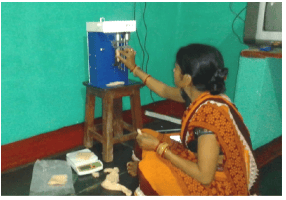
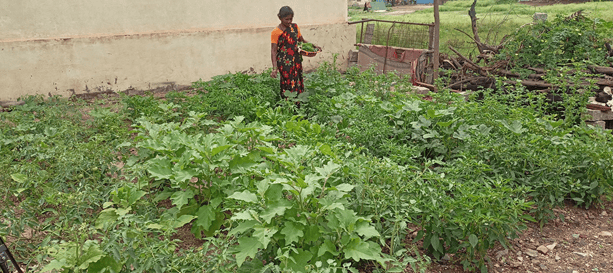
Green Glory
Bravus Mining and Resources earns acclaim for environmental excellence and indigenous collaboration at Carmichael Mine.
Newsmakers
Bravus Mining & Resources
Andrew Strutton
Bravus Mining and Resources has been recognised in prestigious mining awards for its leading environmental management and indigenous engagement programs at the Carmichael mine near Clermont in central Queensland. The regional Queensland business has been named a finalist in both the Excellence in Environmental Management and Sustainability and the Indigenous and Community Engagement categories at the 2023 Australian Mining Prospect Awards.
The Prospect Awards are among the most respected national industry awards for Australia’s mining and minerals processing sector. Bravus Mining and Resources Head of Community, Communications and ESG, Kate Campbell said the nominations acknowledged the company’s significant investments in responsible mining practices. “The Carmichael mine has some of the strictest environmental conditions of any resources project in Australia’s history,” Ms Campbell said. “That means we also have some of the best environmental monitoring and scientific research programs in the world, especially in the areas of groundwater and species management.
“Being a finalist in these awards is due recognition of the outstanding work our talented environmental teams and their research and traditional owner partners do at Carmichel to ensure we continue to operate in a way that is responsible, sustainable and protects the environment and our neighbours.”
The Excellence in Environmental Management and Sustainability nomination is for innovative AI-supported monitoring of the endangered Black-throated Finch. Bravus Mining and Resources developed a targeted management plan to protect local black-throated finches and their habitat and researchers built an automated call recogniser to help track bird movements and to identify individual bird’s home ranges, providing insights into their day-to-day behaviour.
The automated call recogniser has proved a more accurate method to detect the finches than visual surveys and the findings have been published in scientific journals to improve surveillance of other rare birds around the world. The Indigenous and Community Engagement nomination is for collaboration between Bravus Mining and Resources and Wangan and Jagalingou Traditional Owner business, Woongal Environmental Services, for ecological management of the 33,000-hectare conservation area that surrounds the Carmichael mine. Bravus Mining and Resources’ Indigenous Participation Plan has a AUD 250 million First Nations contracting and business development commitment.
Woongal was initially engaged for monitoring and surveying across the mining lease and in the Doongmabulla Springs Complex area but has since expanded its services at the Carmichael mine to include fauna spotting and catching, erosion and sedimentation control, weed and pest management, fencing, research into groundwater-dependent ecosystems, and road and track maintenance. Woongal Environmental Services has employed a dozen people to do this work.
Elevating Workplace Safety
Charting a Course to Safety Excellence with the Saksham Program
GO BEYOND
Abhishek Ramakrishna
Safety takes centre stage at Ambuja Cements and ACC, where the well-being of our human resources is our topmost priority. We firmly believe that work can be executed in a 'safer' manner, and to bring this vision to life, the 'Saksham Program' plays a pivotal role in ensuring workplace safety and risk mitigation.
Saksham Program: From Inception to Impact
The Saksham program was introduced across our Cement Business Unit (BU) on 7 July 2023 as a Group safety-led initiative. Launched under the inspiring theme, ‘Mei Saksham, Mei Surakshit Aur Mera Parivaar, Meri Zimmedari’, the program's objective was to provide comprehensive safety training to our existing workforce, comprising over 27,000 contractual employees engaged in critical operations, including manufacturing, terminals, ready-mix concrete plants, projects, and more.
The program was inaugurated by the Chief Human Resource Officer of the Cement Business, while a dedicated team of 108 Saksham Coordinators worked tirelessly to establish Saksham Training Centres. These centres served as platforms for discussing specific hazards and crucial controls within the Cement BUs. Informative handouts covering essential safety topics and clear guidelines were distributed among all workers.
Milestones in Safety
As part of the Saksham program, detailed toolkits were shared, and three alignment workshops were conducted. An impressive milestone with 35,974 Saksham-trained workers on-site, totalling 1,43,896 man-hours, were achieved in 112 days. This accomplishment would not have been possible without the relentless efforts of our Unit Human Resource Heads, Saksham coordinators and the safety team.
Progressing with Purpose
In the true spirit of 'Growth with Goodness,' through this initiative, we have taken a significant step in empowering our workforce with the right knowledge and awareness. The primary theme that guides everyone at our sites is, "Nothing we do is worth getting hurt for," empowering us to 'stop unsafe work or behaviour.' Saksham continues to be an ongoing endeavour, sustained through regular refresher training sessions for our workers. It is now a standard practice to ensure that 100% of new onboarding workers are inducted through the Saksham module before commencing any work on-site. Saksham program is now marching forward to the path of progress more impactfully through Saksham Samvaad.
Saksham Samvaad: A Dialogue for Safety
Saksham Samvaad, an indispensable component of the Saksham program, aims to establish a direct interaction between cement business leadership and the workforce. This initiative is crucial in fortifying Saksham teachings, positively influencing worker behaviour, and augmenting ownership on safety. 415 leaders from Adani Cement have participated in this initiative, sharing their real-time experiences on adhering to safety protocols. The sessions are orchestrated around the 'I-CARE' paradigm: Introduce, Confirm, Agree, Reinforce, and Encourage. We Care 5 Behaviours (Eyes on Path, Eyes on Hands, Line of Fire, Assess Area, Body Limit) are introduced as a part of this initiative, which is helping them drive and analyse all the safety incidents.
Effectiveness of Saksham Samvaad
The impact of Saksham Samvaad, recorded through a short survey with workers, has been par-excellence. 94% of the workers, the intended beneficiaries of the Saksham program, rated the program between 4 and 5, with 5 indicating excellence. Similarly, the reflections from Saksham Samvaad demonstrate the commitment of the workers. 31% workers remembered the Life Saving Safety Rules, 19% pledged to consistently follow the WE CARE behaviour, 16% improved their understanding of the permit-to-work process, and 13% committed to adhering to SOP while working. This shows strong commitment given by the workforce to the leadership.
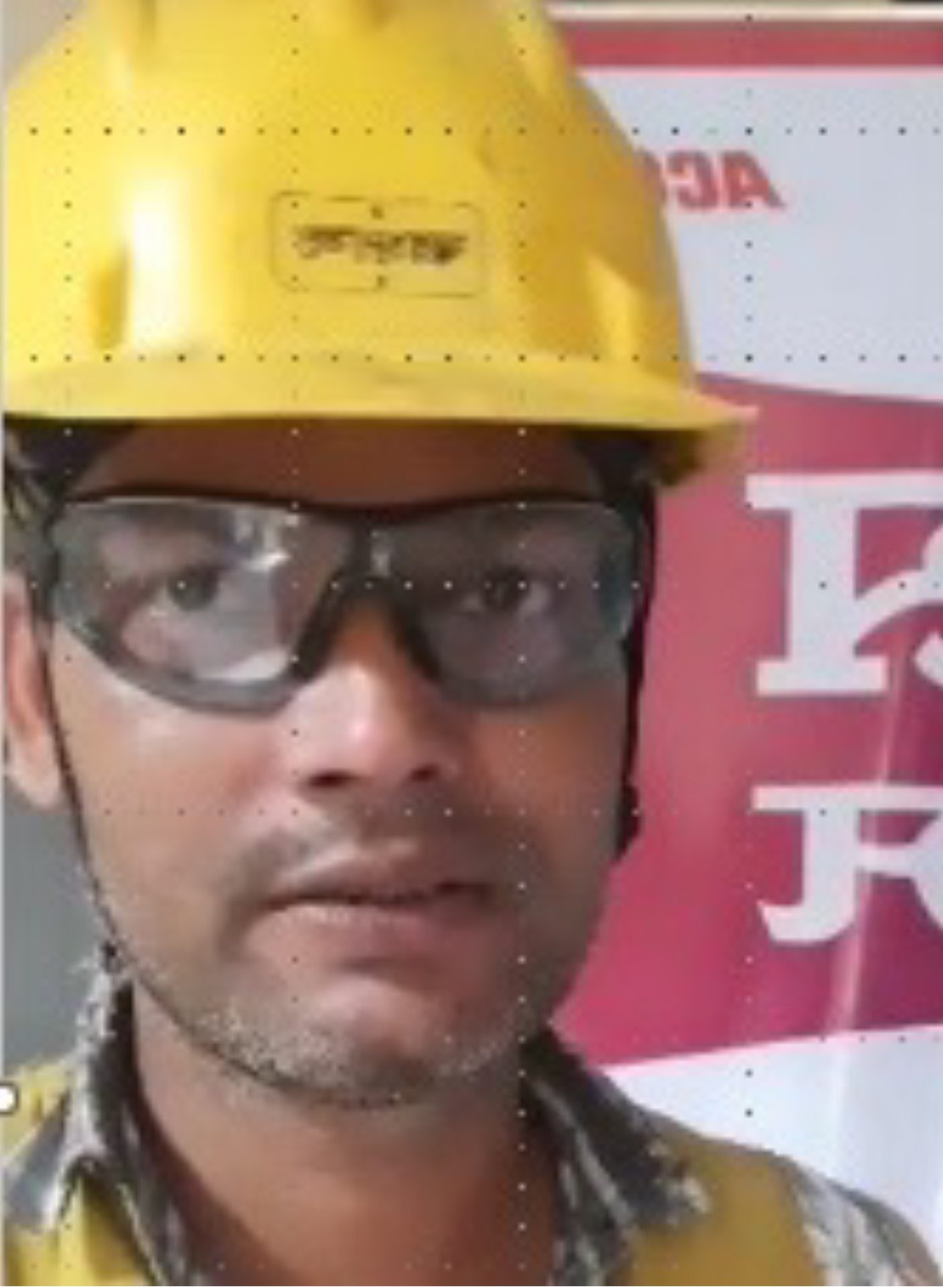
वीडियो के माध्यम से बिलकुल सरल भाषा का प्रयोग करके यह प्रोग्राम डिजाइन किया गया है जो कि हमारे लिए बहुत ही लाभदायक है | (This program has been designed using very simple language through videos which is very beneficial for us.)”
Raj Kumar
Sankrail
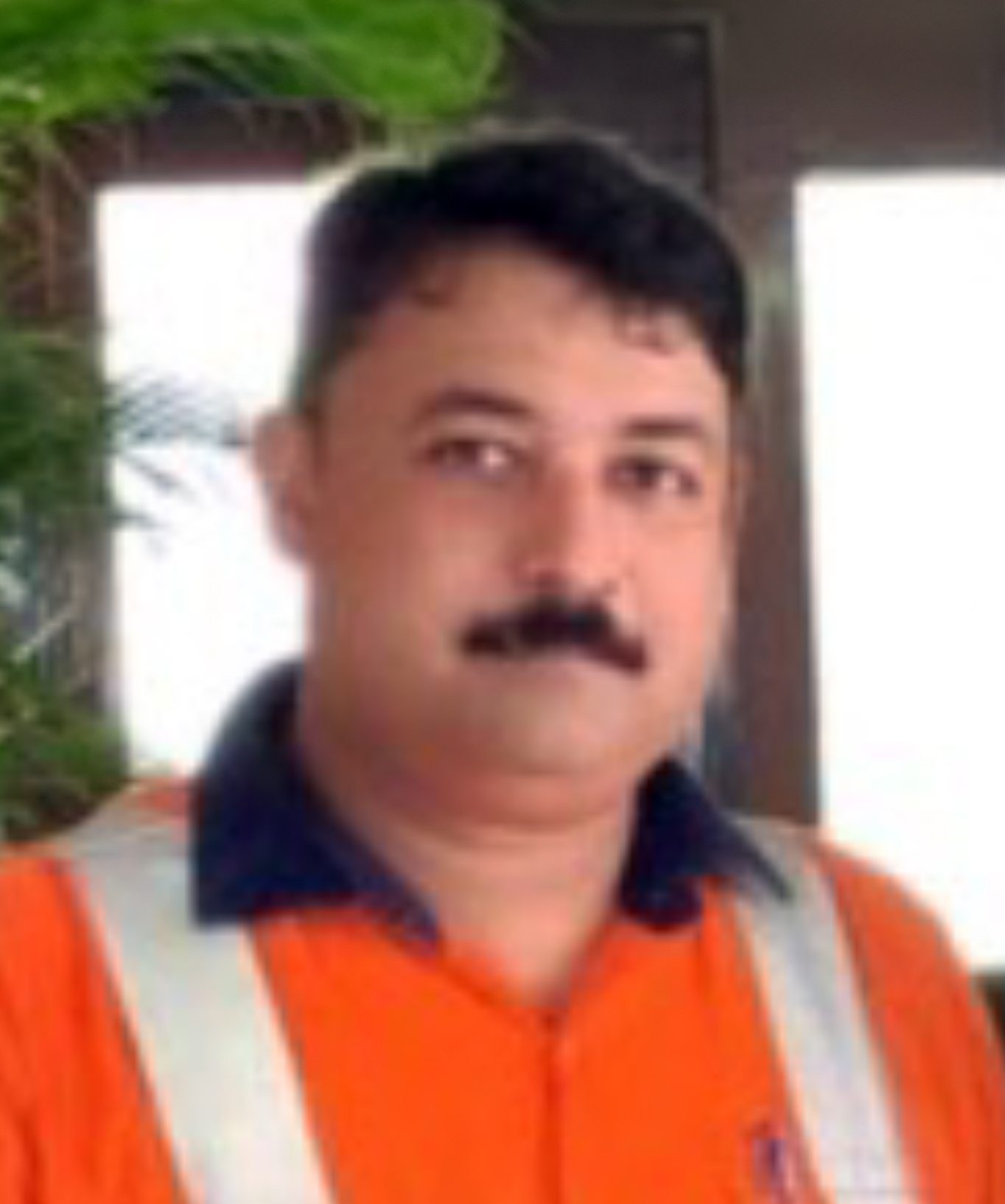
Unlike other trainings, here we did not have to push the workers to attend. They were turning in for training on their own and had undivided attention. That is the power of Saksham!”
Amit Kumar
Bhatapara Plant
Birendra Kumar Verma
Group Head, Safety
“Saksham is not just an initiative; it is a ground breaking movement. It doesn't just comply with safety norms; it redefines them. Through its innovative training modules, open dialogues and unyielding commitment, Saksham is not just setting standards—it's elevating them, positioning us as pioneers in workplace safety. Let us not just aim for a safe work environment; let us strive to make safety a way of life.”
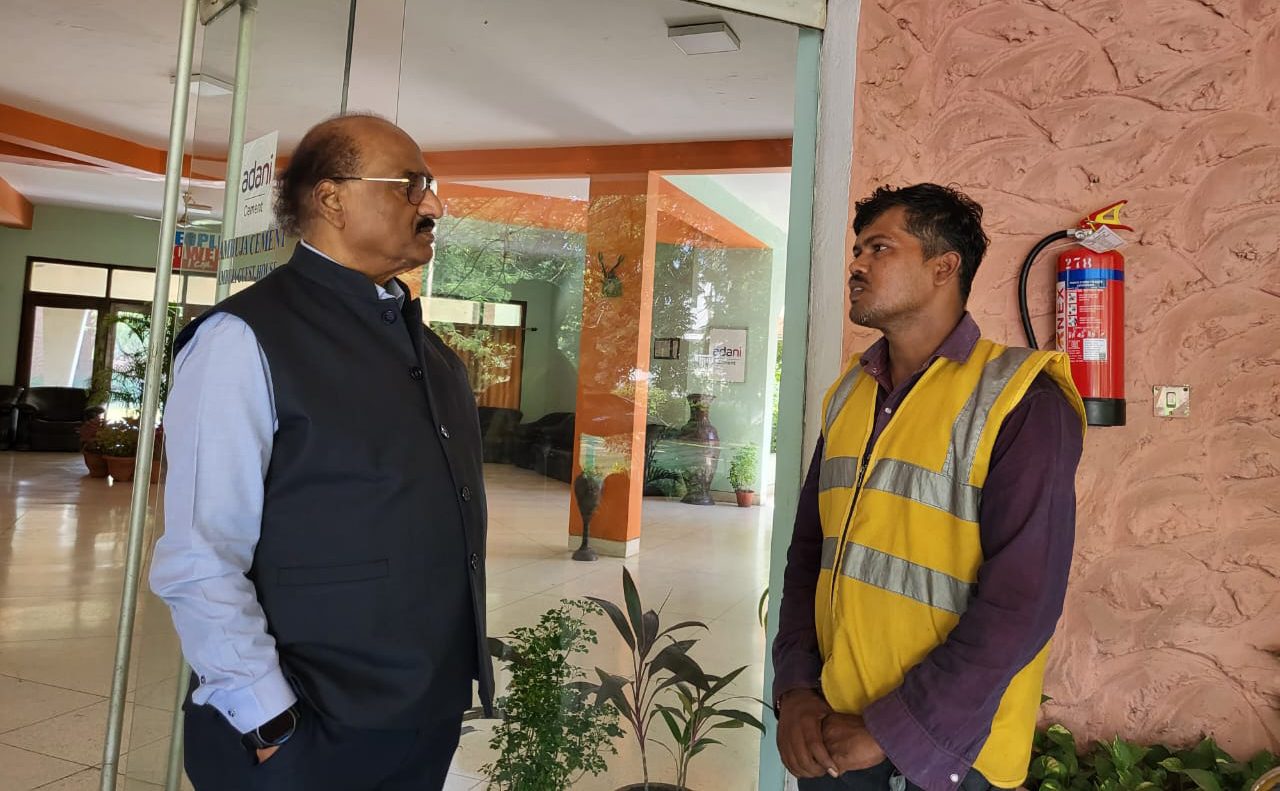
Pankaj Singh
Head of Health & Safety, Cement Business
“Ambuja Cements' and ACC's 'Saksham Program' emphasises our commitment to workplace safety excellence. It empowers our workforce with knowledge, fosters open dialogues and makes safety a way of life. Together, we are setting new benchmarks in safety."

Swetha
LT, Bommasandra
"Saksham personalises safety through “मैं सुरक्षित” (I am safe). It transcends conventional safety training, embodying a dedication to ‘Zero Harm’ that deeply connects with each individual. The program fosters an augmented comprehension of risks, refining perception and response. The session underscores that a significant number of industrial incidents pose a threat to contract workers, who are consistently exposed to potential hazards while performing critical tasks. This initiative represents a proactive elevation in skills achieved through comprehensive training and engagement."
Enchanting Vietnam
Where nature meets culture and cuisine
travel
Vishal Nair
Overlooking the South China Sea lies the enchanting land of Vietnam, a country renowned for its breathtaking natural landscapes. From mist-shrouded mountains and emerald rice fields to cascading waterfalls and pristine beaches, Vietnam boasts a diverse tapestry of natural beauty that captivates travellers. But there is more to this magical destination than its scenery. Vietnam beckons with its warm hospitality, delectable cuisine and affordability that won’t break the bank.
Vietnam’s allure begins with its affordability, making it an ideal destination for travellers seeking exceptional experiences without draining their wallets. From street food stalls to charming guesthouses, Vietnam caters to every budget. So, if you are concerned about your finances, rest assured that Vietnam welcomes you with open arms.
Upon your arrival, do not miss the opportunity to visit the Temple of Literature, one of Vietnam’s most spiritually significant sites. This ancient temple in Hanoi, dedicated to Confucius, has a rich history dating back to 1070 when it served as the country’s first university. Spread over 54,000 square meters, it comprises Van Park, Giâm Park, and serene interior courtyards encircled by an imposing brick wall.
As you enter, three pathways await you. The central path was reserved for monarchs, while the left and right paths were for administrative and military mandarins, respectively. Inside, the temple’s tranquil ambiance is adorned with statues honouring past scholars and doctors. Explore the sprawling grounds, complete with a picturesque fishpond called the ‘Well of Heavenly Brilliance,’ where you can feed the resident fish.
Delve deeper into the temple to discover ancient writings, intricate paintings, and replicas of the tools once used by scholars and doctors. In the heart of it all, a grand statue pays homage to the three monarchs who played a pivotal role in the temple’s founding and the academy’s establishment. (Fun fact: The temple’s image graces the VND 100,000 currency note.)
If you are the adventurous one, indulge in a delightful rickshaw ride through the city’s narrow streets, where cars cannot venture. As you wind through these charming alleys, you will encounter quaint old stores and houses bustling with friendly locals. This unique experience costs a mere INR 10 to 15 per person and is well worth it.
As night falls and the streets come alive with locals heading home from work, venture out to dine at a nearby restaurant or savour the flavours of a place that is renowned for its late-night offerings. Vietnamese cuisine offers a wide array of options, including traditional Chinese dishes and a plethora of vegan delights. Don’t miss out on favourites like Fried Rolls, Cao Lau (rice noodles with herbs), Bun Cha (pork with noodles), and the world-famous Pho (rice noodle soup). With prices starting at just VND 50,000 (INR ~170), your taste buds and wallet will both be satisfied.
Exploring the Cu Chi Tunnels
A visit to Ho Chi Minh City calls for an exploration of the Cu Chi Tunnels, a historic site that bears witness to various military campaigns during the Vietnam War. These tunnels served as hiding spots during combat, as well as crucial communication and supply routes. The government has transformed the tunnels into a memorial park, allowing visitors to experience this remarkable piece of history firsthand.
As you navigate the narrow tunnels, take note that a slender physique will serve you well. Here, you will gain insight into the craftsmanship of soldiers’ shoes and discover hidden caches of weapons and tools. Nearby, a shooting range offers a unique opportunity to fire real guns, adding an adrenaline rush to your historical journey.
In the accompanying museum, you will encounter an array of bombs, guns, and tanks used during the war, some of which are larger than life. The adjacent souvenir shop tempts you with handmade treasures, from wooden crafts and paintings to accessories and jewellery, each a piece of Vietnam’s rich heritage to take home.
In summary, Vietnam beckons with its awe-inspiring landscapes, mouthwatering cuisine, and affordability. It is a place where you can experience the beauty of the world without breaking the bank, a true gem that offers experiences akin to acquiring diamonds and gold at the price of a small car. Embrace the magic of Vietnam, where nature, culture and cuisine converge in perfect harmony.
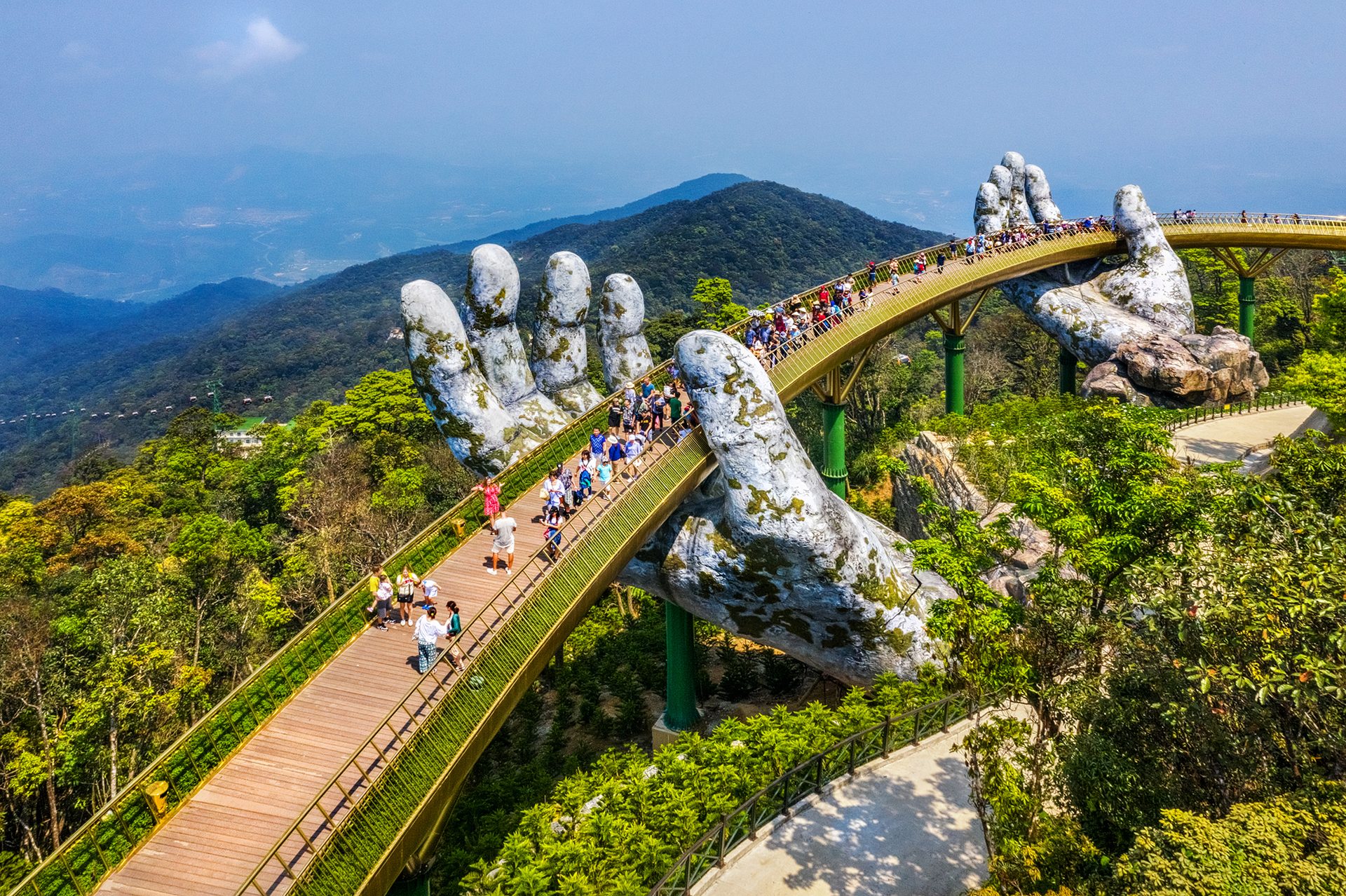
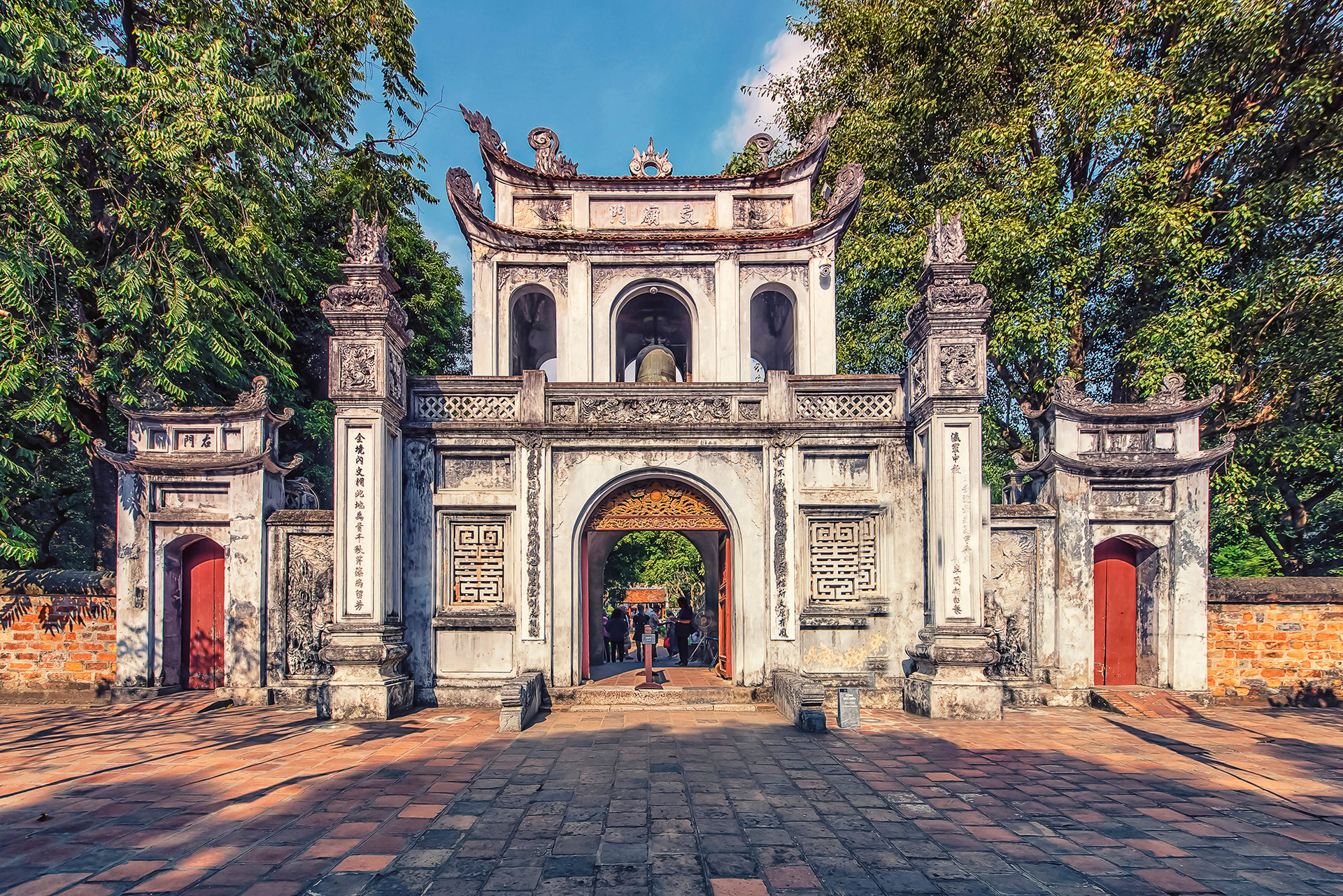
New Benchmarks
Mundra becomes India’s first port to handle cargo volumes of 16 MMT in a month.
Newsmakers
Adani Ports & SEZ
Poonam Advani
Mundra Port, APSEZ' flagship port, has set another record by handling 16.1 MMT of cargo in October 2023, the highest-ever volume by any port in India. Consistently demonstrating growth, Mundra Port handled 102 MMT of cargo year-to-date (YTD), reflecting a notable 9% year-on-year (Y-o-Y) increase. Impressively, it achieved the milestone of crossing the 100 MMT mark in just 210 days, outperforming the previous year’s record of 231 days.
The port’s growth extends beyond total cargo, as it witnessed double-digit Y-o-Y growth in containers (+10%) and liquids and gas (+14%). An exceptional achievement was recorded with the handling of 4.2 million twenty-foot equivalent units (TEUs) of containers in a mere 203 days, surpassing the previous year’s record of 225 days. Furthermore, Mundra Port expanded its portfolio by introducing new cargo types like Hydrolysis Pi Gas (HPG).
On a YTD basis, the port serviced a substantial number of vessels, welcoming over 2,480 ships and accommodating more than 11,500 rakes. Mundra Port’s continuous growth and ability to break its own records make it a pivotal player in India’s maritime trade landscape.
Due to its strategic location, Mundra offers some of the best facilities. Given its capability to maintain deep draft, it is well-equipped to handle large vessels. In July 2023, it berthed one of the largest ships ever – MV MSC Hamburg, 399 m long and 54 m wide, with a carrying capacity of 15,908 TEUs and a current reported draught of 12 m. In 2021, it berthed the 13,892 TEU APL Raffles, the largest container vessel to call at any Indian port. The Singapore-registered vessel is 397.88 m long and 51 m wide.
Looking ahead, Mundra Port is committed to an ambitious goal: handle 200 million metric tons of cargo by 2025. Since most of India’s trade uses the sea, better port facilities will help move goods more efficiently and increase shipping, which will play a vital role in India’s pursuit of becoming a USD 5 trillion economy.
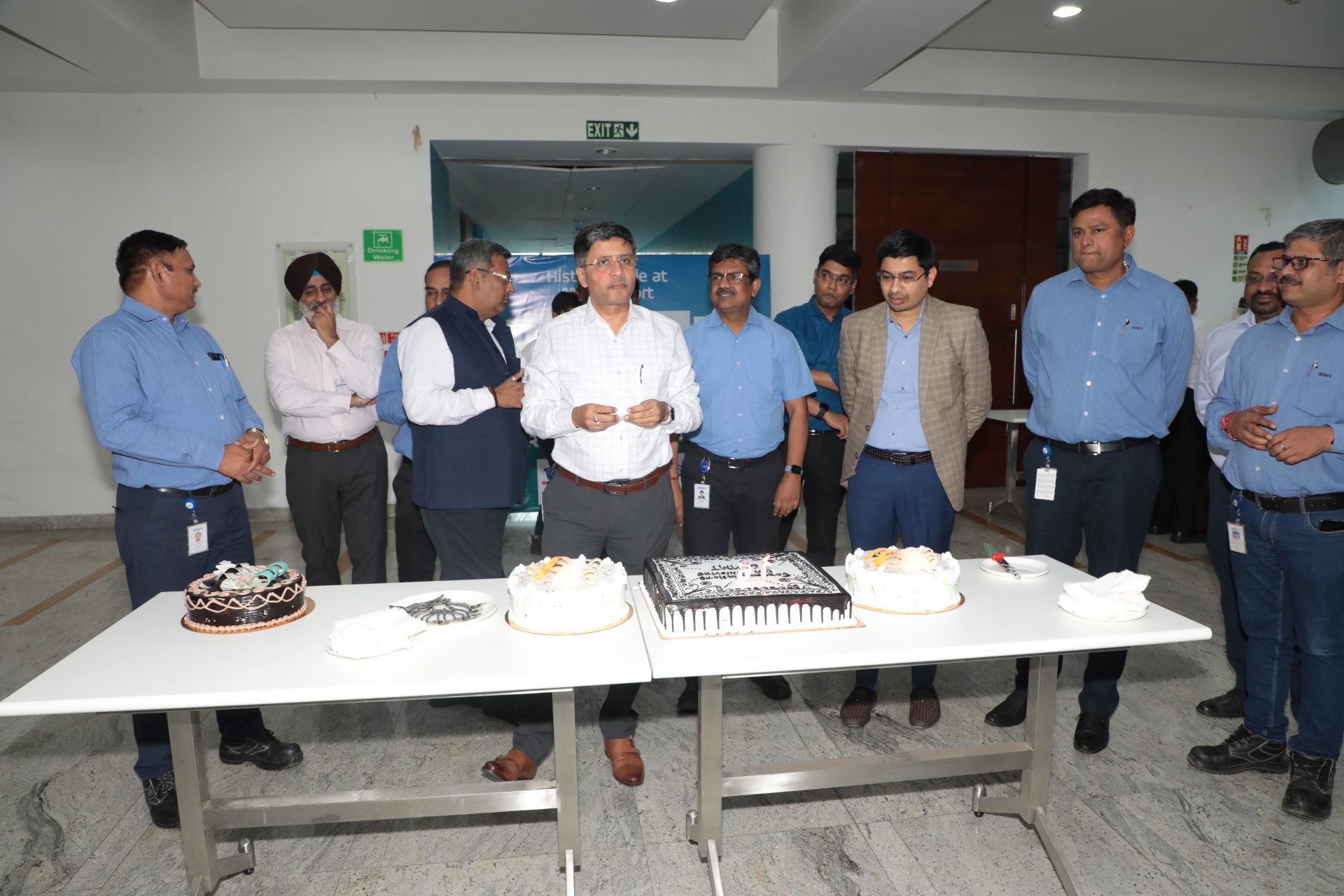
Looking ahead, Mundra Port is committed to an ambitious goal: handle 200 million metric tons of cargo by 2025.
video hub
Lights. Camera. Art.
Exploring Sathwaro through the lens
Satyavratsinh Jadeja
On 1 Nov, the Adani Foundation hosted Sathwaro, a two-day exhibition and sale featuring artworks and products crafted by artisans from across the nation. The showcased works included pieces by individual artisans, some of whom belong to the last families preserving these art forms. The Adani Foundation supports these artists to ensure their unique skills and cultural heritage endure for generations. The event also featured members of various Self-Help Groups (SHGs) supported by the Adani Foundation. Each artisan and SHG member at Sathwaro presented distinctive handmade products and artworks, including some rare forms of art at risk of extinction. Children from the Adani Vidya Mandir also contributed by putting up their impressive paintings for sale.
The Execution
The Adani Video Team comprehensively covered the two-day event, capturing everything from the setting up of stalls to the closing ceremony. The event commenced with the arrival of Dr Priti Adani and Shilin Adani, welcomed by students from the Adani Vidya Mandir with a beautiful song. A walkthrough video documented Sathwaro, following the guests of honour as they explored each stall and interacted with artisans. Interviews with all artisans and SHG members delved into their backgrounds and highlighted how partnering with the Adani Foundation made them self-reliant, transformed their lives and inspired those around them. Their confidence, strength and craftsmanship won the hearts of everyone, resulting in outstanding sales over the two days.
The Result
A highlight video showcasing the event's grandeur, from the inauguration to the concluding meeting, was created. Another video focused on the purpose and scope of Sathwaro. Personal interview reels and short videos featuring each SHG member and artisan's story will follow in the coming weeks.
Video Credits
Producer: Satyavratsinh Jadeja
Editor: Shailendra Kumar Pandey
Sound: Aadish Sai
Camera: Harish Kumar Sharma, Akash Joseph
Video Credits
Producer: Satyavratsinh Jadeja
Editor: Shailendra Kumar Pandey
Sound: Aadish Sai
Camera: Harish Kumar Sharma, Akash Joseph
Voice Over: Satyavratsinh Jadeja
The Balancing Act
Unwind, Reset and Rejuvenate
How to detox after a festive whirlwind 101.
lifestyle
Sania Ahmad
Festivals in India are many and always a joyous occasion. We Indians love our celebrations with family and friends. We love life and we pay tribute to it with every festival. Lavish meals, sweet delights, late-night revelry and merriment are standard trademarks. While it is important to enjoy every minute and make beautiful memories, it is also important to prioritise self-care and reinstate equilibrium and vitality to the mind, body, and soul.
Inhale positivity, exhale toxicity: The post-festivities period is the perfect time for introspection and contemplation. Step back from the whirlwind of activities and immerse yourself in moments of serene reflection. Contemplate the joys and memories forged during the festivities, expressing gratitude for shared moments with loved ones. This mental detox catalyses the cultivation of a positive mindset, fortifying resilience and preparing for the challenges ahead.
Nutritional Reboot: At the core of any festive detox lies a conscientious effort to reset dietary patterns. Following the indulgence of festive delicacies, opt for a day-long liquid detox. This not only helps with a digestive reset, it increases nutrient absorption, and hydration, and gives a boost to your energy level. Opt for nutrient-dense, whole foods that nourish the body. Infuse an abundance of fruits, vegetables, and lean proteins into your meals to replenish vital vitamins and minerals.
Stocking up on biotics: Excessive festive indulgence can adversely affect your gut health. The intake of sugar, fried foods, and spices may disrupt the balance in your gut. It is crucial to incorporate prebiotics and probiotics into your diet to mitigate these effects. Consider starting your day with a glass of water containing a spoonful of apple cider vinegar, having a bowl of yogurt after meals, or including pickled carrots or beetroots in your lunch or dinner. Additionally, incorporating high-fibre foods like bananas and strawberries into your diet promotes a balanced gut.
Bottoms up: We mean water. Lots of it. Hydration is crucial for a festive detox. It helps flush out the toxins accumulated from all the sumptuous meals you have sampled, and frequent trips to the minibar at home. Ample water intake promotes kidney function and revamps the digestive process. It also revitalises the skin that might be dulling due to all the sugar intake and regular make-up, and brings the glow back. Energy levels get a big boost, contributing to a refreshed and revitalised mind and body.
Yoga for the win: Yoga has, for centuries, been the best form of detox. Not only does it relax the body and the mind, it also helps with a toxin flush and recalibrates the body’s equilibrium. It is also a great way to keep those extra festive inches at bay.
Here are a few asanas to help you do a quick detox:
- Padahasthasana (Hand-to-Foot Pose) - Stimulates abdominal organs, aids digestion, and promotes blood circulation to the head, enhancing mental clarity
- Vasishtasana (Side Plank) - Engages core muscles, improves digestion, and detoxifies the organs, while also enhancing balance and strength for an overall cleansing effect
- Paschimottanasana (Seated Forward Bend) - Compresses abdominal organs, promotes digestion, and stretches the spine, thereby stimulating the kidneys and liver for an effective detoxifying impact
- Sarvangasana (Shoulder stand pose) - Enhances blood circulation to the thyroid and parathyroid glands, and helps promote hormonal balance and detoxification, while also calming the nervous system
- Siddha Walk - Involves mindful walking, promoting lymphatic drainage and circulation, facilitating toxin elimination, and bringing a meditative aspect to the detox process
- Halasana (Plough Pose) - Stimulates the thyroid gland, improves metabolism, and compresses the abdominal organs, aiding in detoxification and promoting a healthy digestive system
- Pranayama and meditation - Calms the mind, reduces stress, and enhances overall well-being
Ditch the gadgets: Amidst festivities, digital devices are constant companions for our shutter-happy Instagrammy selves. From reels to snaps and lives, our gadgets have become an important part of every celebration. Transitioning into a festive detox includes a digital detox as well. Dedicate specific periods to disconnect from screens, allowing your mind to unwind and recharge. That switching off from the constant stream of notifications, social media updates, and digital distractions, is important for overall mental health, and promotes good sleep and a quick rewind of the body.
Pamper yourself: Warm baths with Epsom salts and calming essential oils are just what you need for the final feel-good. Because nothing relaxes the muscles and soothes the senses better than a long shower with sandalwood essence and lavender oil. Don’t forget to incorporate dry brushing to stimulate the lymphatic system and revitalise the skin.
A festive detox epitomises a holistic approach to reinstating harmony in your mind, body, and soul after the whirlwind of celebrations. By embracing mindful practices, nourishing your body with wholesome foods, and incorporating rejuvenating rituals, you lay the foundation for a vibrant and balanced start to the coming days. This is the time to welcome self-care and renewal, and recognise that complete well-being is a continuous, evolving process.
happenings

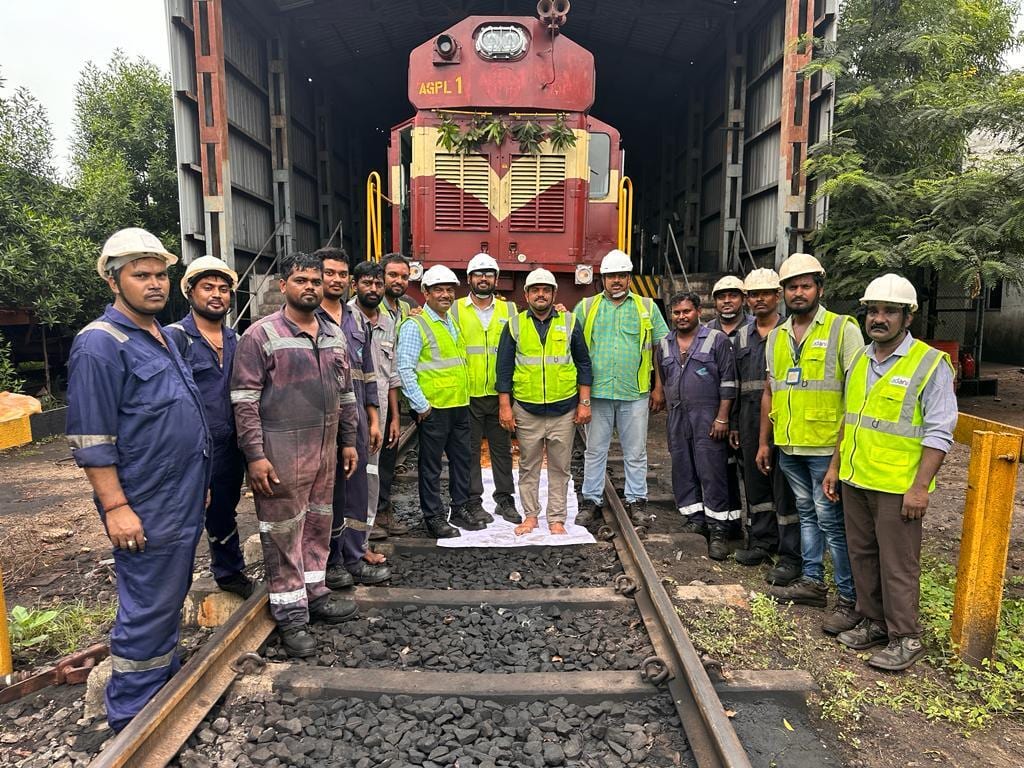

Natural farming is the cornerstone to usher prosperity in rural areas and the Adani Foundation is committed to support community members to farm responsibly and sustainably, while boosting the quality of crops as well as their incomes.
Recently, the Adani Foundation had the honour of welcoming the Governor of Gujarat Mr Acharya Devvrat at Nana Kapaya village in Mundra, Gujarat. He graced a workshop focussed on natural farming and visited one of the model farms. His inspirational words resonated with the 2,000+ farmers who had gathered from various parts of Kutch. His invaluable insights and visionary approach further fortified their shared commitment to the principles of natural farming.
In a remarkable display of youthful talent and determination, two U-14 schoolboys have etched their names in the annals of cricket history by establishing an all-India highest partnership record for the opening wicket, amassing an astonishing 641 runs in the U-14 Inter School Cricket Tournament. This record was set in the current Cricket Season 2023-24 by teen batsmen Naman Dash and Yajanaey Pathak. Naman Dash is the son of Mr Rakesh Dash, Head of ENOC (Energy Network Operation Centre) for APL, AGEL and AESL business at Adani Corporate House - Ahmedabad.
The Dash-Pathak partnership's total of 641 runs, set on 26 Oct 2023, nearly broke the record of one of Indian cricket’s most famous batting pairs — Sachin Tendulkar and Vinod Kambli. In 1988, Tendulkar and Kambli piled up 664 runs for the third wicket, which, until 2006, remained the world record for most runs from a partnership for any wicket in any class of cricket.
Both these prodigious new-generation talents, Naman and Yajanaey, are currently in the eighth grade at Shree Vidyanagar School, under the guidance of the principal, Bhumika Kapasi. Ms Kapasi actively encourages and champions the idea of children actively pursuing careers in sports, with a particular emphasis on cricket.
Naman and Yajanaey’s cricketing journey is being nurtured at the prestigious M’power Cricket Academy, under the expert tutelage of Mr Sumer Singh, an ICC Level III certified coach renowned for transforming aspiring cricketers into professionals.
Naman embarked on his cricket journey at the age of 8, while residing in Dubai. Initially a fast bowler and a reliable opening batsman, Naman’s evolving passion led him to assume the role of a top-order batsman.
Following his family’s relocation from Dubai to Ahmedabad, Naman further honed his skills through coaching at Adani Sportsline in the Adani Shantigram facility. Subsequently, the family moved closer to the SP Stadium in Navrangpura, providing Naman with greater access to cricketing opportunities.
Notably, Naman possesses an ardent love for fielding and boasts an ambidextrous ability to bowl with either hand, a unique skill that he enjoys perfecting during his leisure hours. His ultimate dream is to represent his country at the highest level, a testament to his unwavering dedication to the sport.
Naman Dash and Yajanaey Pathak’s record-breaking achievement is a testament to their commitment and promise, and they are poised to leave an indelible mark on the world of cricket. Watch out for these rising stars as they continue to ascend in their cricketing journey.
In a bid to streamline cargo handling process, Adani Gangavaram Port inducted two locomotives into its operational fleet. Situated as an all-weather port with multi-modal connectivity, Adani Gangavaram Port has been making substantial investments in expanding and enhancing its internal railway network. With the addition of these locomotives, the total count of diesel locomotives at the port has now reached nine, effectively boosting the port’s railway capacity to an impressive 30 million metric tons per annum (MMTPA). These locomotives are set to play a pivotal role in elevating operational standards and enhancing the overall efficiency of the Adani Gangavaram Port, which operates under Adani Ports & Special Economic Zone.
Adani Gangavaram Port continues to be a beacon of innovation and efficiency in India’s maritime landscape, and the induction of these two locomotives further solidifies its commitment to enhancing the nation’s trade and logistics infrastructure.
Karaikal Port makes history! On 30 Oct 2023, the port achieved a groundbreaking milestone by successfully berthing its largest-ever vessel — a Capesize Vessel boasting a substantial 13.60 m draft. This accomplishment stands as a testament to the port’s steadfast dedication to growth and operational efficiency. The exceptional skills of the dynamic team take centre stage, representing a defining moment in the port’s illustrious legacy.
This monumental feat not only cements Karaikal Port’s position as a maritime powerhouse but also propels regional trade to unprecedented heights, emerging as a cornerstone for economic expansion.



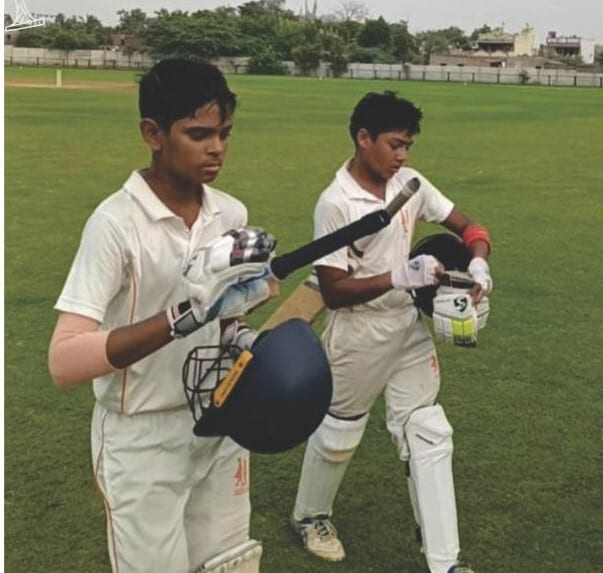

Naman Dash and Yajanaey Pathak (L-R)
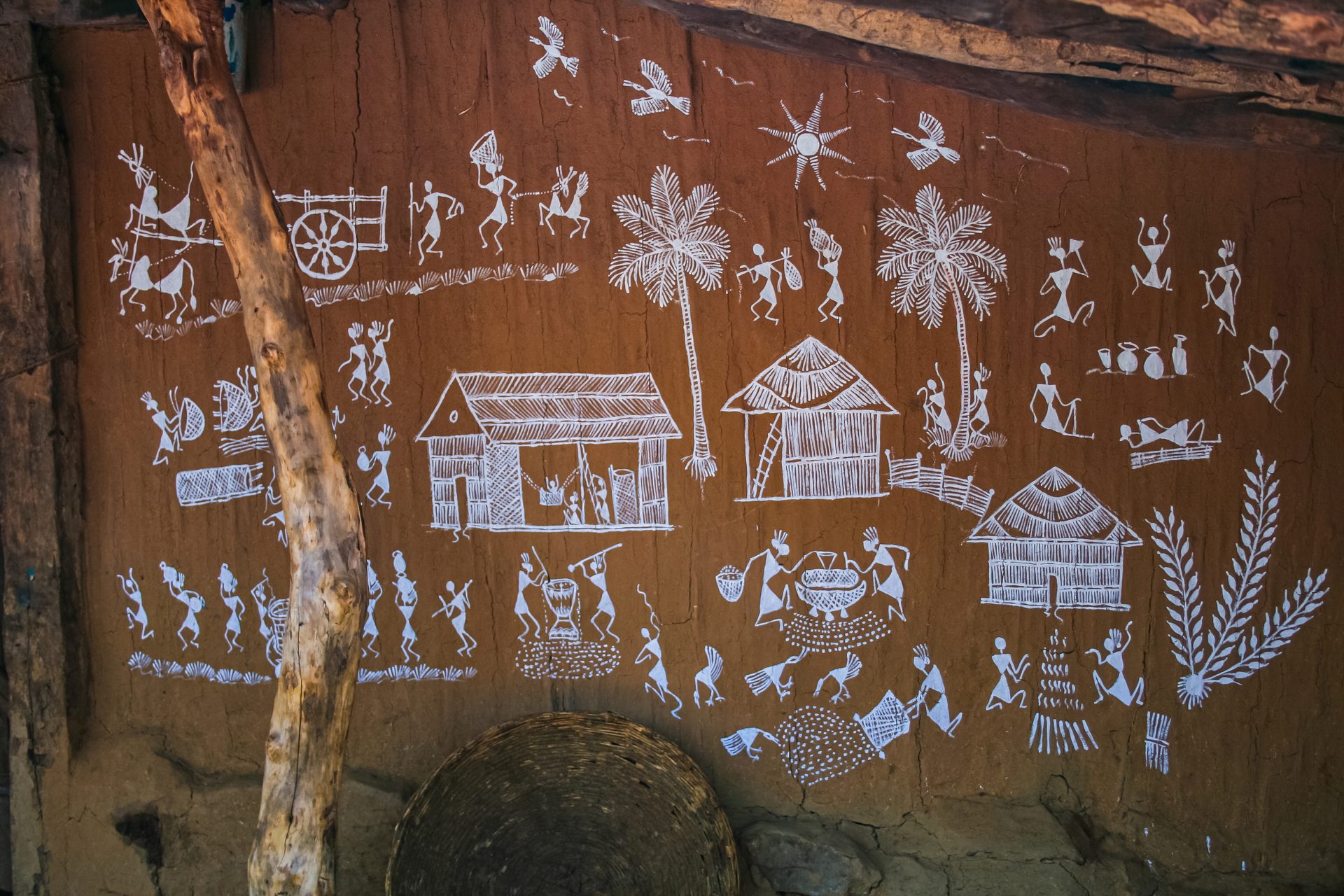
Warli paintings are created by the Warli tribe of India. They are known for their simple geometric shapes and earthy colours.

Maasai beadwork is created by the Maasai people of Kenya and Tanzania. They are known for their colourful and intricate designs.
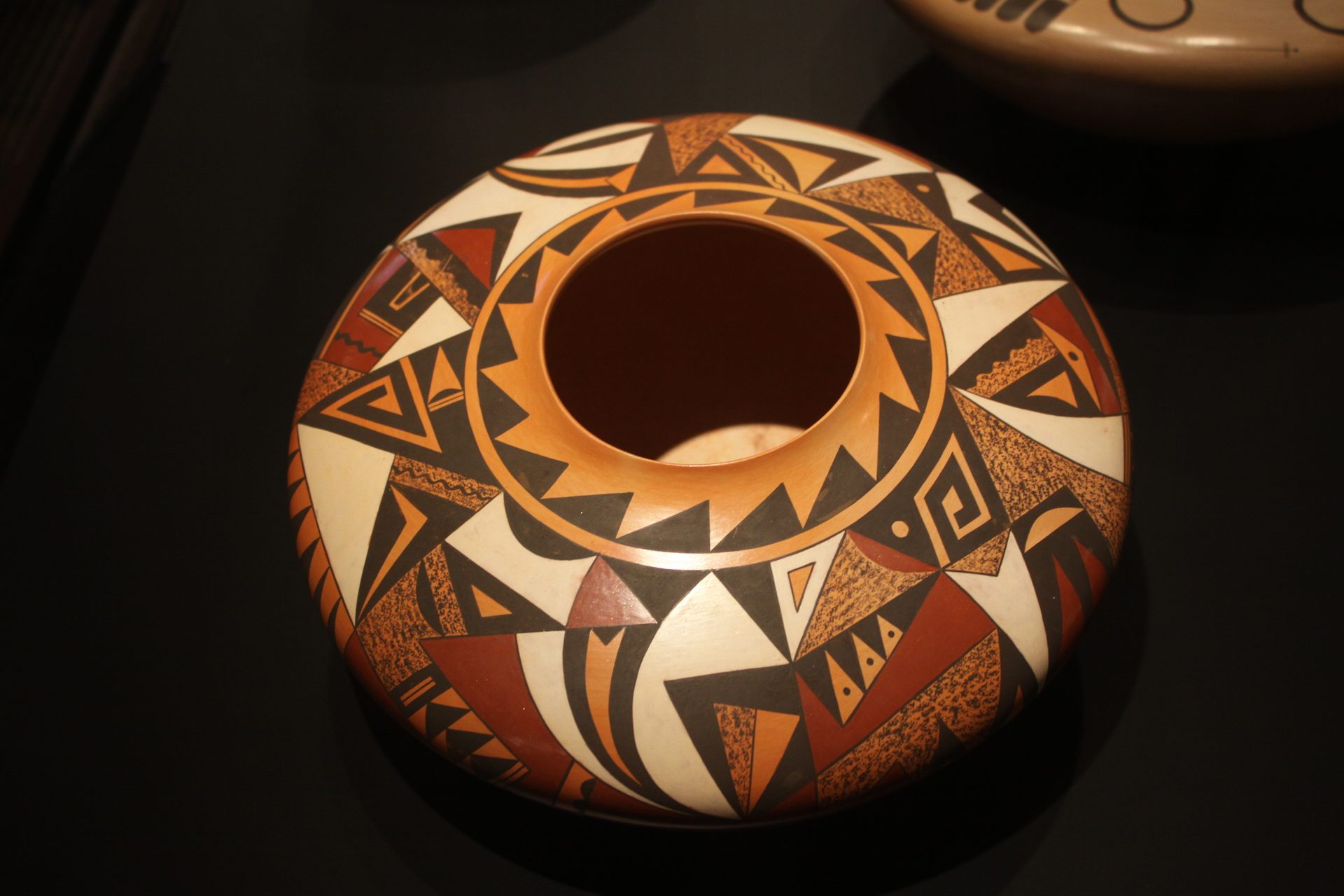
Hopi pottery is created by the Hopi people of the American Southwest. They are known for their traditional designs and black-on-white colour scheme.

Alaskan Native basketry is created by the indigenous peoples of Alaska. It is known for its unique designs and use of natural materials.
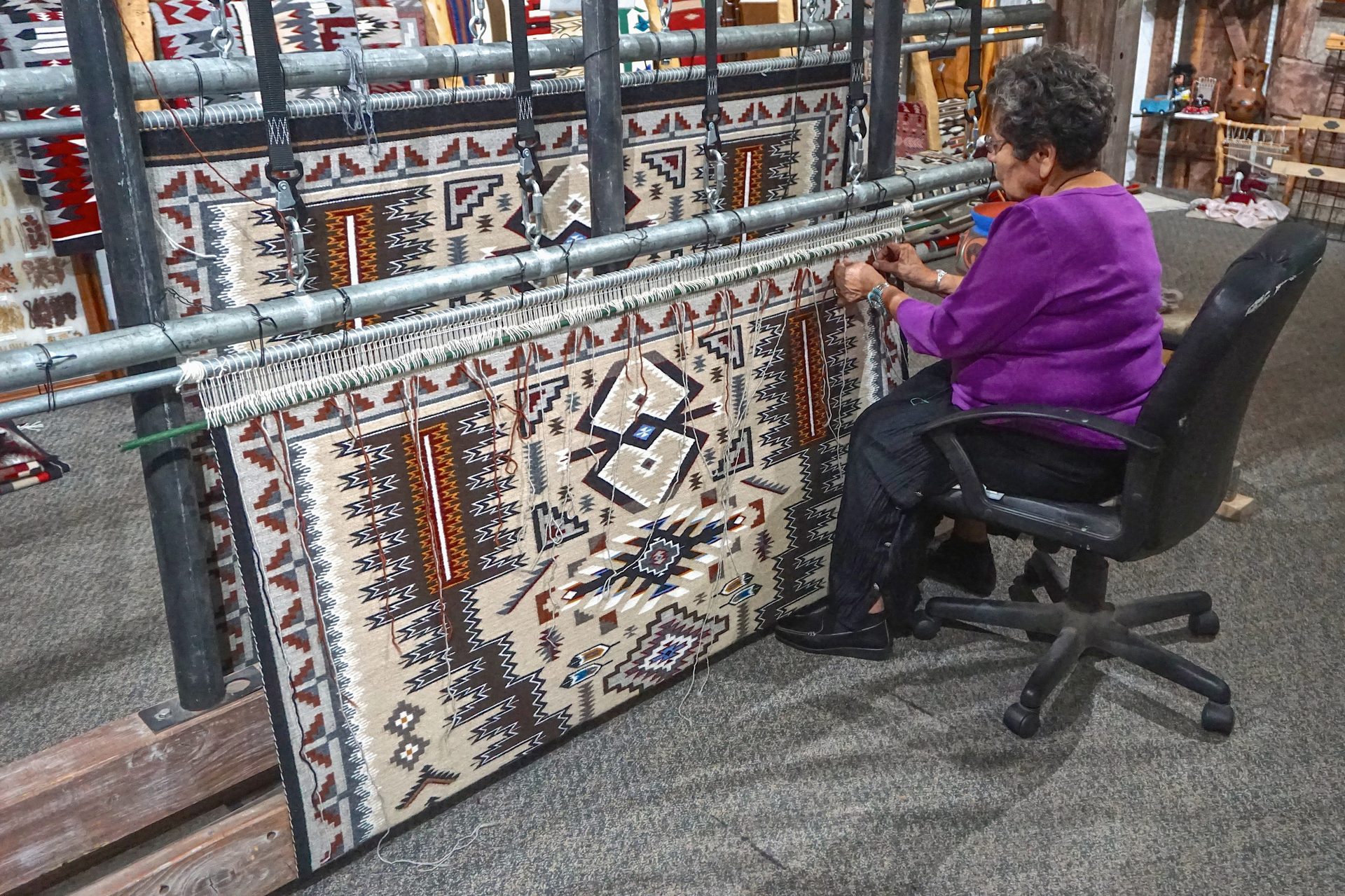
Navajo rugs are created by the Navajo people of the American Southwest. They are known for their intricate patterns and vibrant colours.

Australian Aboriginal dot paintings are created by the Aboriginal people of Australia. They are known for their use of dots to create intricate designs.
your corner
Unleash your creativity.
Send in your original contributions to connect@adani.com
Please do not forget to attach relevant details.
Early Man Caves
Archit Khare
Natural Resources, AEL
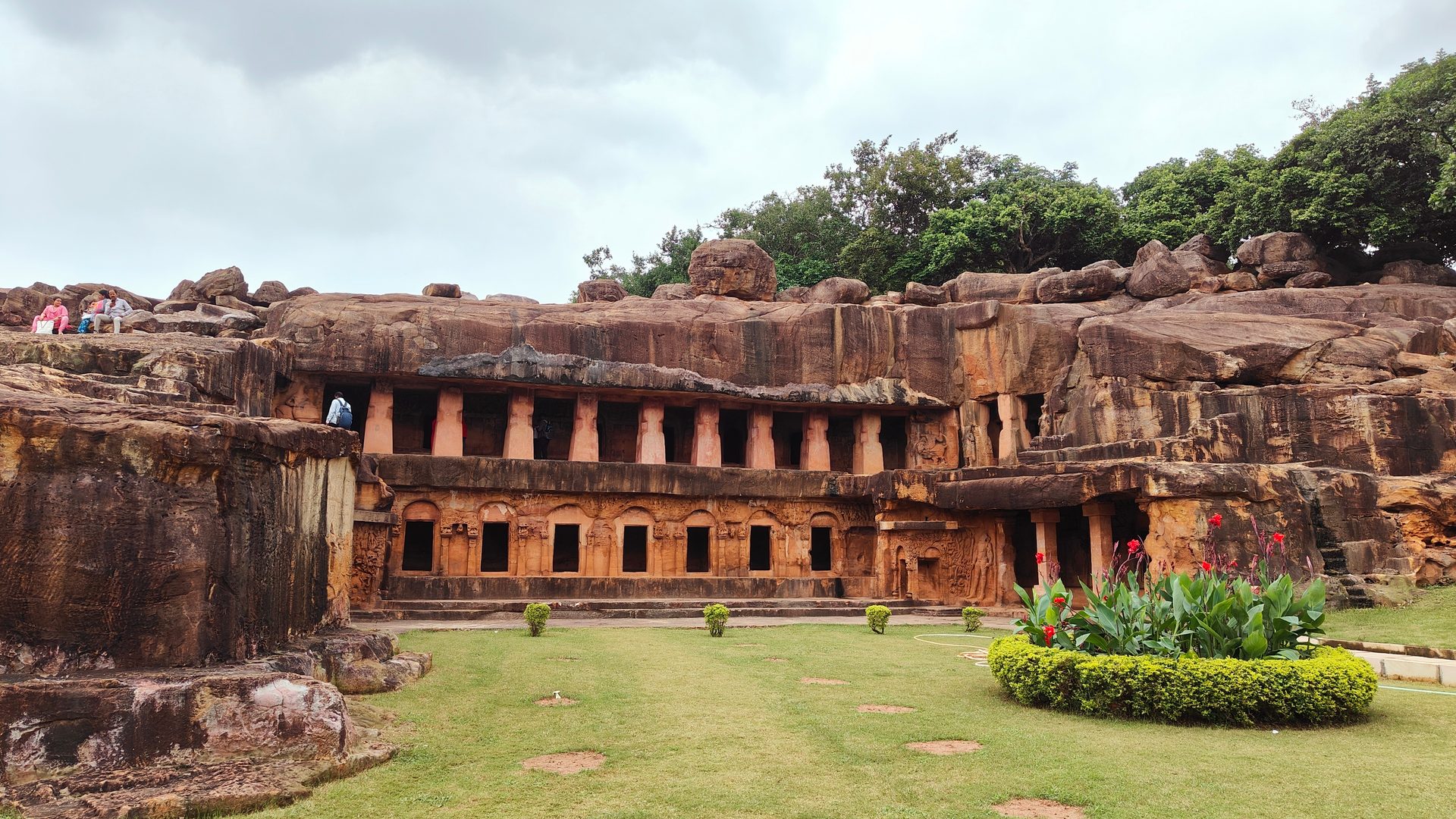
Over the sea and under the sky
Umang Dave
APSEZ

Float On
Bino Mathew
Rail Operations

On The Horizon
Paras Nath Mishra
Dredging, APSEZ
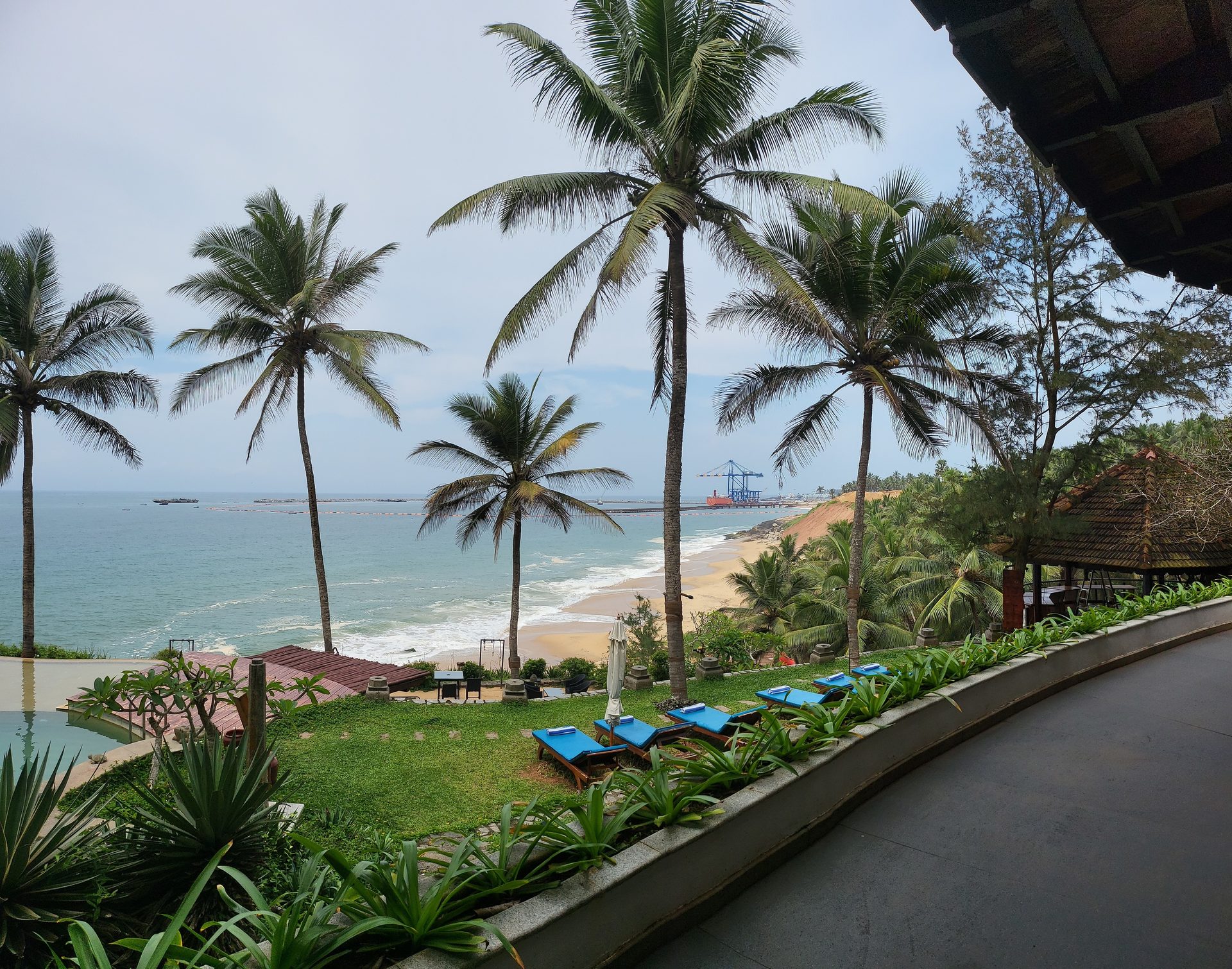
The Stunning Jama Masjid
Abhijeet Mahapatra
ABEX

Are We There Jet?
Capt Dhvanit Raval
KAPL

A Content Abode
CA Chandani Samtani
Group Data Governance & Control
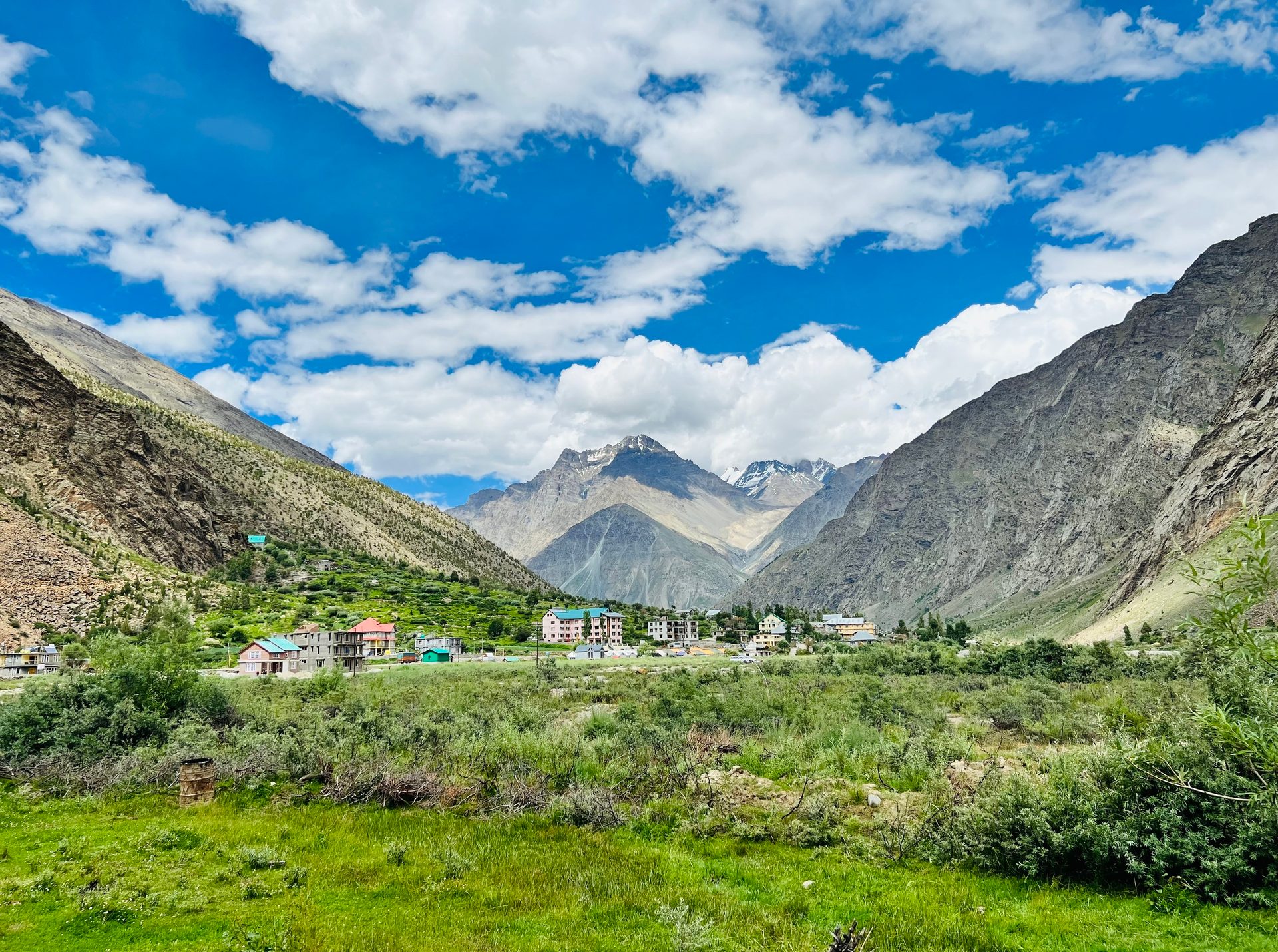
Unveiling the Heart of Adani
a-connect serves as an invaluable publication, providing profound insights into the activities and highlighting the dynamic nature of the Adani Group. I really got into the article about Mundra Ports and its 25-year journey—it was pretty impressive. The article meticulously outlined the noteworthy milestones and achievements accomplished by Mundra Port over the past quarter-century.
Moreover, the exploration of the Adani Foundation's origins, initially established as the ‘Shantilal Bhudarmal Adani Charitable Trust’, added a fascinating historical dimension. The Foundation is a big part of the Adani Group's efforts to do good things, like helping out with charity and community projects. The coverage was pretty eye-opening and makes one feel inspired.
Anisha Pamnani
Compliance, Adani Enterprises
Elevating Engagement
a-connect is an excellent magazine that keeps us informed about company updates, showcases Adani's achievements, and offers a diverse range of content, from informational pieces to enjoyable reads. It has become a valuable resource for all of us in the company.
Ravi Pamnani
Rail Operations, Adani Logistics
Inspiring Content
I wish to express my deep appreciation for the thought-provoking and well-crafted articles featured in each monthly issue of a-connect. It is truly remarkable and inspiring to delve into the success stories and life experiences of our fellow colleagues. I eagerly anticipate more enriching narratives and look forward to immersing myself in them every month.
Aishwarya Ramanan
KAPL
Integrated Information
The magazine serves as a compelling testament to the dedication of every individual within the Adani Parivar. It offers a comprehensive bird's-eye view of the latest happenings within the organisation, providing readers with valuable insights into the diverse facets of our dynamic company.
Each edition of a-connect is a captivating journey, filled with incredible content that consistently captures my attention. The inclusion of various perspectives and the stories of perseverance from individuals across different locations truly showcase how our organisation is making a significant impact on its commitment to nation-building.
I must also applaud the decision to make the magazine available in a digital format that we can share with friend and family, facilitating convenient access for readers. This forward-thinking approach aligns with the modern era and enhances the overall reader experience.
Sagar Thakar
Dredging, Adani Ports and SEZ
Building Bonds
Repeatedly, a-connect demonstrates its transformative influence. The in-depth interviews featuring esteemed members of the Adani Group, coupled with glimpses into their personal lives through beautiful pictures, truly foster a profound sense of connection for each reader. The tireless efforts and dedication exhibited by the CBC team are truly awe-inspiring and commendable. Your commitment to excellence is evident, and I encourage you to continue the outstanding work. Thank you.
Abhiraj Nair
Projects Planning & Control, Adani Logistics
Building Connection
a-connect fosters a strong sense of connection among employees, creating a profound feeling of belonging. It ensures we remain abreast of the latest news and business developments, effectively reflecting our company's distinctive culture.
Bhavdeep Makwana
Legal, Adani Enterprises
letters

Keep the feedback flowing. We value every letter from you.
We’d love to hear More from you!
a-connect is your magazine.
We are committed to providing you informative and engaging content through a-connect. To do this, your insights and feedback are crucial.
As we strive towards excellence, we value your inputs. We want to know what you liked, what you did not, and how we can improve.
We would love to keep hearing from you on what more we could cover, explore or highlight in a-connect. Are we missing something? Is there a particular topic you would like to learn more about? Are there any trends you would like us to follow?
Your suggestions will help us to deliver the content most relevant to you. Please connect with us. We will publish a selection of the comments we receive.

